As I mentioned in the first post about my trip, my main goal on this trip was to see some of the Scottish islands. I especially wanted to see the Orkney Islands, the Outer Hebrides, and the Isle of Skye (since I’ve now seen those, there are a few more I want to visit someday). While the Isle of Skye is easily accessible, the others (the Orkney Islands in particular) are a bit harder to get to. I didn’t want to rent a car and drive through some very remote parts of Scotland on my own, so I booked a 10-day tour with Rabbie’s. They have several other island tours, of various lengths; I chose this one because it included the places I most wanted to go and was still in my budget (I would have done the 17-day one if I had the funds and time!).
For the first five days of the tour, I joined a group of 5 other travelers (2 were doing the whole 10-day trip with me; the others were only doing 6 days) and our driver-guide, Jim.
DAY 5: Loch Lubnaig, Glencoe, Fort Augustus, Inverness
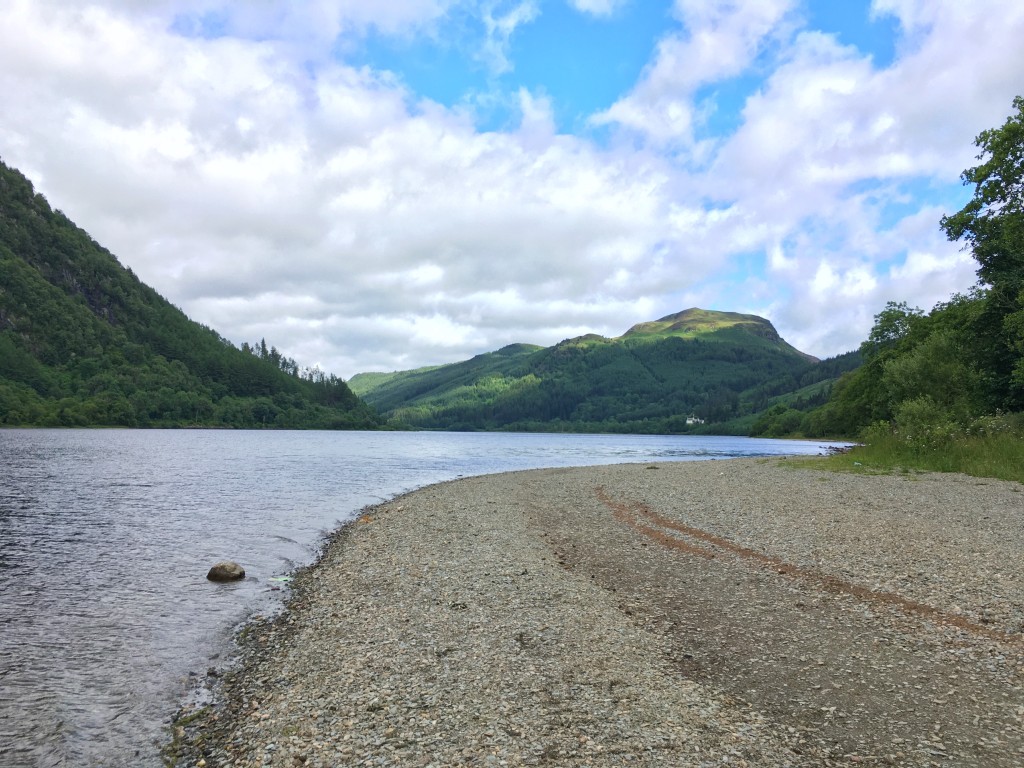
We departed Edinburgh in the early morning, and headed towards the Highlands. Our first stop of the day was at Loch Lubnaig. Scotland is home to thousands of lochs. We had time to get some hot drinks and walk along the lake briefly. Considering it was July, it was a brisk morning.
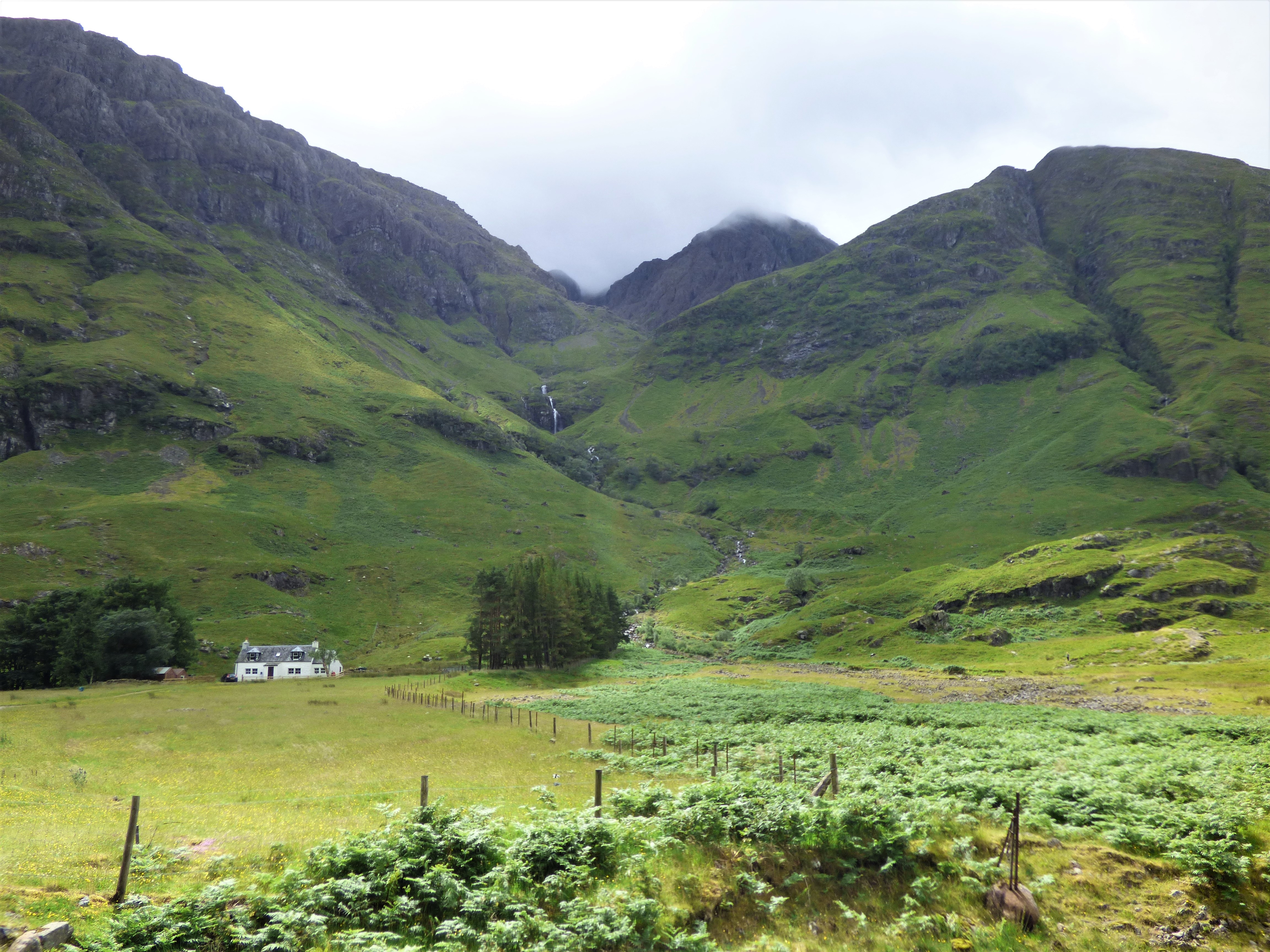
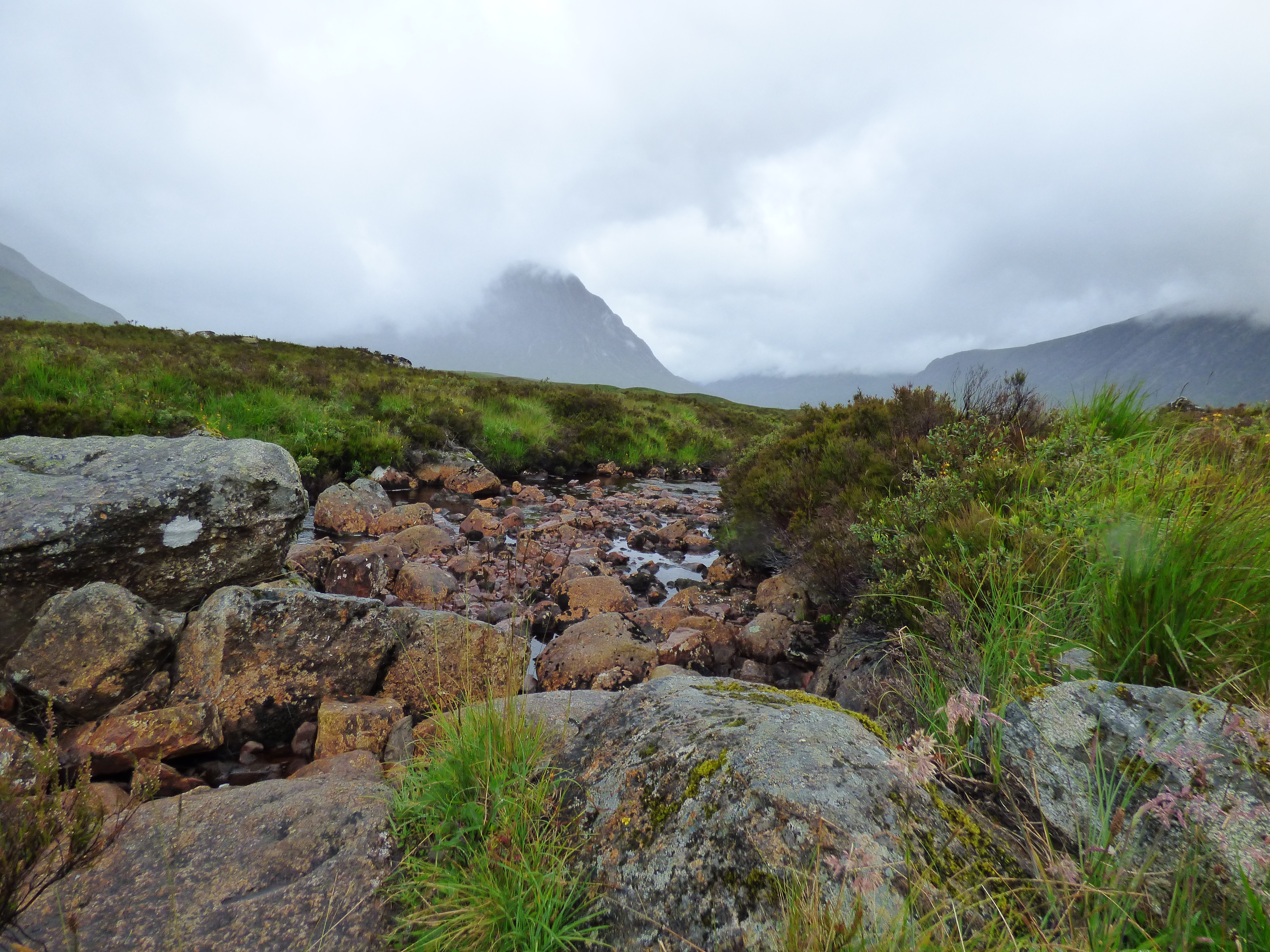
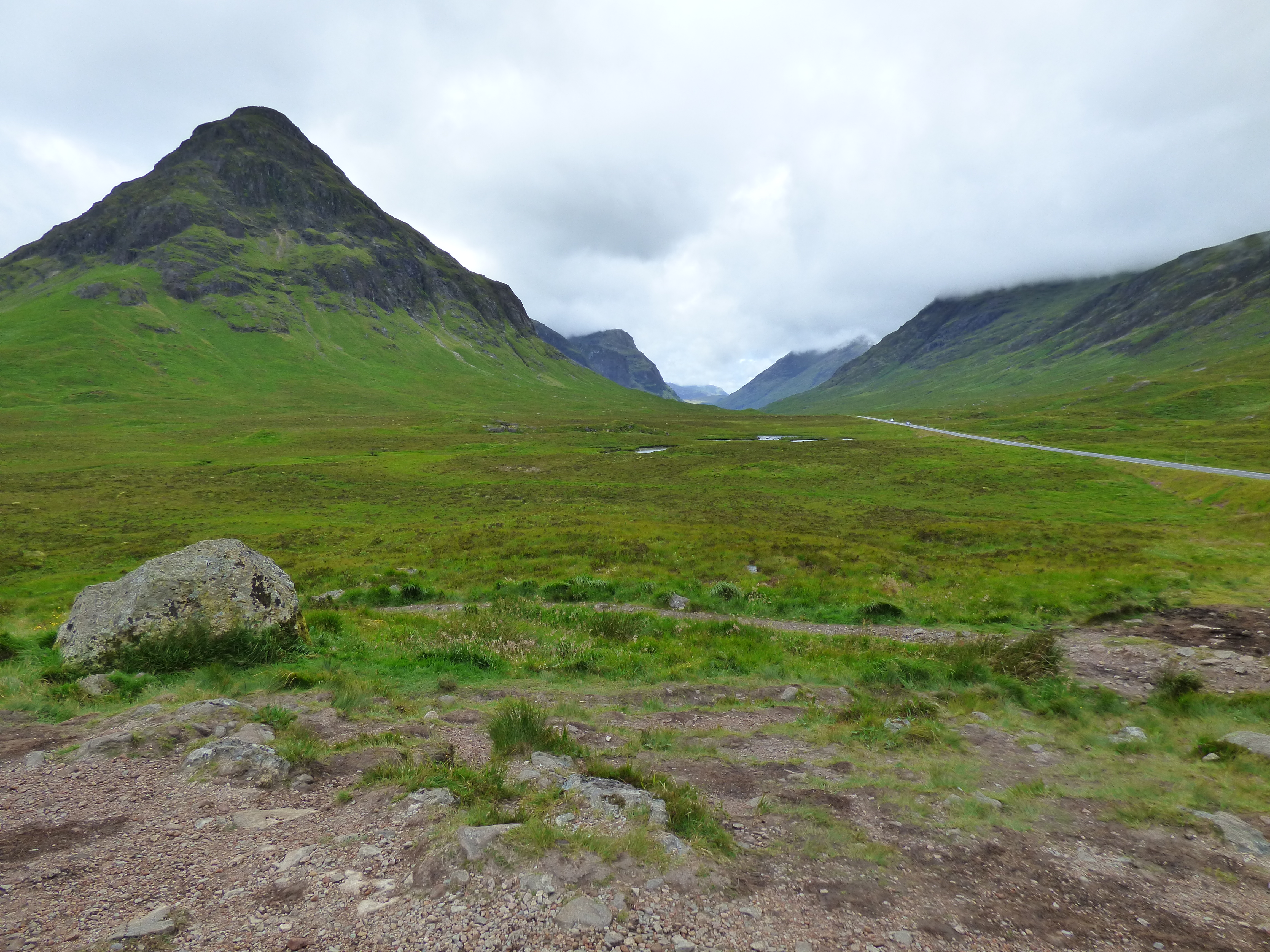
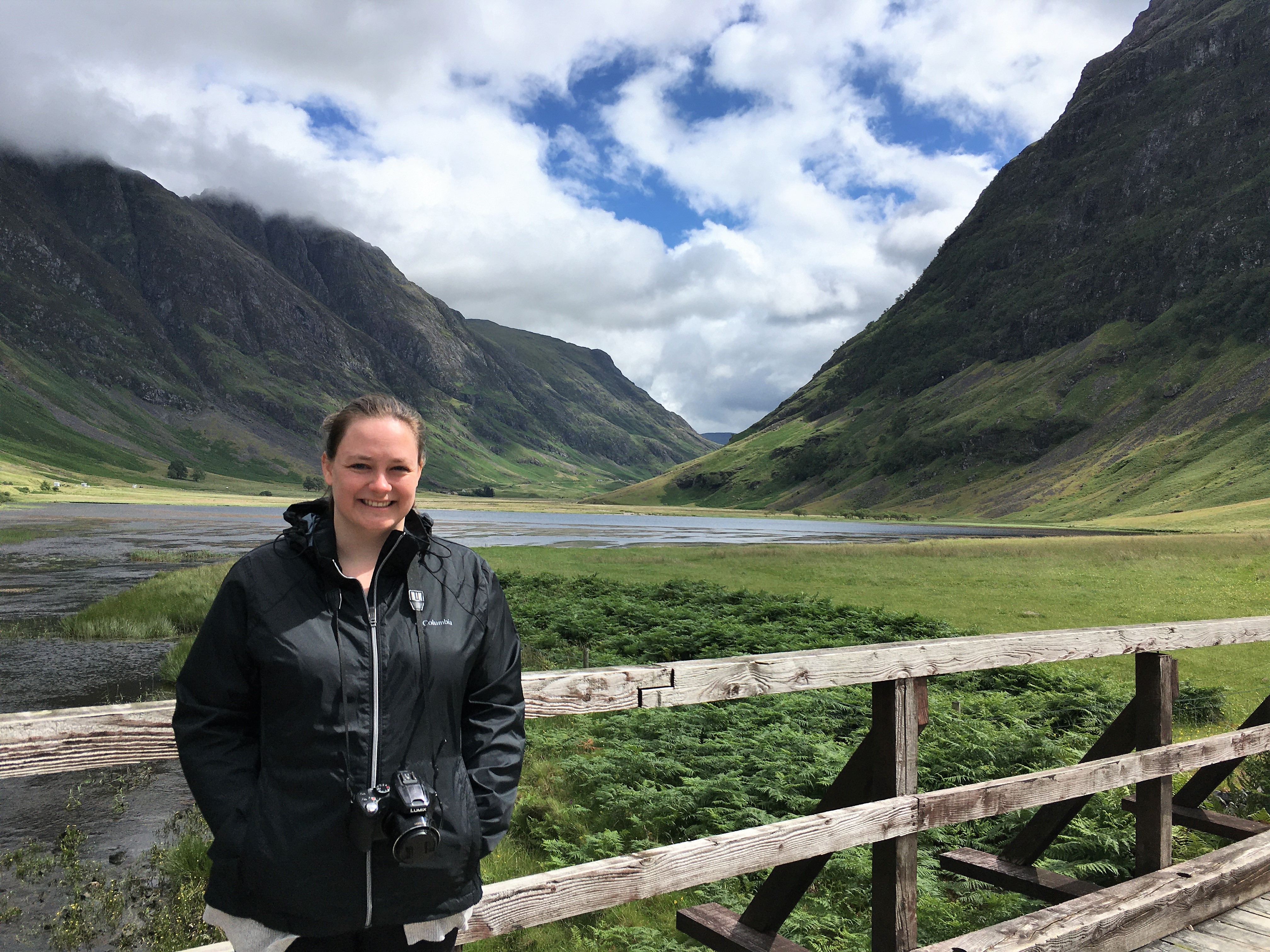
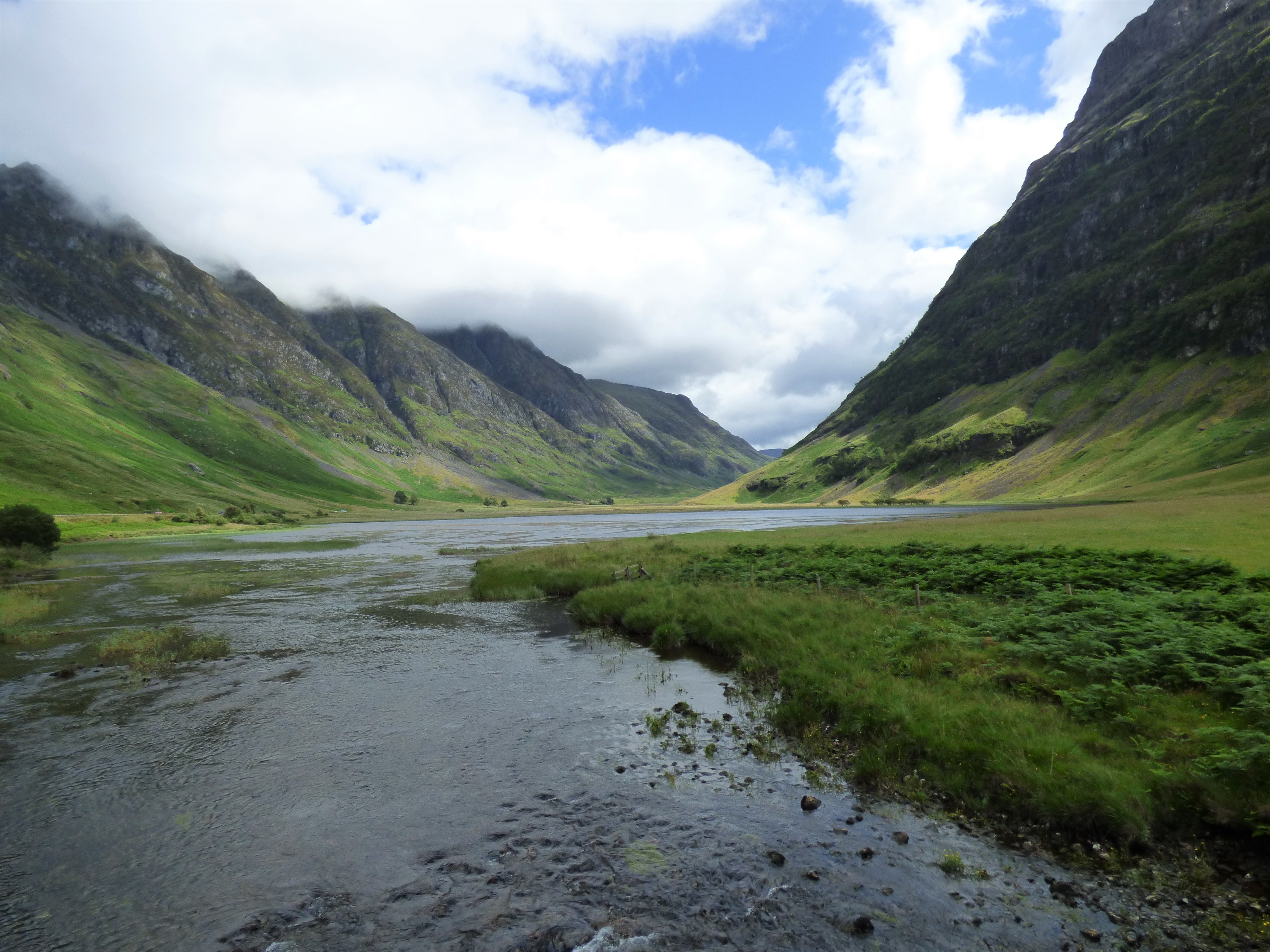
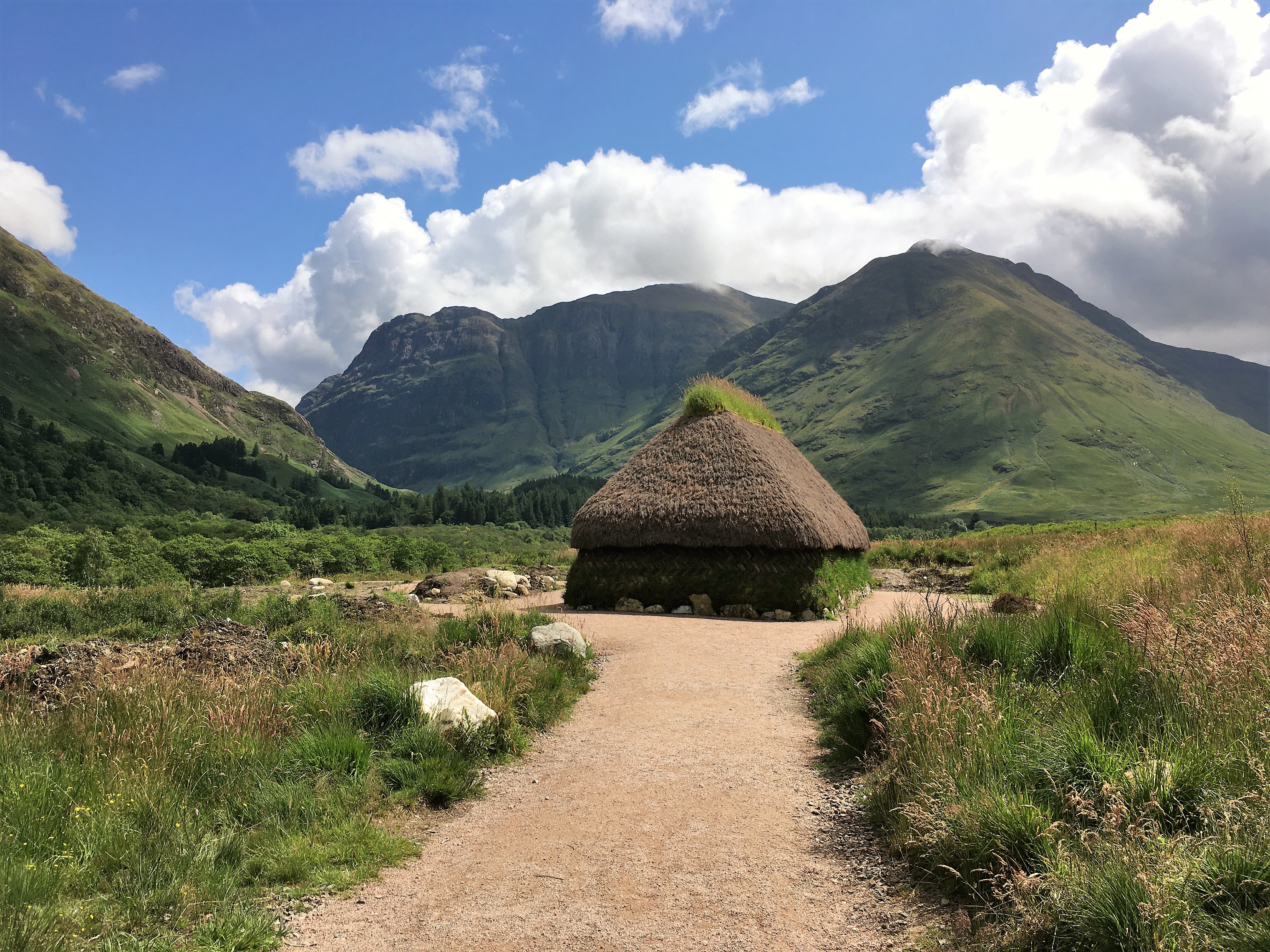
We continued on our way, stopping next in the Glencoe valley. In Scot’s Gaelic, “glen” means a deep valley. This was my second time seeing Glencoe, but that didn’t diminish the sense of awe when taking in the scenery. It’s absolutely beautiful. We stopped at a few different places to get some different views, including by the famous shepherd’s house. We had lunch at the Glencoe Visitor Centre, where we also had the chance to look at one of the traditional creel house replicas that has been built there.
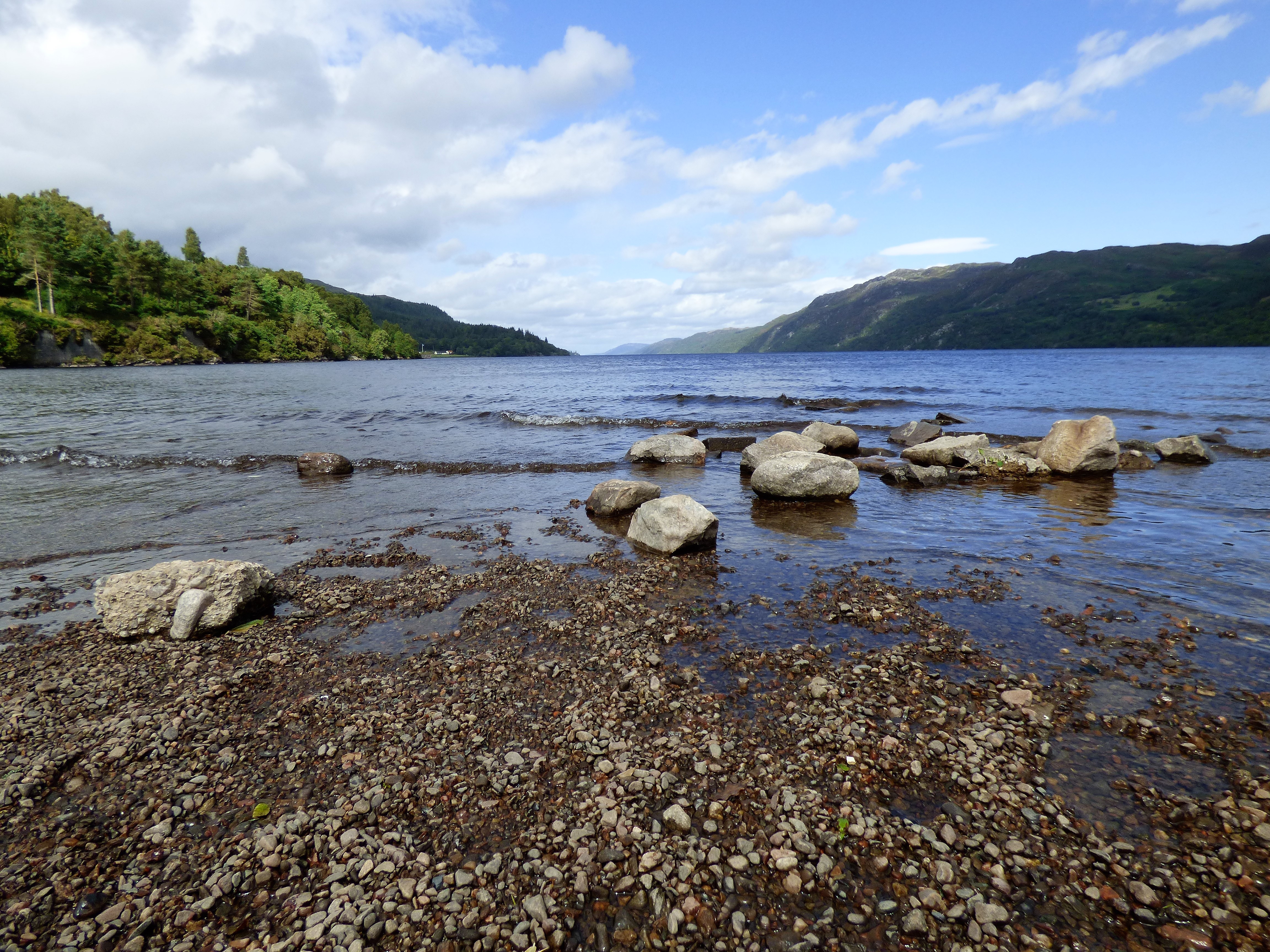
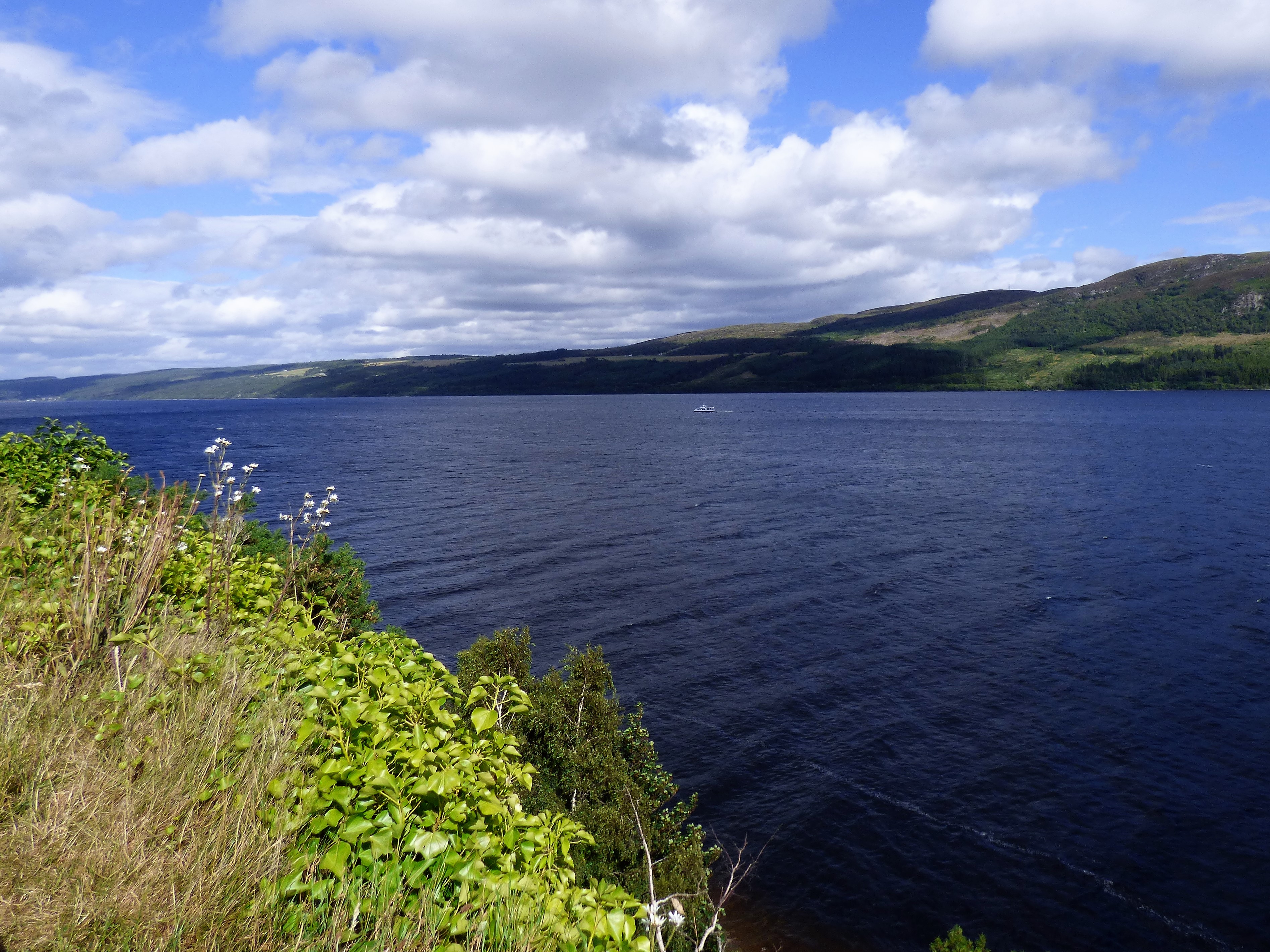
After lunch, we headed towards Fort Augustus, which is a small town on the shores of Loch Ness. I walked around the town and along the shore with one of my new friends. It’s a charming town, with lots of small shops and a series of canals through the center of the town. Loch Ness is the largest loch in Scotland by volume.
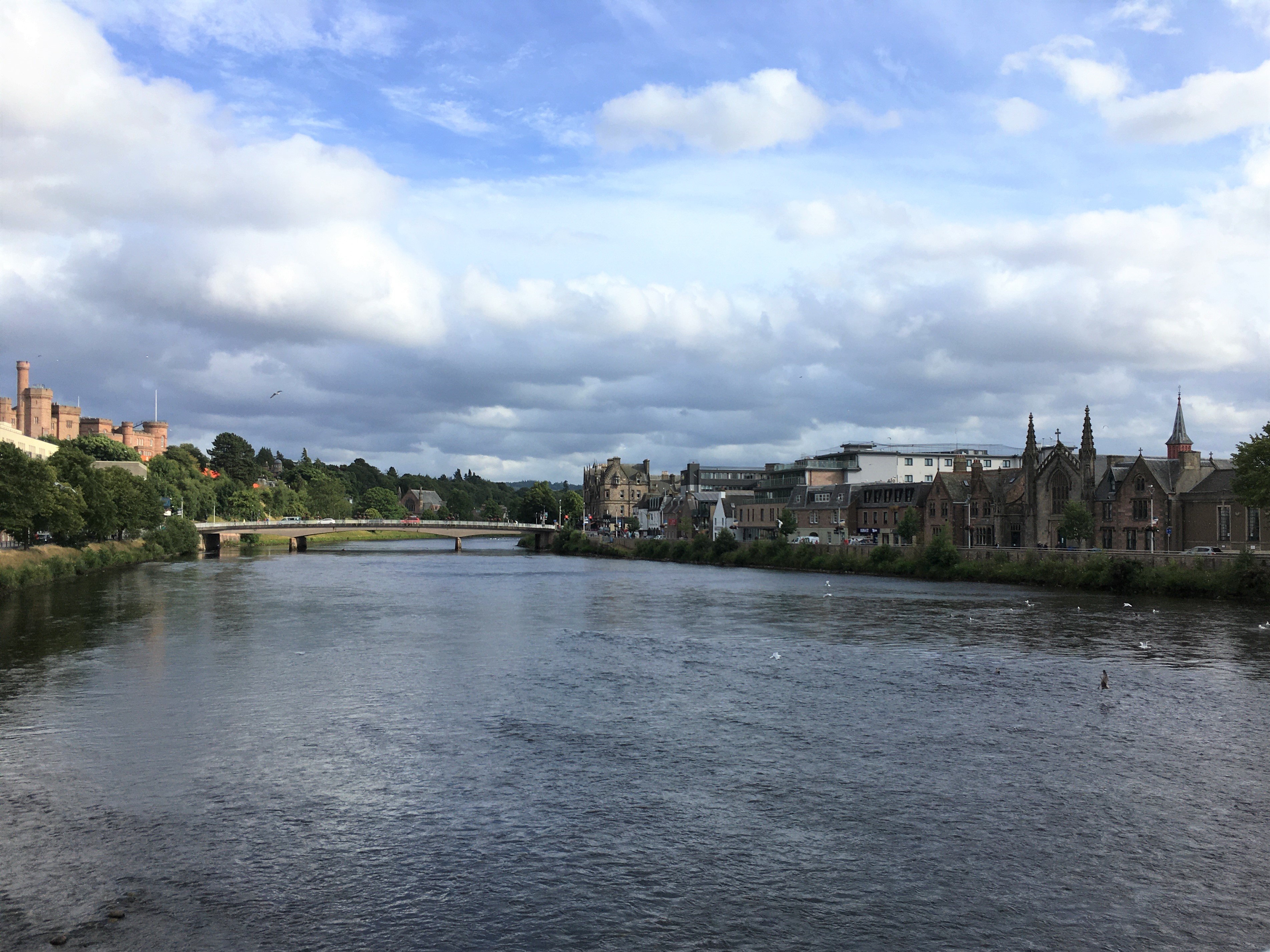
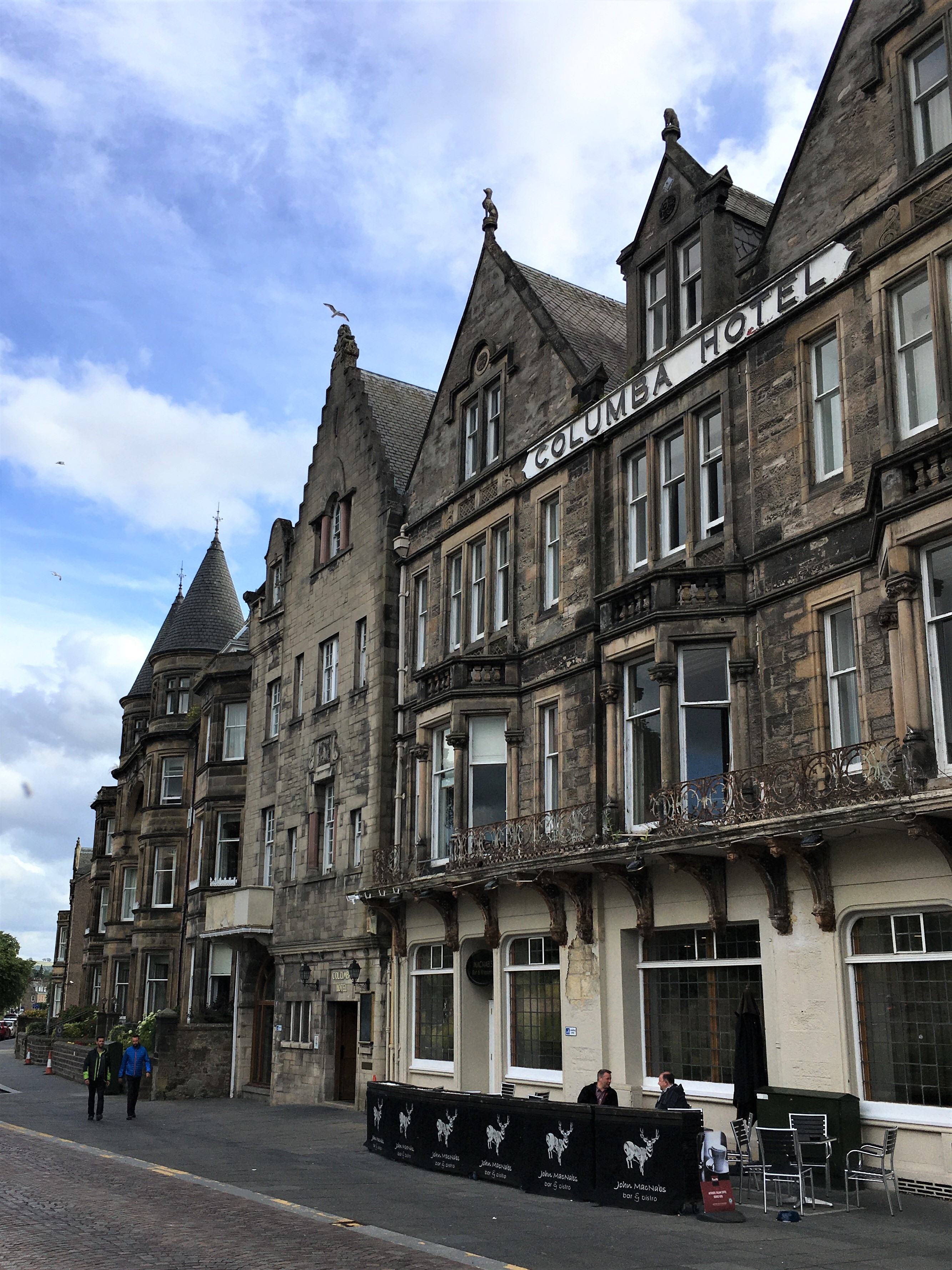
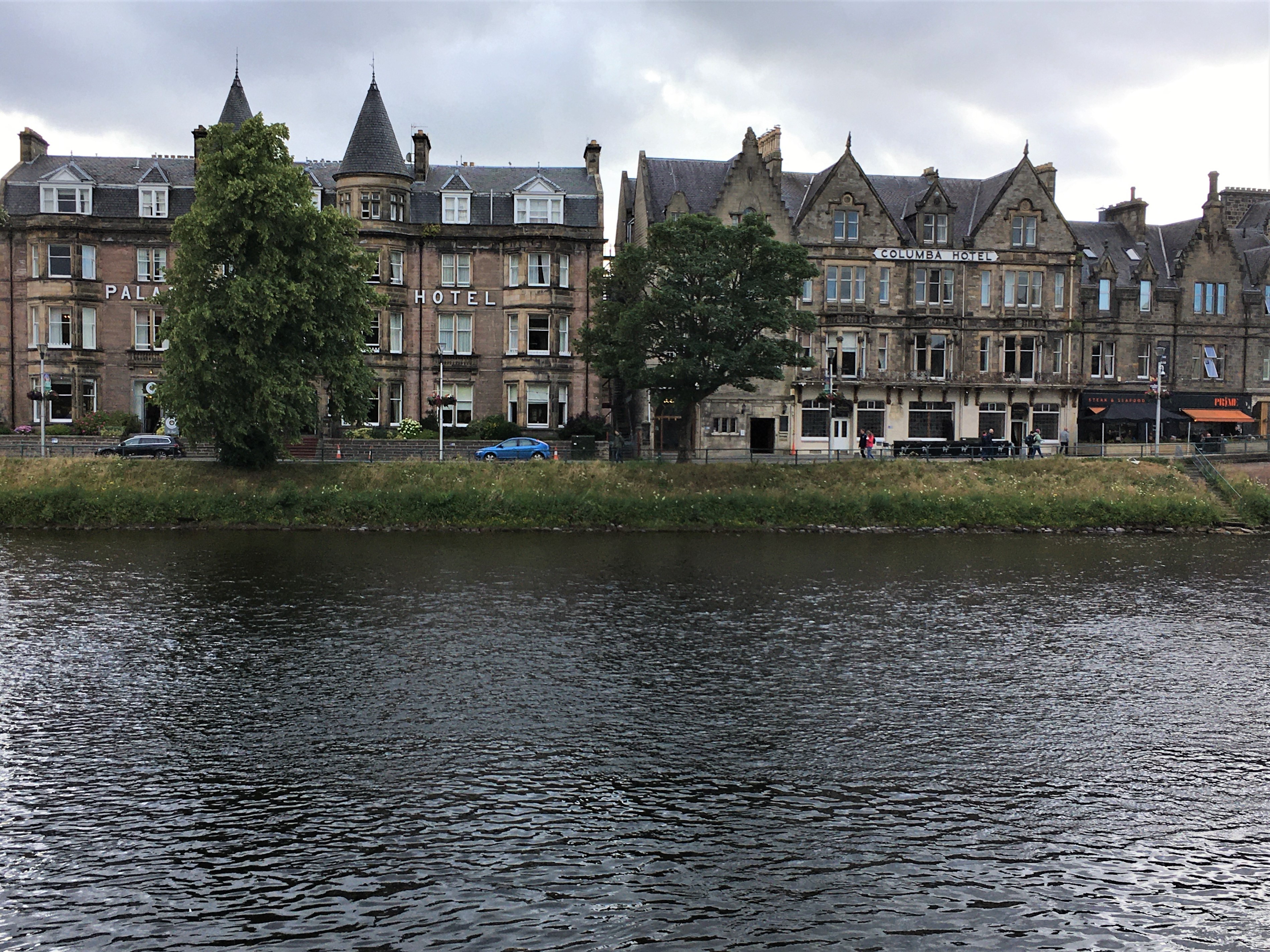
We then made our way towards Inverness, known as the capital of the Highlands, where we would be staying the night. I had spent a night in Inverness on my 2018 trip, and hadn’t been especially impressed. In retrospect, I think the problem was that we had arrived after dark, so it was hard to actually see the city. This time, I enjoyed it a lot more. We arrived early evening and were dropped off at our accommodations. I actually ended up in the same bed and breakfast as my first trip! I spent the evening walking down to the river and making a big loop, walking across one suspension bridge and coming back across the other one. It was warm and sunny, and the walk along the river was very pretty (though walking across the suspension bridges was a little scary!).
day 6: northern scotland, dunnet head, old man of hoy, ferry to orkney islands (scapa flow, italian chapel, kirwall)
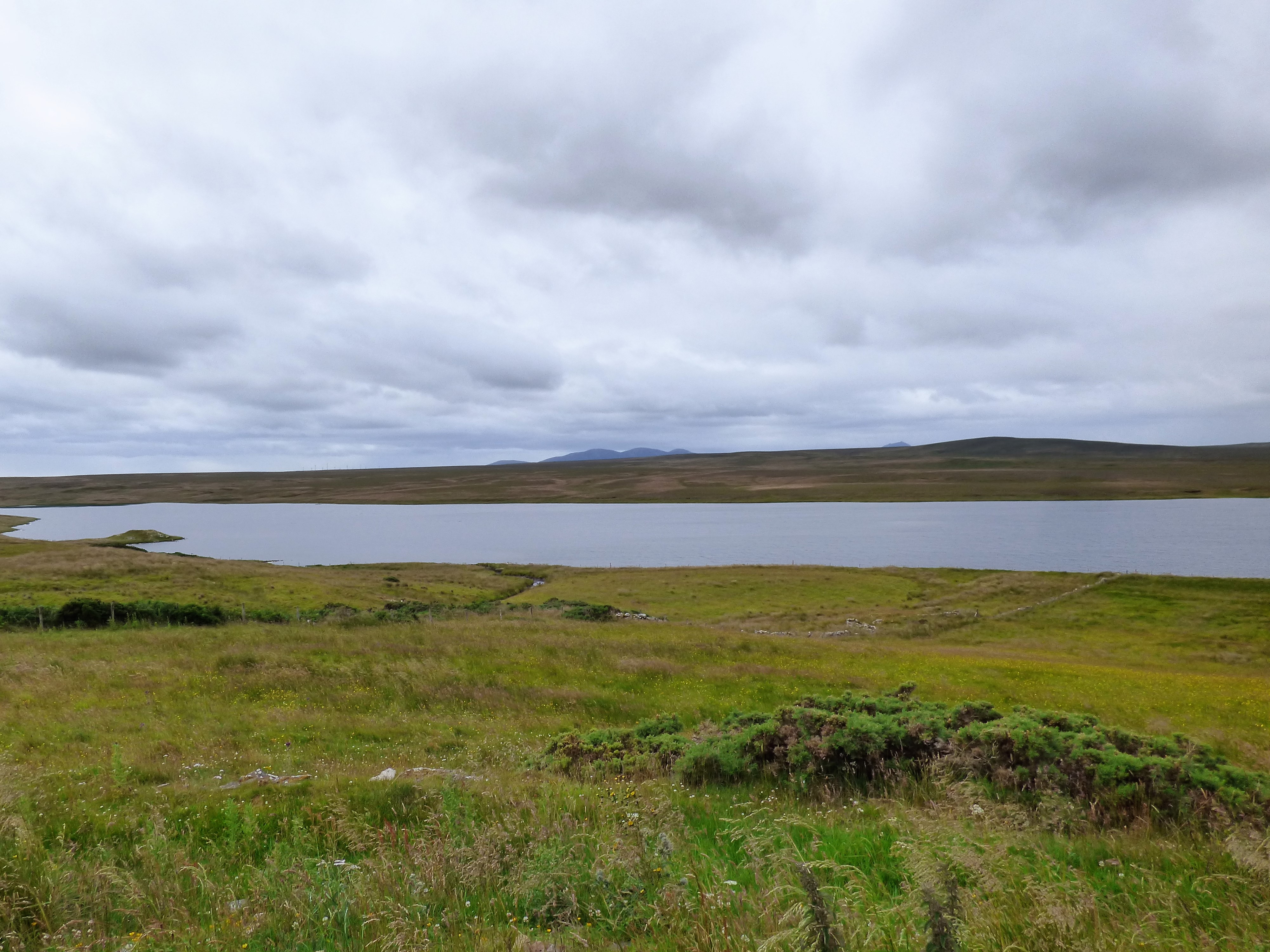

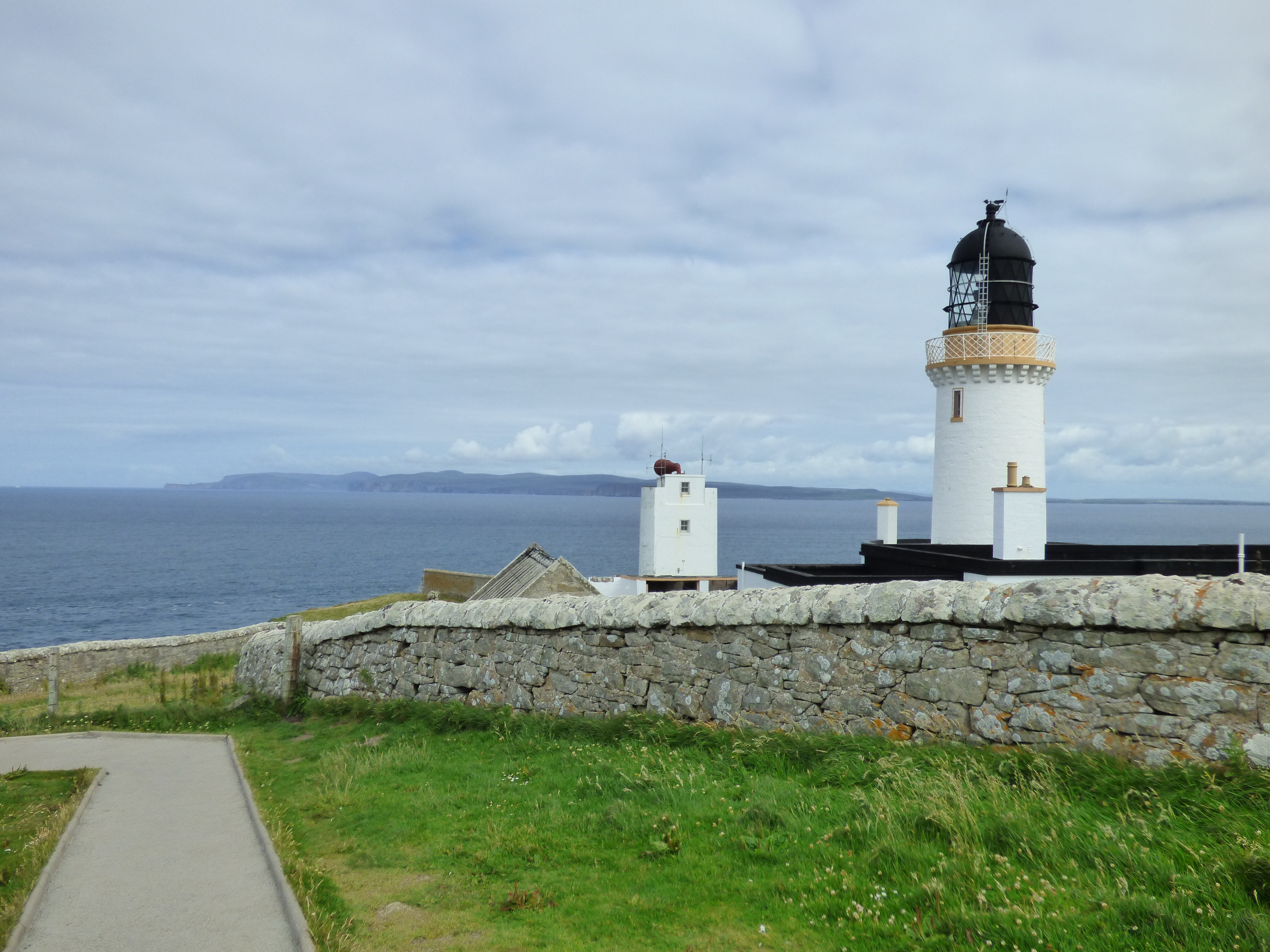
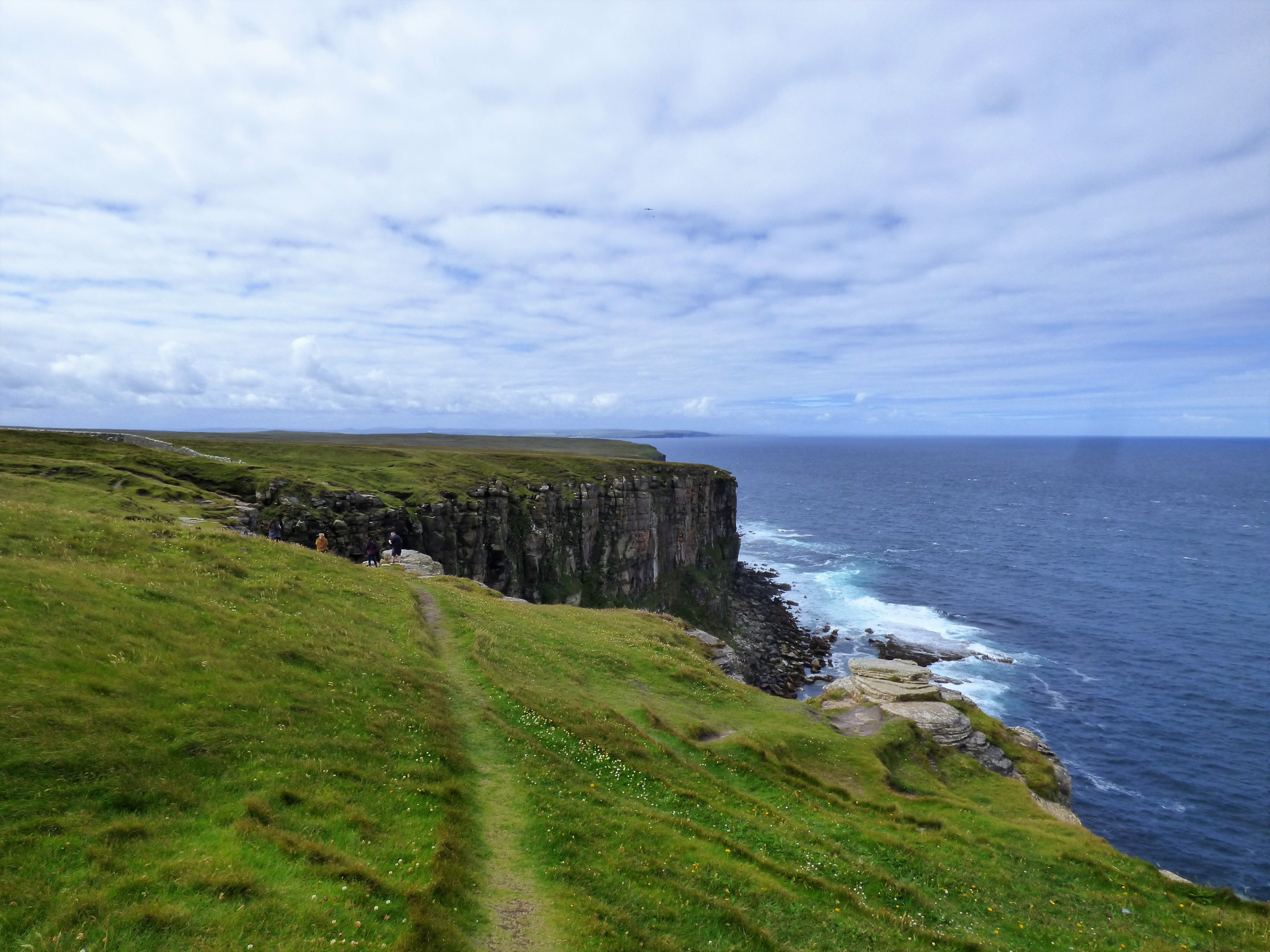
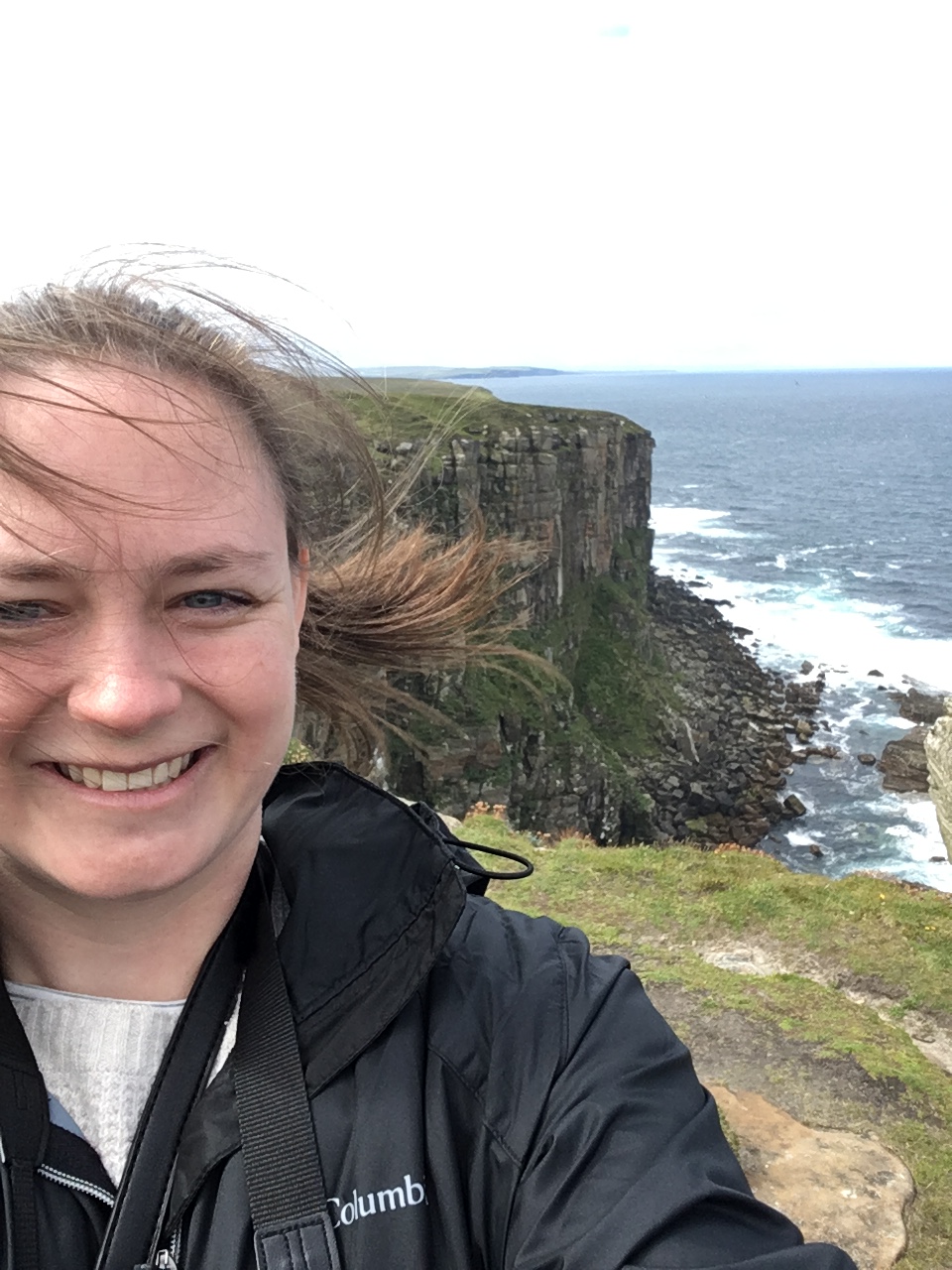
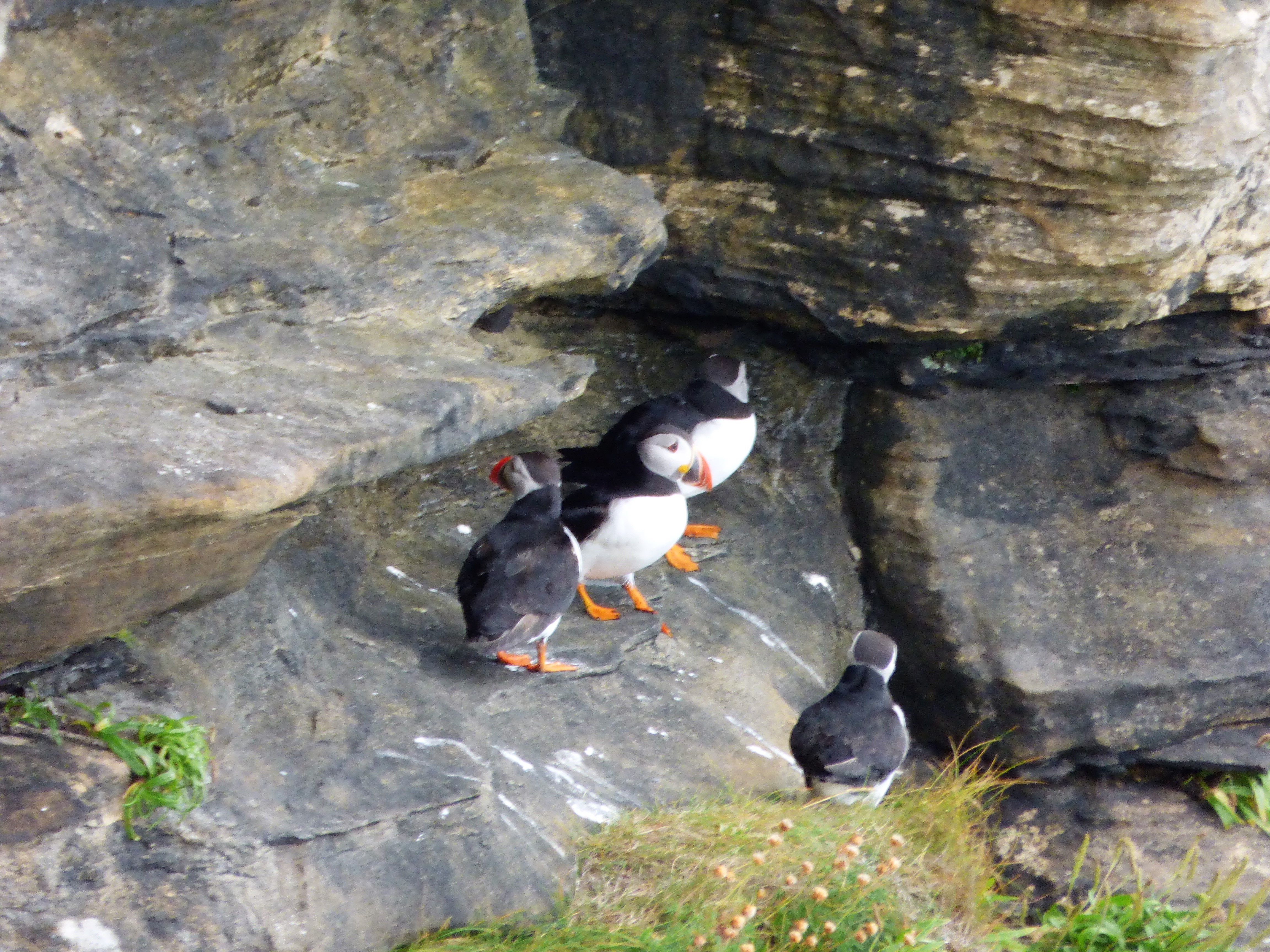
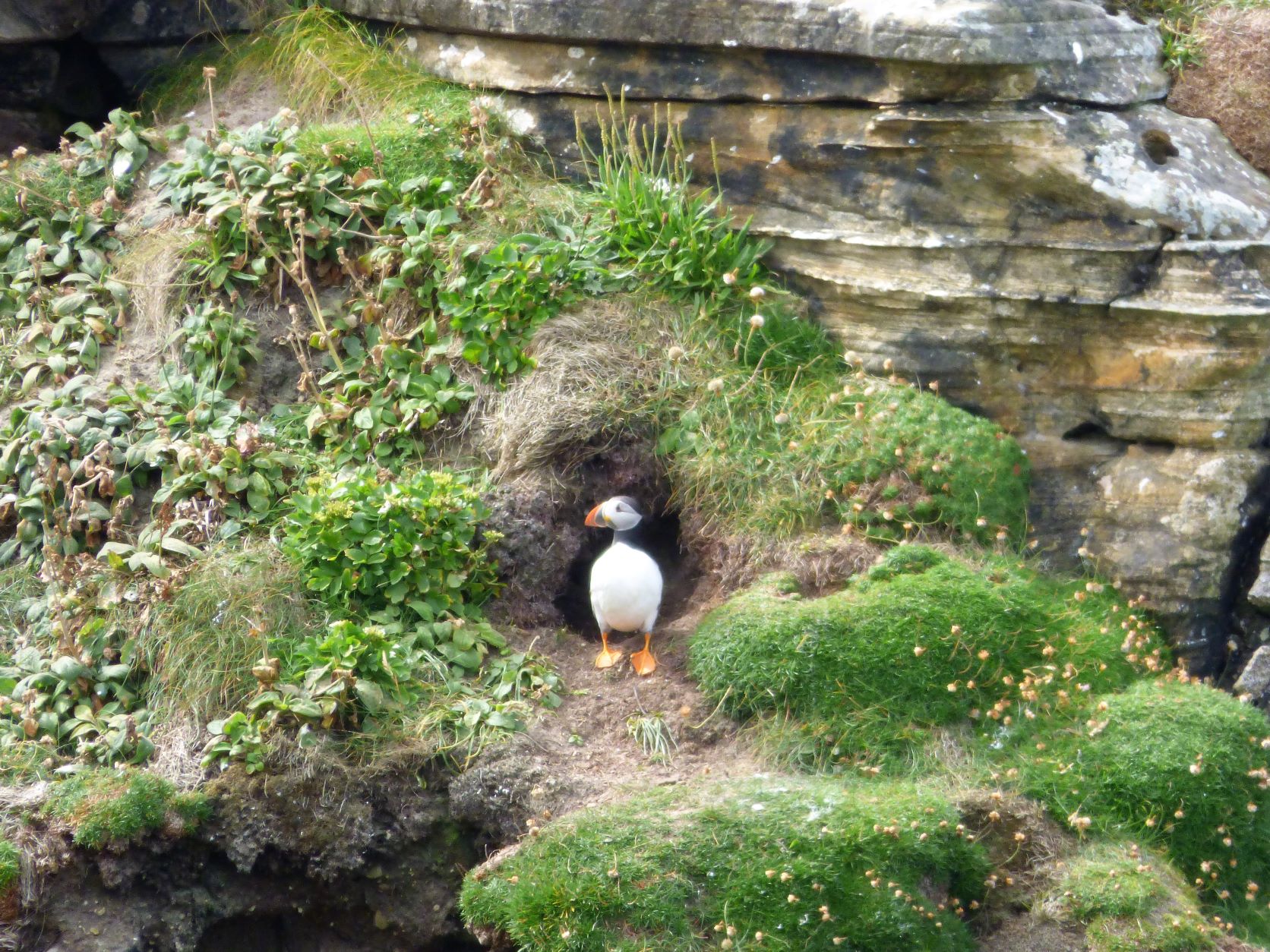
The following day was another long day of traveling. We left Inverness around 8:00 and headed north. We had to take a different route than normal because the main ferry to Orkney had been severely damaged a few days before and was grounded. Instead of taking that ferry, we instead had to take a ferry out of Scrabster. This meant we had to drive a different route than our driver was used to. We drove through a very sparse region, where most of the few buildings that we saw had been abandoned. Most of the land was bogs. We stopped at Dunnet Head at the very northern tip of Scotland. There was a lighthouse there, and expansive views of the ocean. We also got to see a number of puffins!
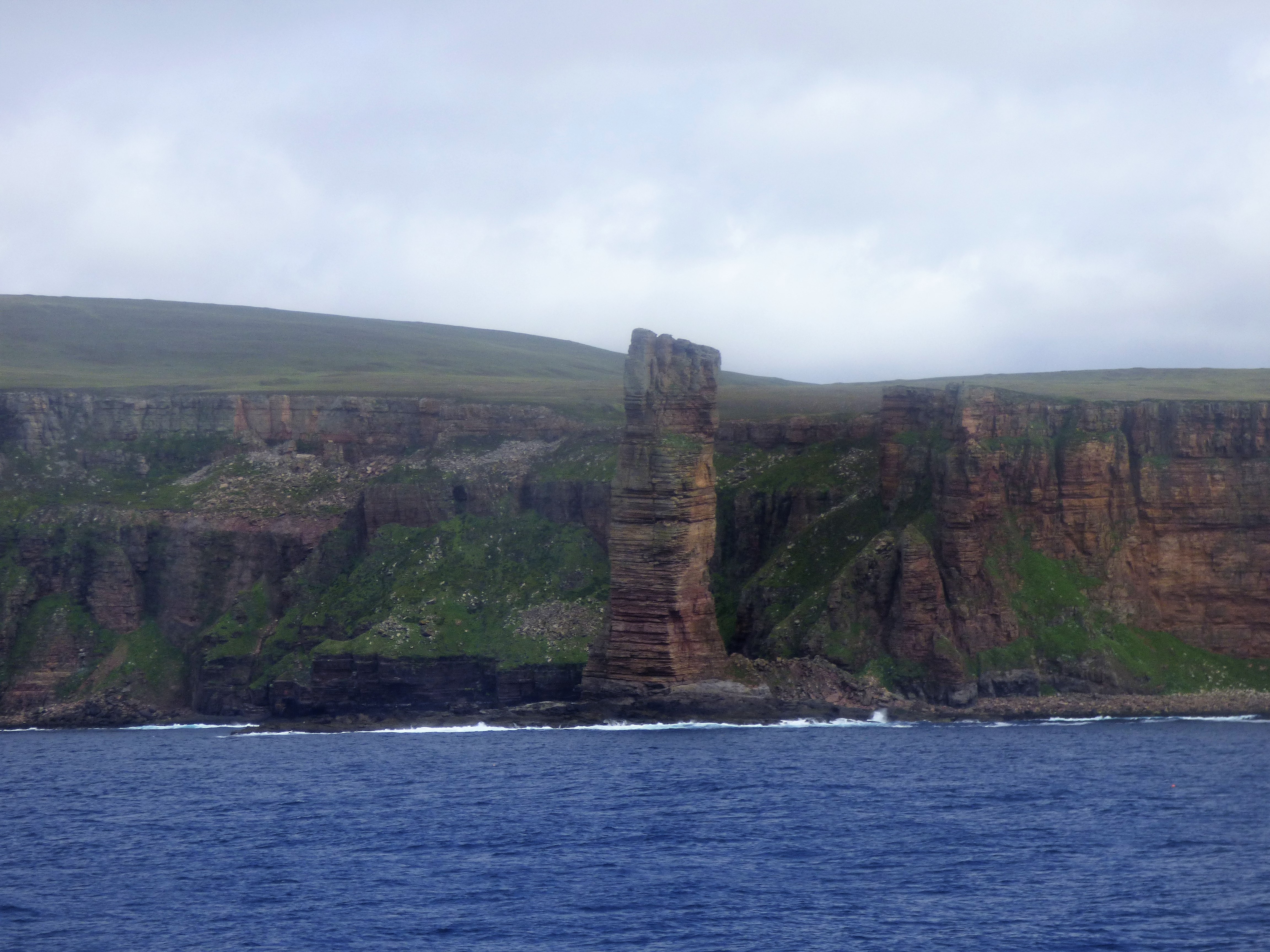
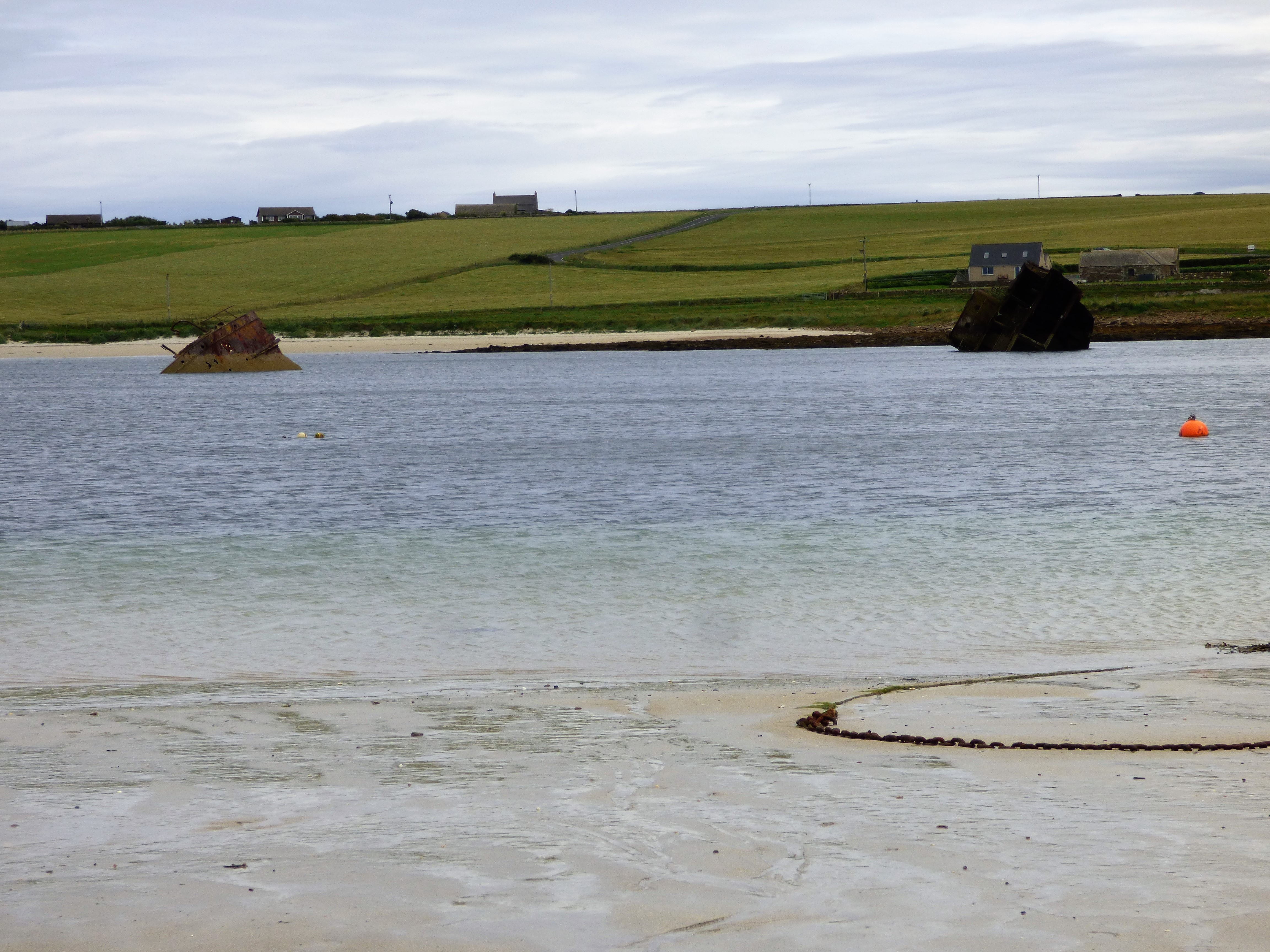
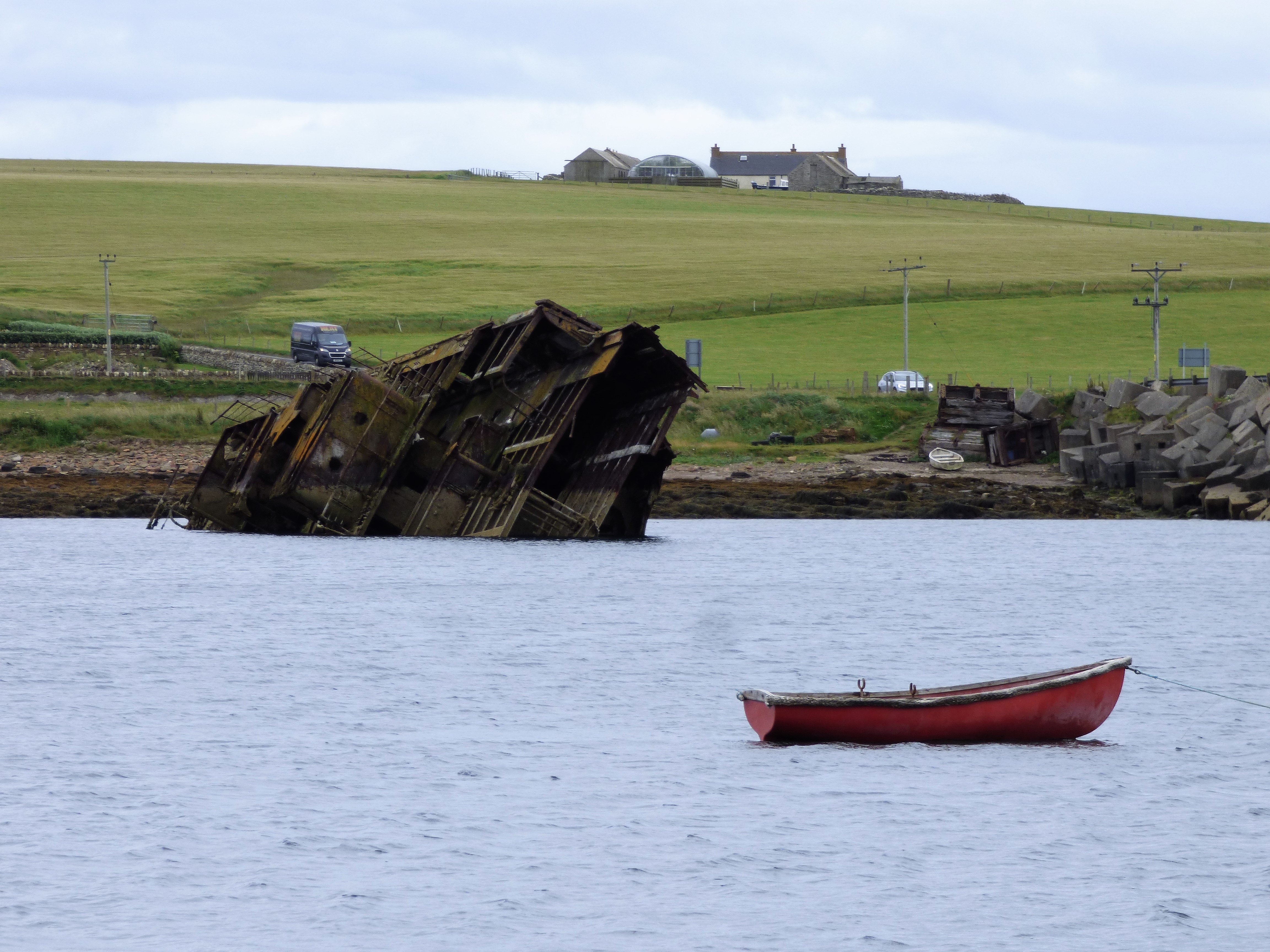
Eventually we reached Scrabster, where we got the ferry across to Stromness, which is a town on the Orkney Islands. The Orkney Island archipelago is made up of about 70 islands and has a population of about 20,000. About 20 of the 70 islands are inhabited. The Orkneys are known for their long history of inhabitation, dating back to the Neolithic era. Because of its remote location and low population, a number of prehistoric sites have remained. We spent the afternoon visiting a couple of locations. First we visited Scapa Flow. This is a beach and harbor where the entire German naval fleet was sunk at the end of World War I. A number of the ships are still visible where they stick out of the water.
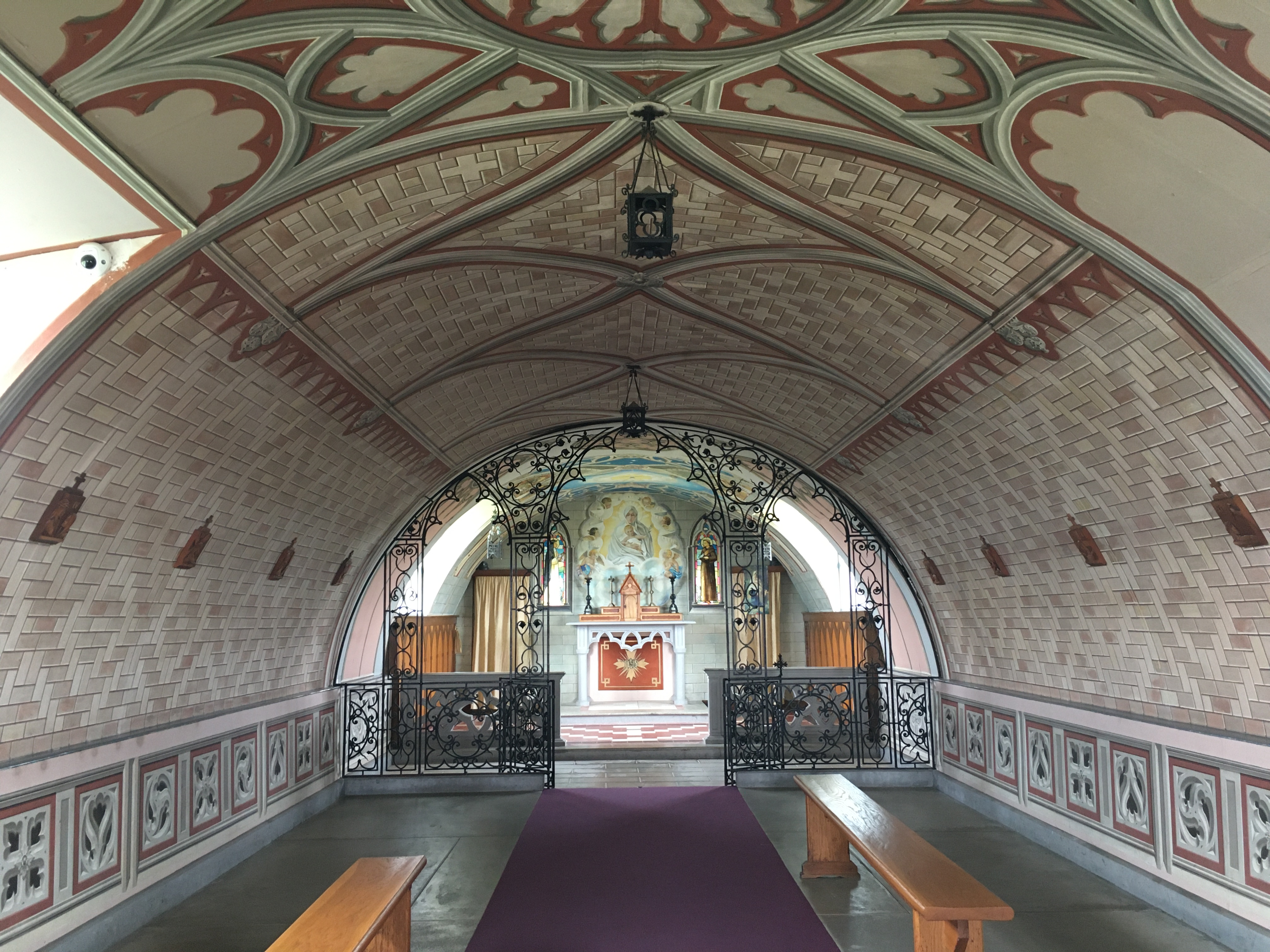
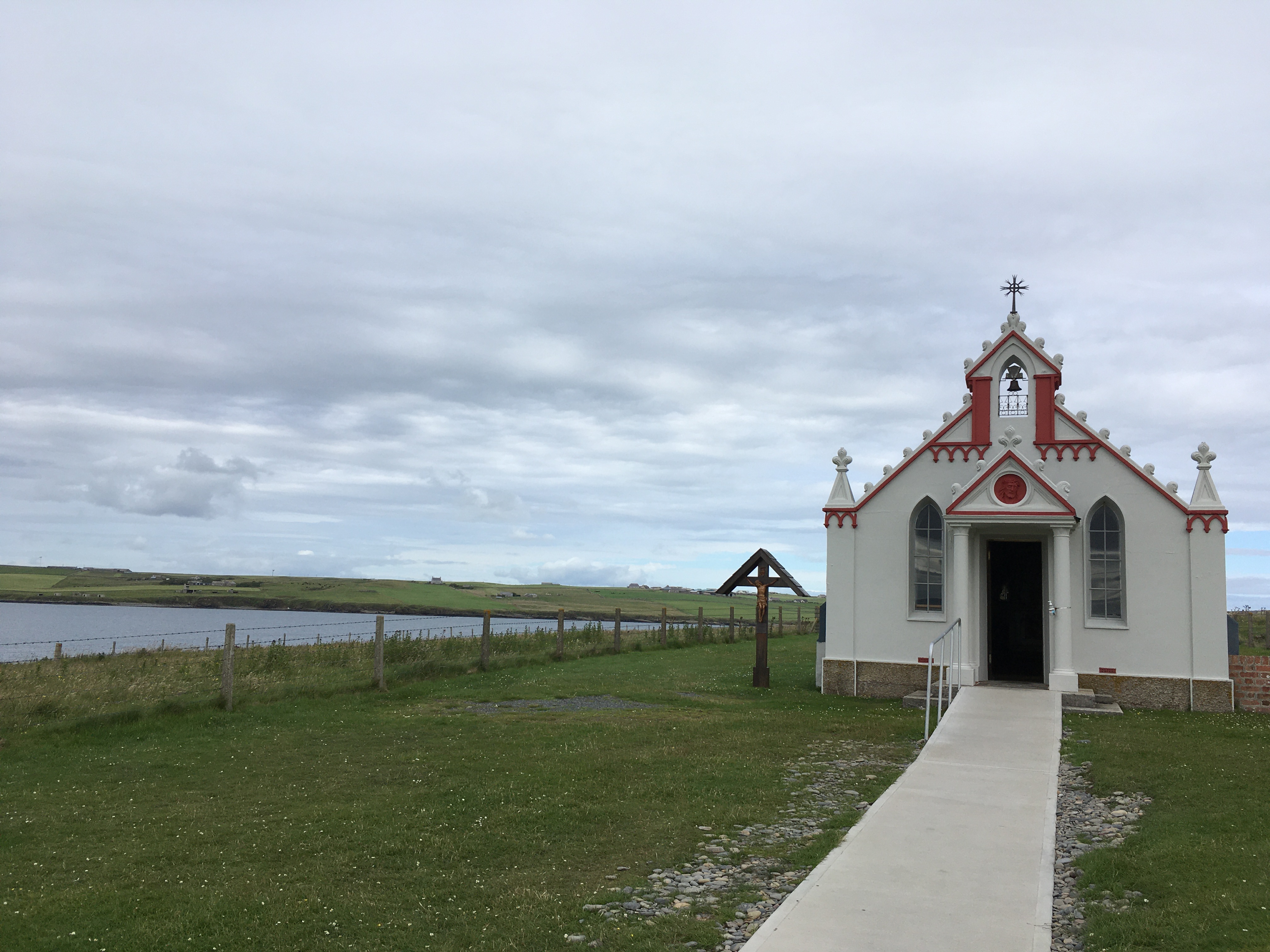
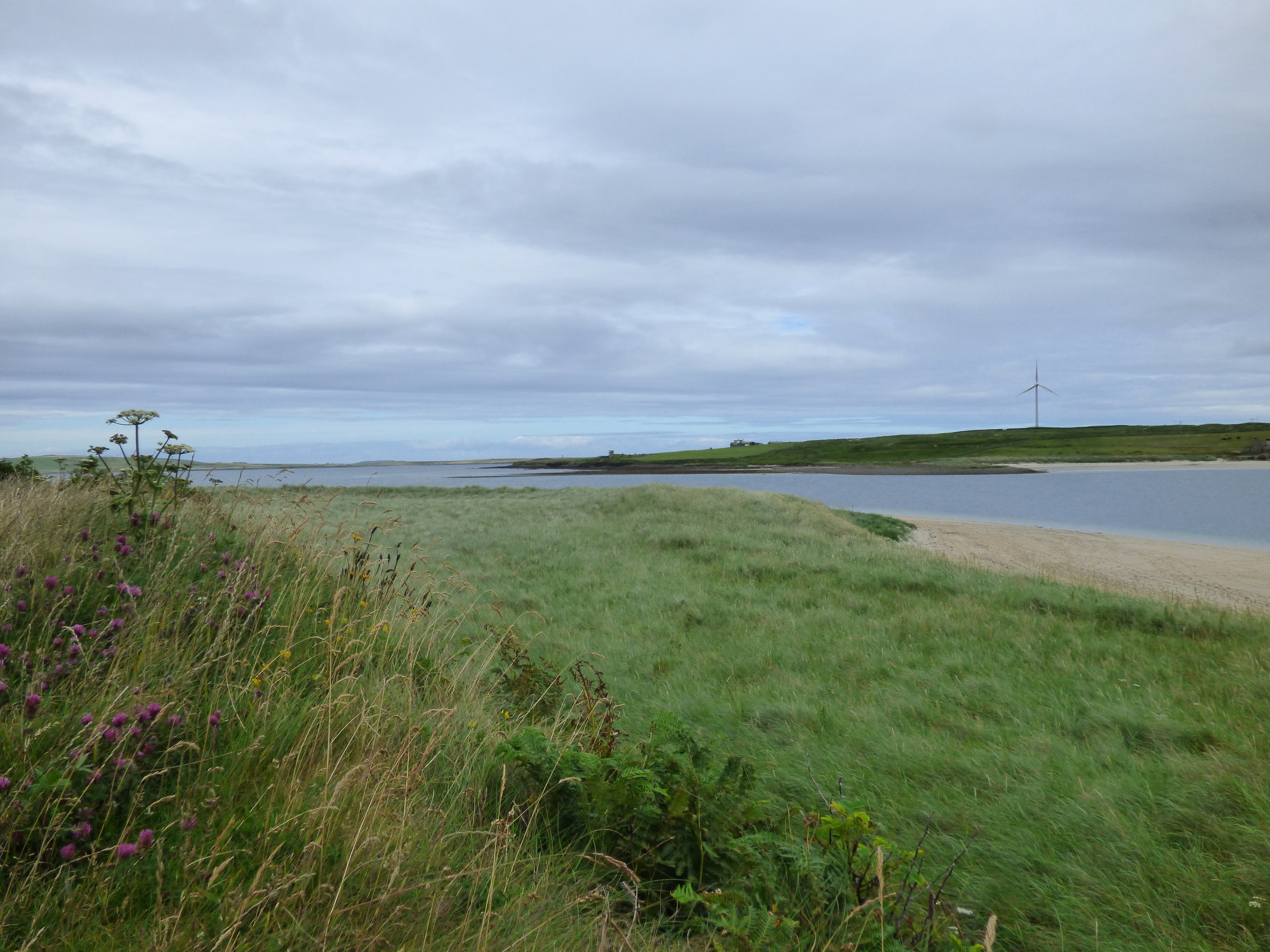
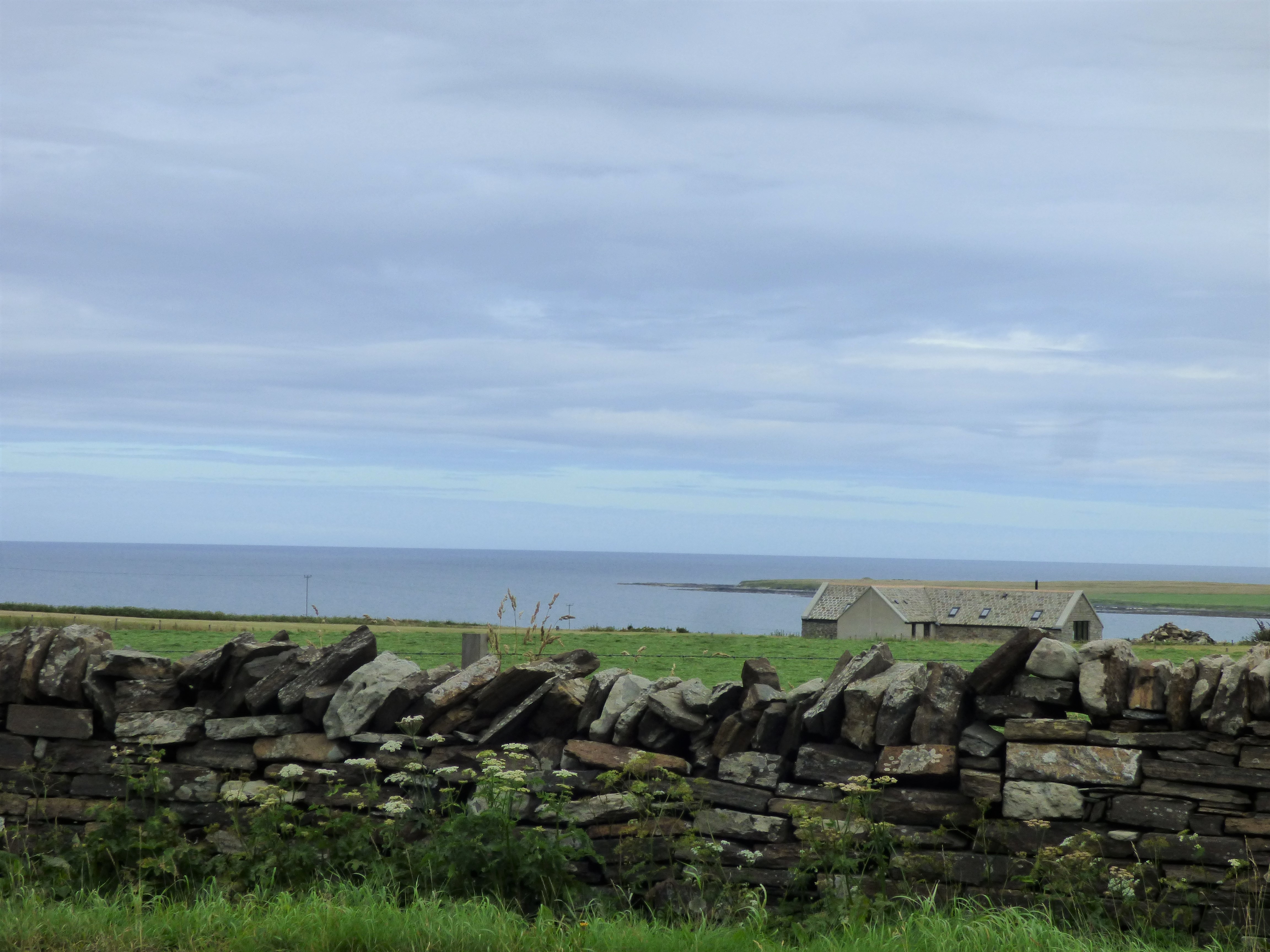
We also visited the Italian Chapel on Lamb Holm. During World War II, Italian prisoners of war were held on the Orkney Islands. These prisoners built a chapel that they could worship in. The interior was intricately painted by the prisoners to mimic the ornate architectural features typically found in an Italian chapel. The stones, paneling, and rafters are all painted.
After getting dropped off at our accommodations in Kirkwall, I walked into the center of Kirkwall, which was very quiet. I managed to get a table at Lucano’s, where I ate one of the best meals of my life. After dinner, I ran into Lisa, Pam, and Mike (3 of the travelers on my tour) and they invited me to join them for dinner. I’d already eaten, but I went with them and got dessert.
day 7: Orkney Islands (Standing Stones of Stenness, Maeshowe, Skara Brae, Twatt, Birsay Island, Standing Stones of Brodgar)
This was our only full day on Orkney, and our day was spent visiting a number of the prehistoric, neolithic age sites throughout the islands. All of the sites we visited were about 5,000 years old.
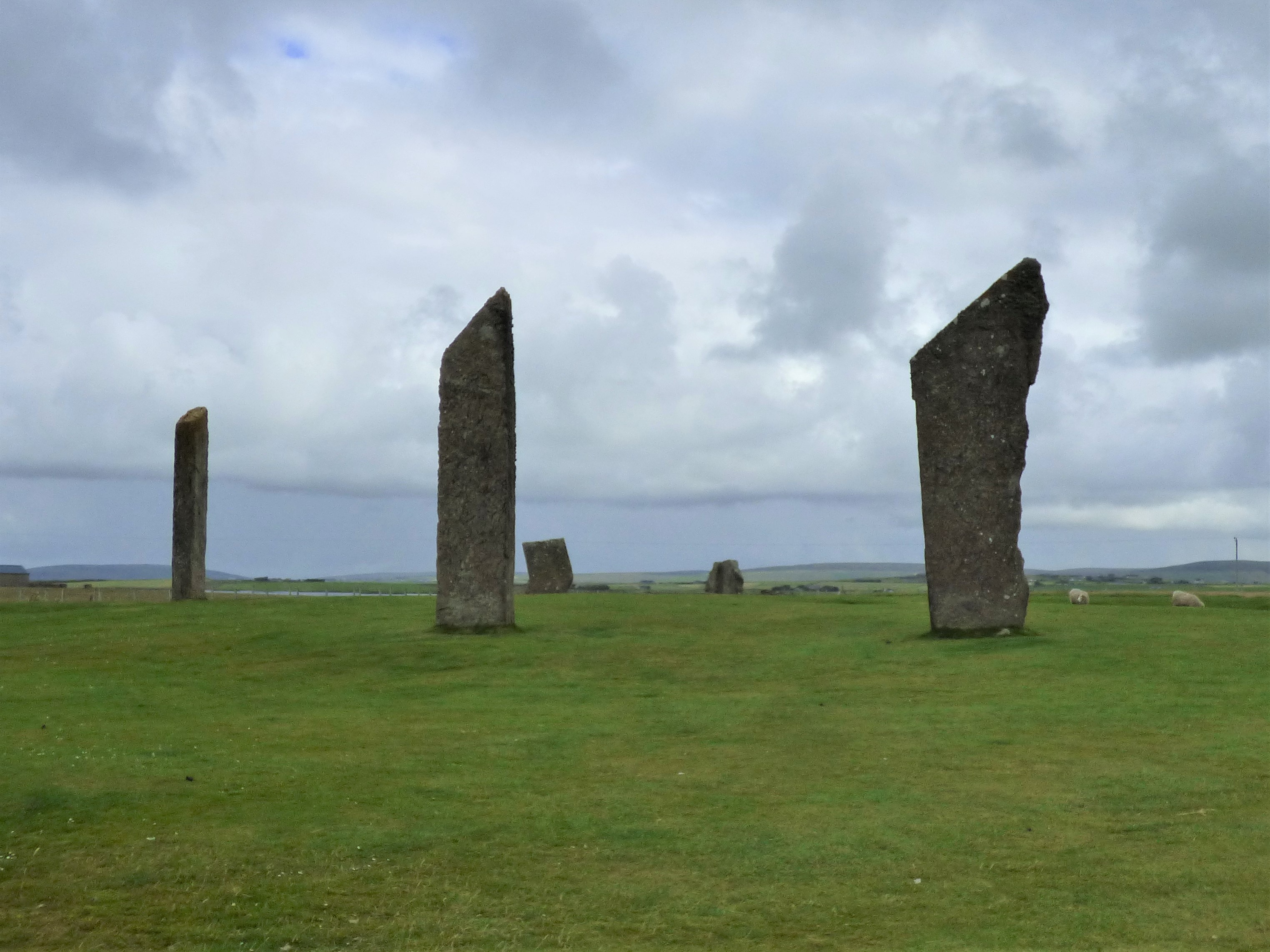
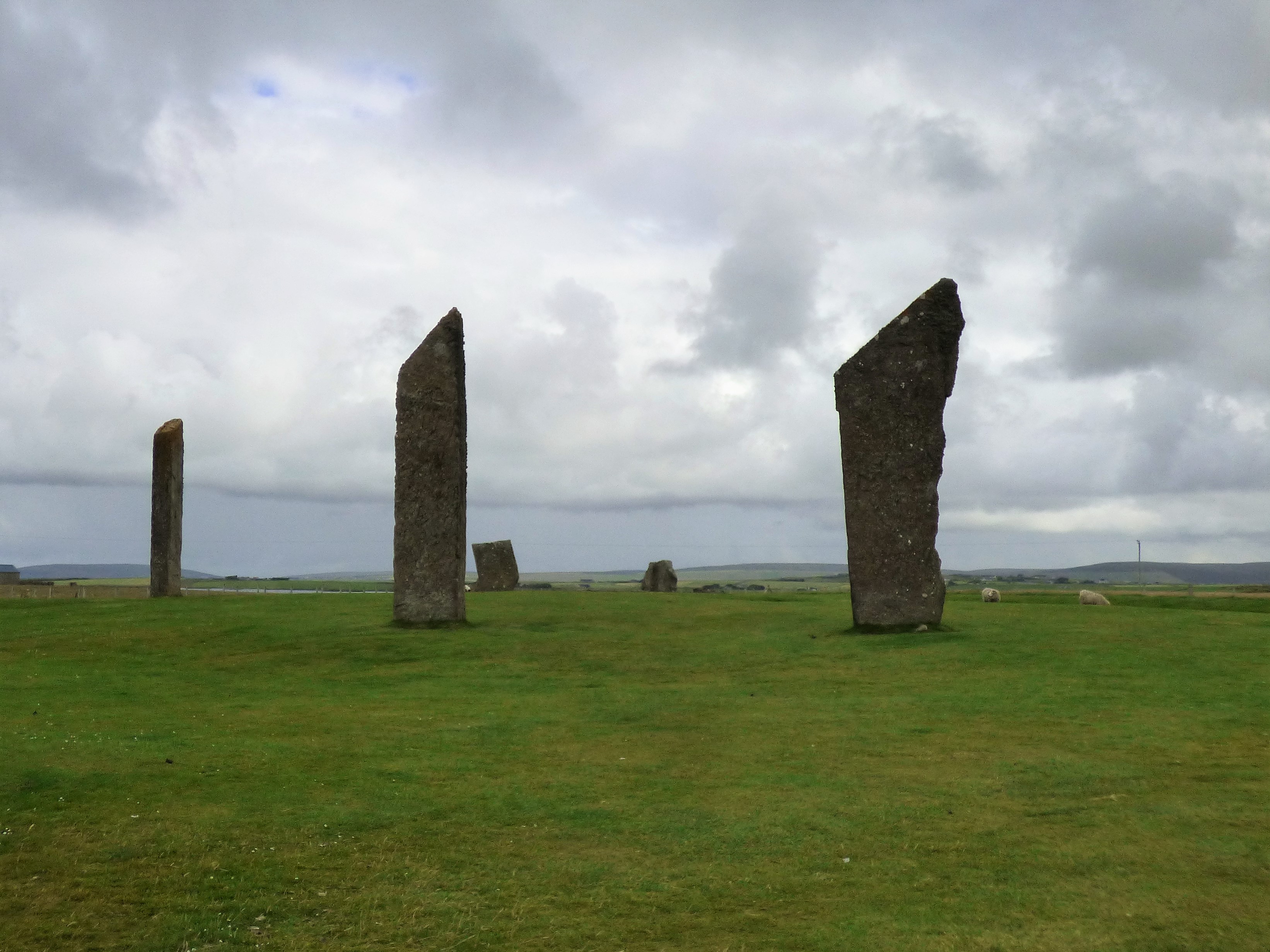

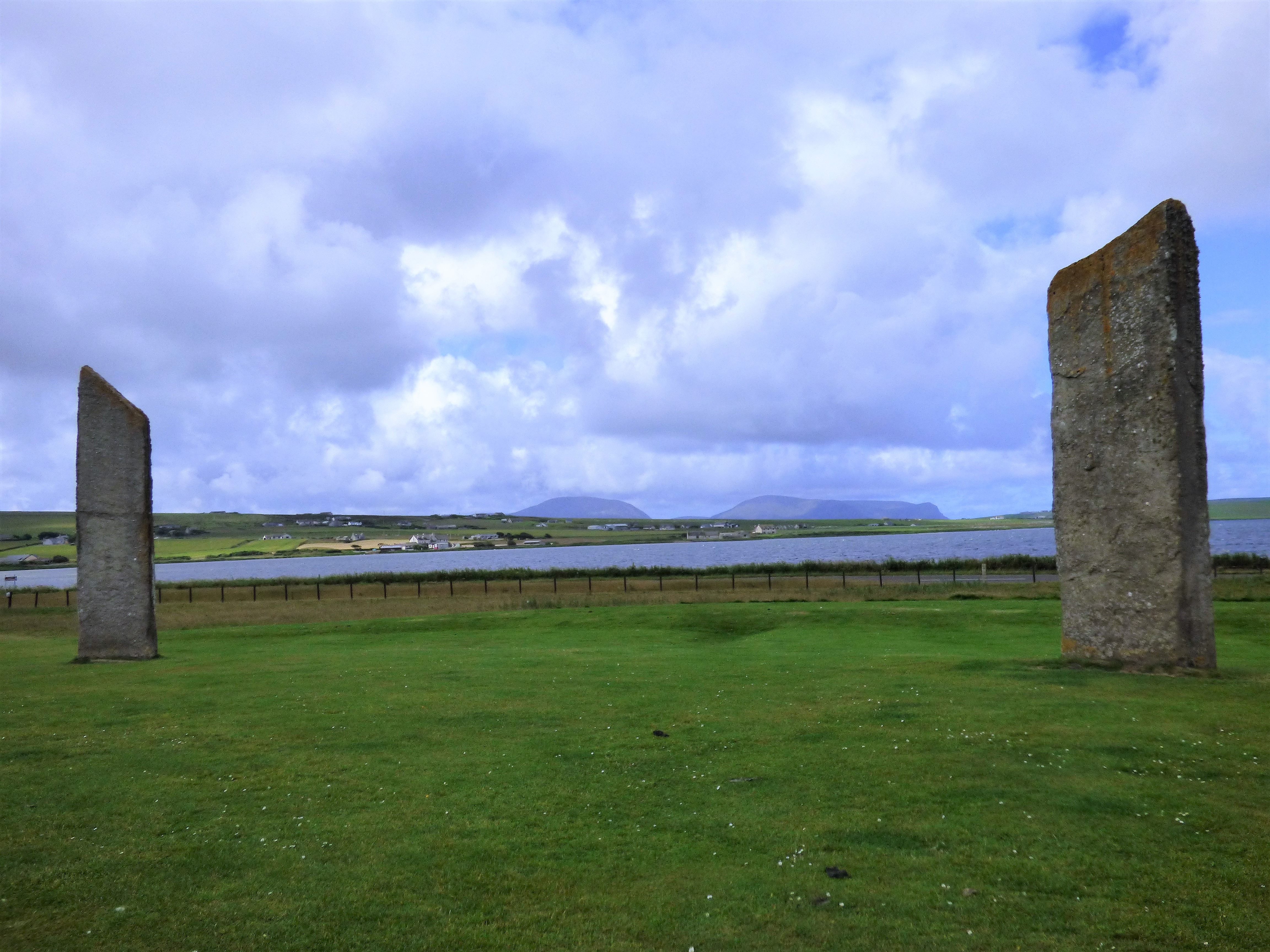
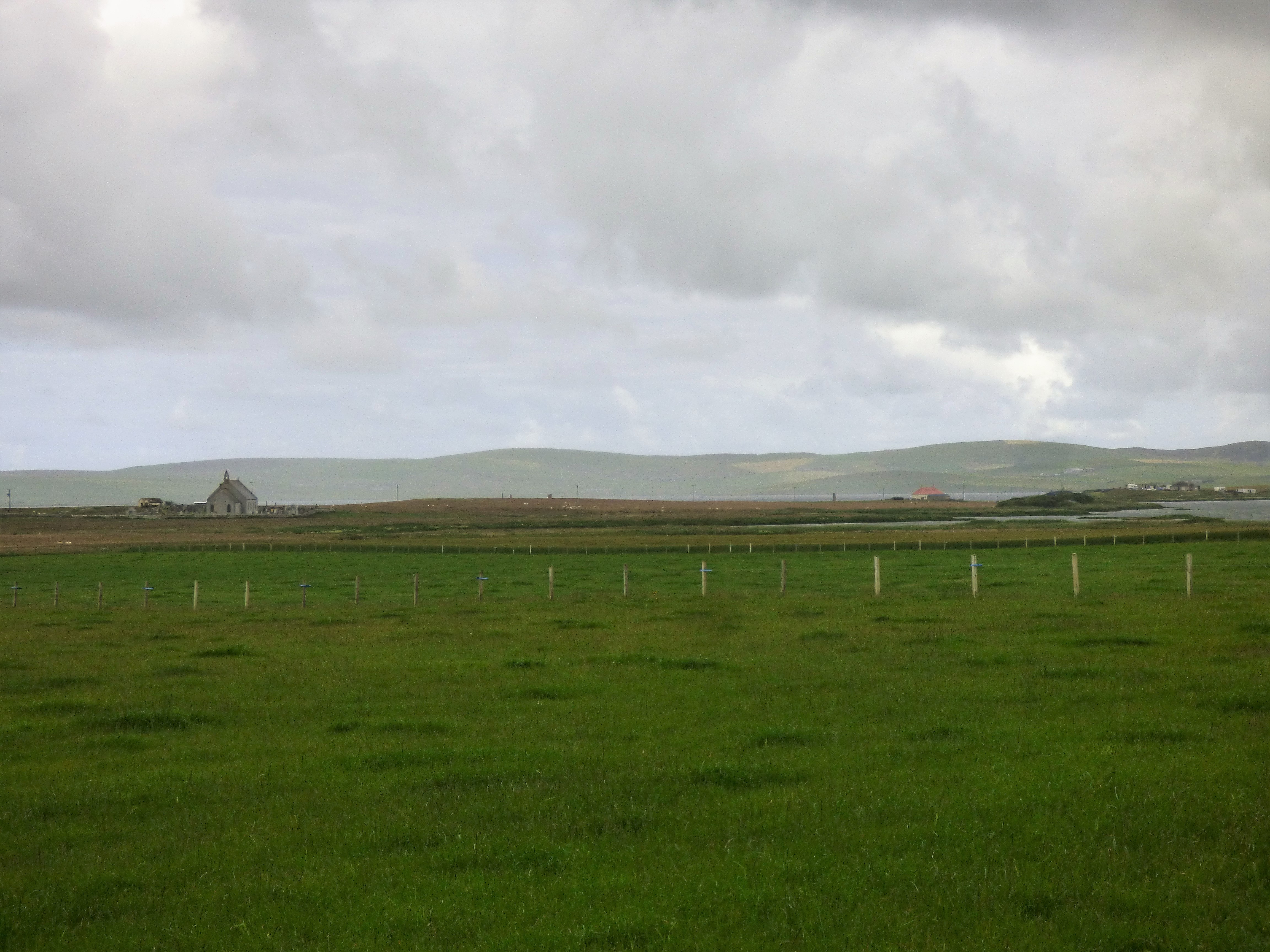
Our first stop of the day was at the Standing Stones of Stenness. The Standing Stones of Stenness are large standing stones (about 12 feet tall) arranged in a circle and surrounded by a henge (a henge is essentially a ditch). They are believed to be the oldest in the UK and possibly the oldest in the world. Unlike at Stone Henge, you can actually touch these standing stones- and they’re free to visit! We even got the entire site to ourselves.

Right next to the Standing Stones of Stenness is another prehistoric site called Maeshowe. Maeshowe is a Neolithic age burial mound. It was emptied of its contents by the Vikings in the 1200s, who left behind “graffiti” in the form of rumes. You do need to pay an admission fee for this site, and it is only open for guided tours. It was interesting the learn about the Viking conquests in the area. The meaning behind the “graffiti” was also interesting to learn about. A lot of it is very similar to modern-day graffiti, like “so-and-so was here”, as well as some less appropriate comments.
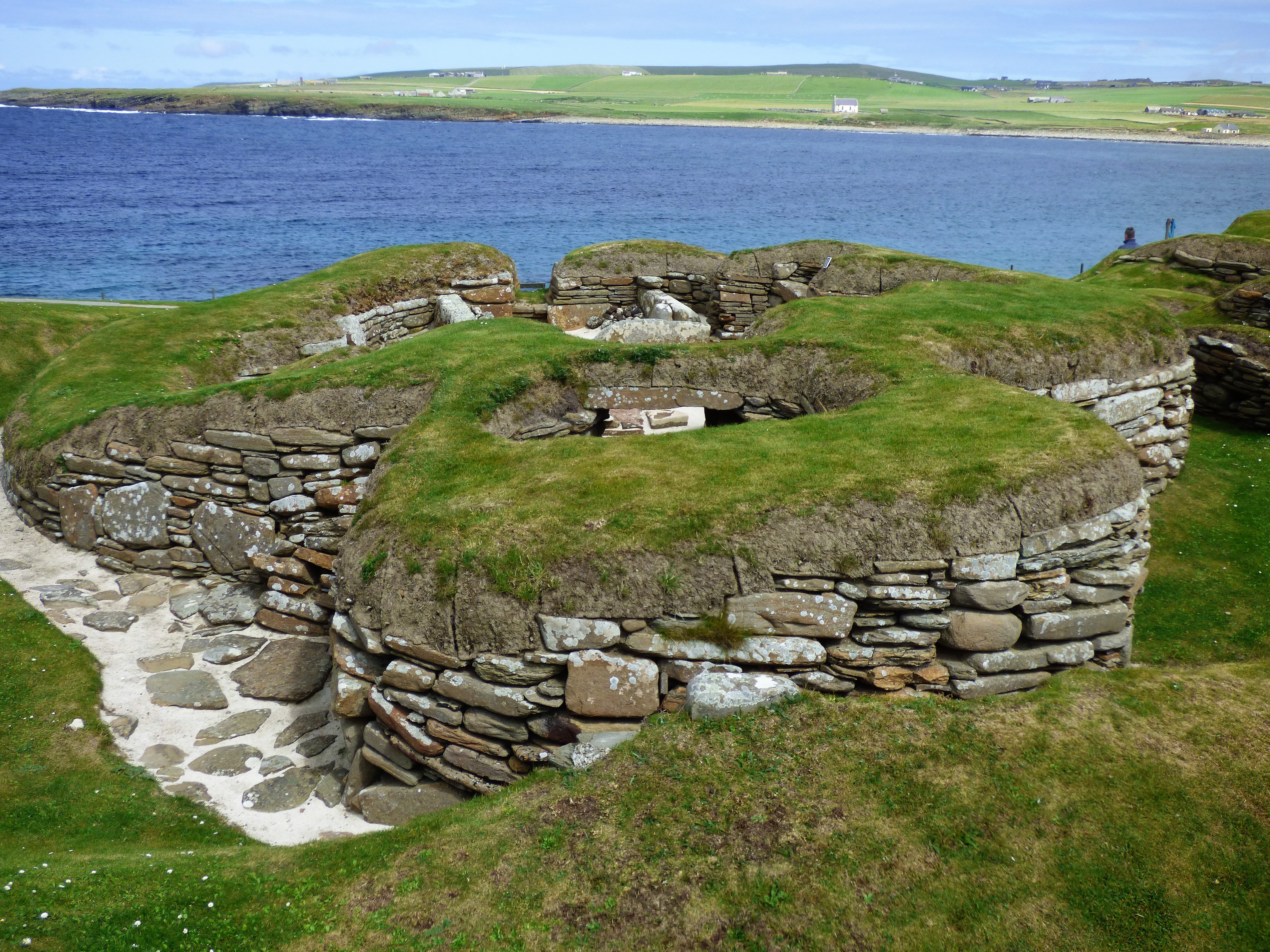
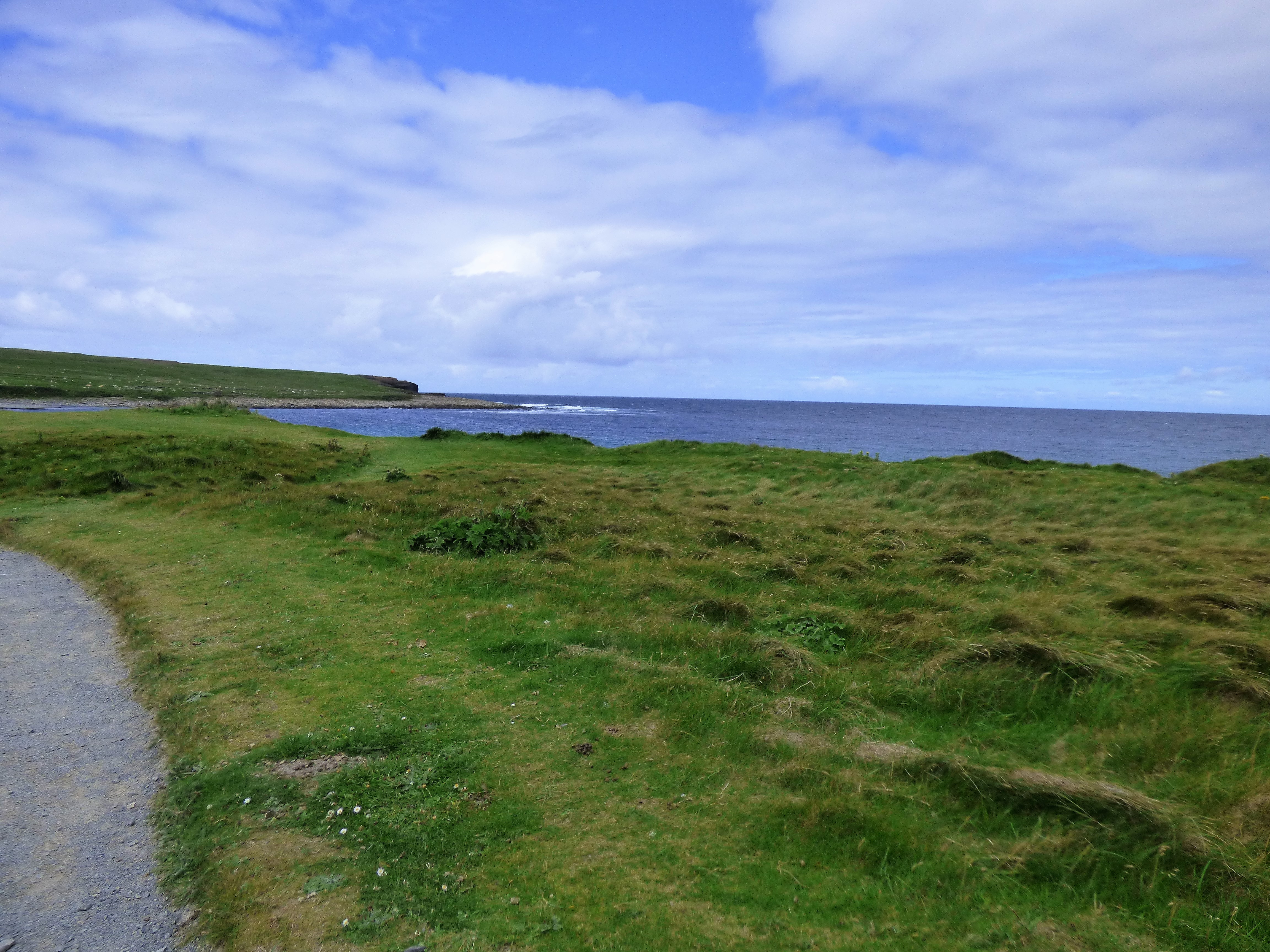
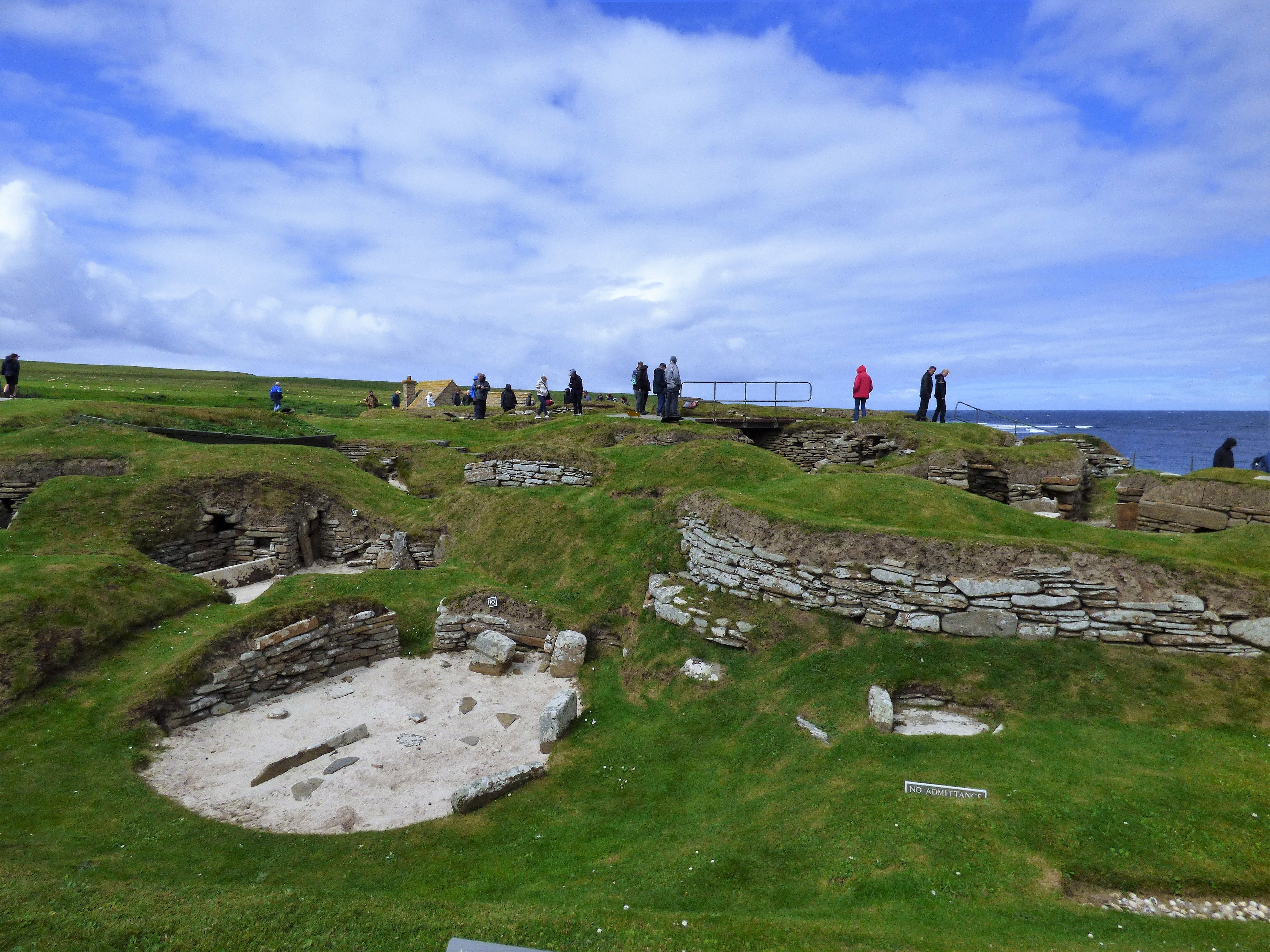
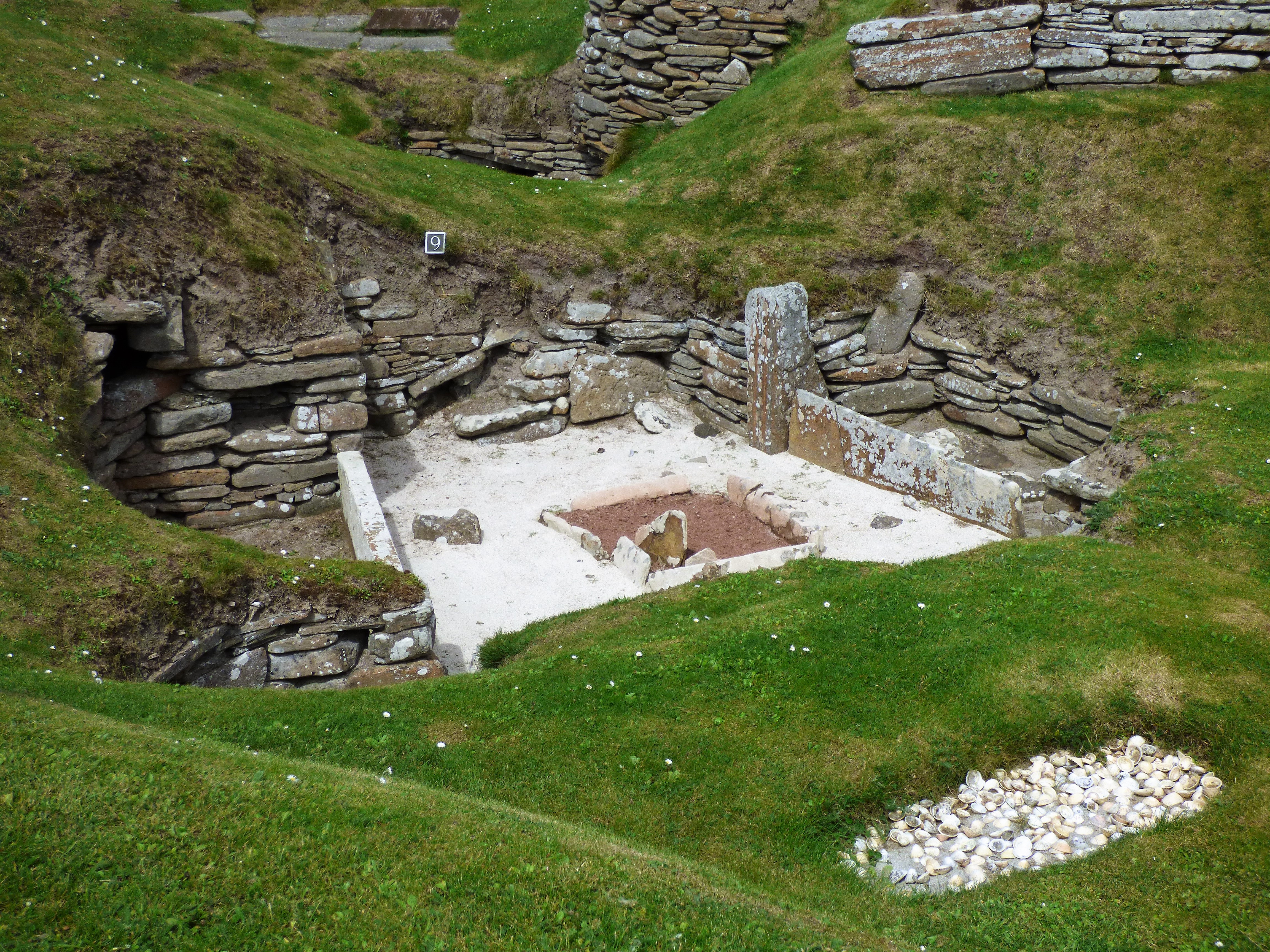
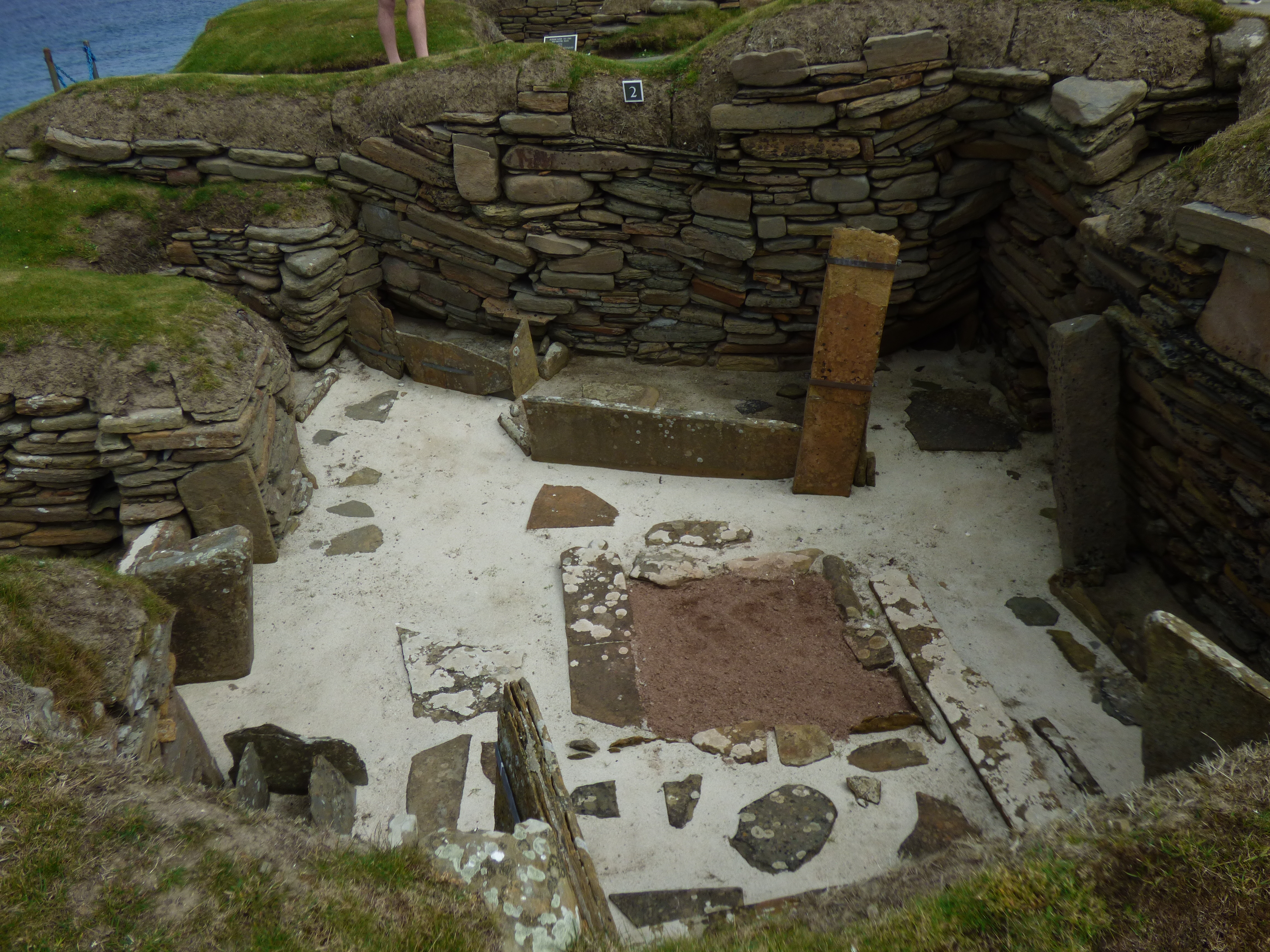

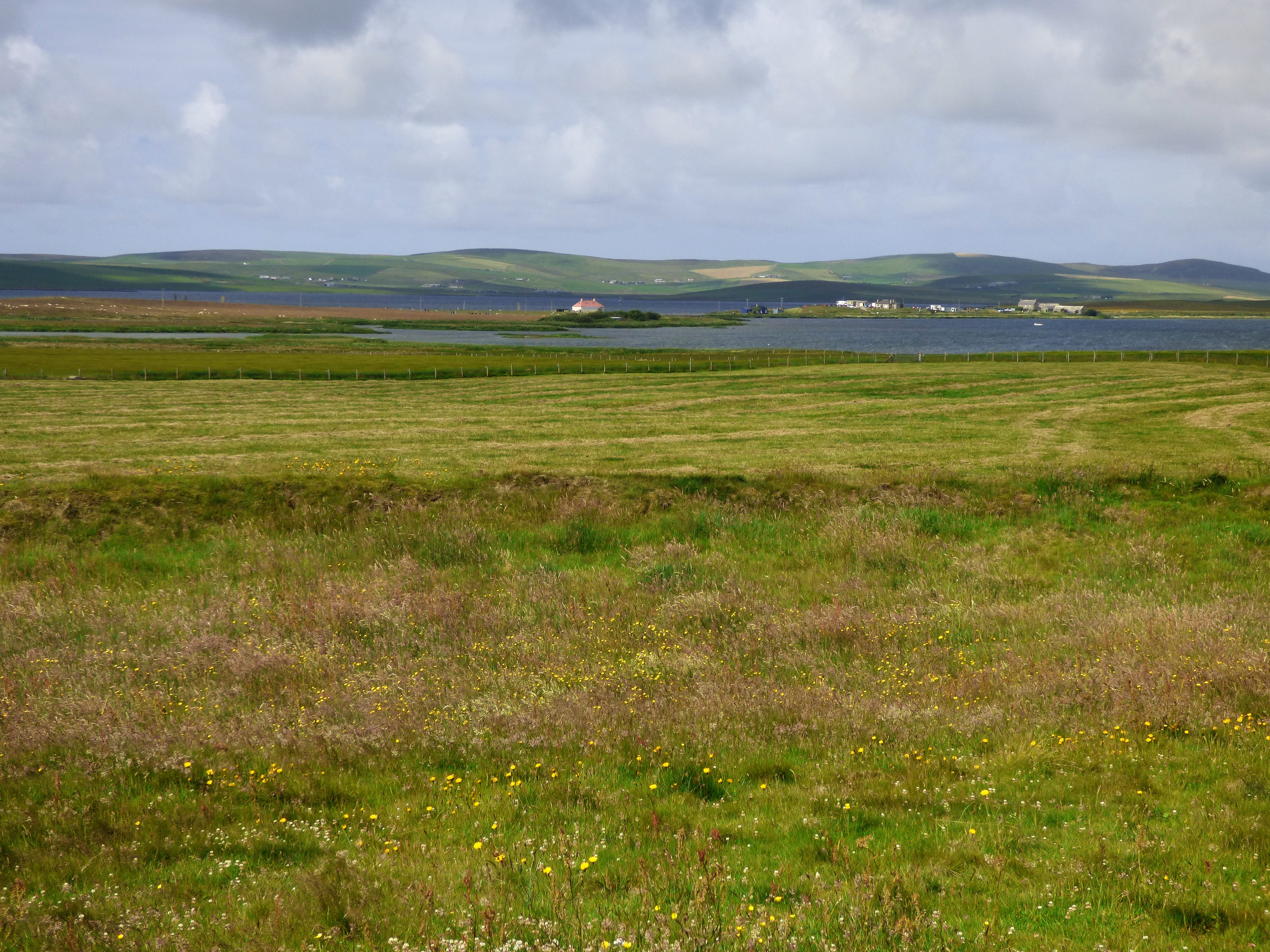
Our next stop was at Skara Brae (which also has an admission fee). Skara Brae is a largely intact Neolithic village that was occupied from about 3180 to 2500 BCE, making it older than Stone Henge or the Pyramids of Giza. It’s one of the best preserved Neolithic settlements in the world. At some point after the village was abandoned, it was covered with sand. It sat untouched and unnoticed until 1850, when a big storm ripped up the grass that had covered the sand mound. In subsequent excavations, more and more buildings were found. The houses have not been repaired- this is how they were found. One of the coolest parts is the stone furniture that was found inside the homes: beds, dressers, pantries.
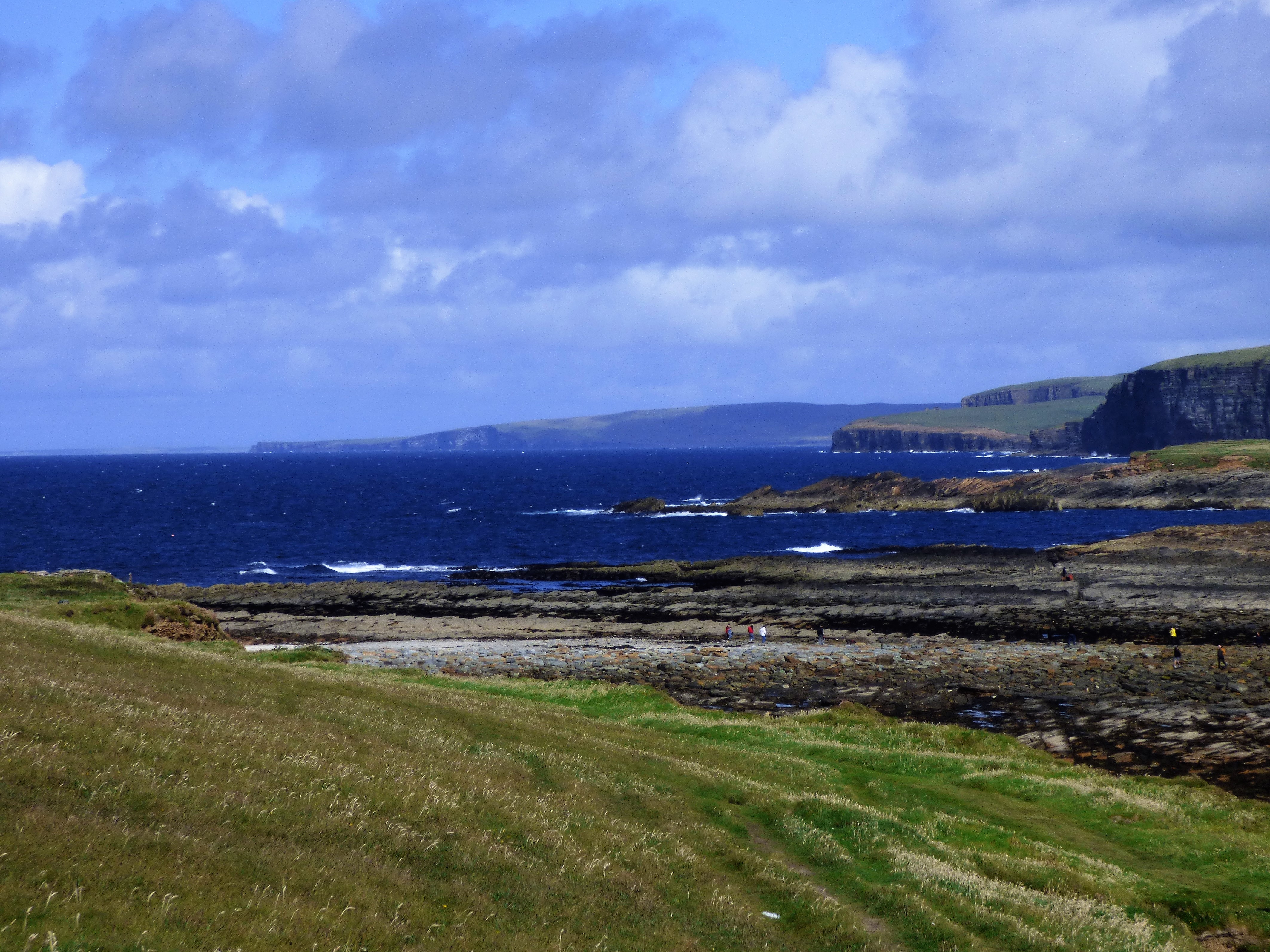
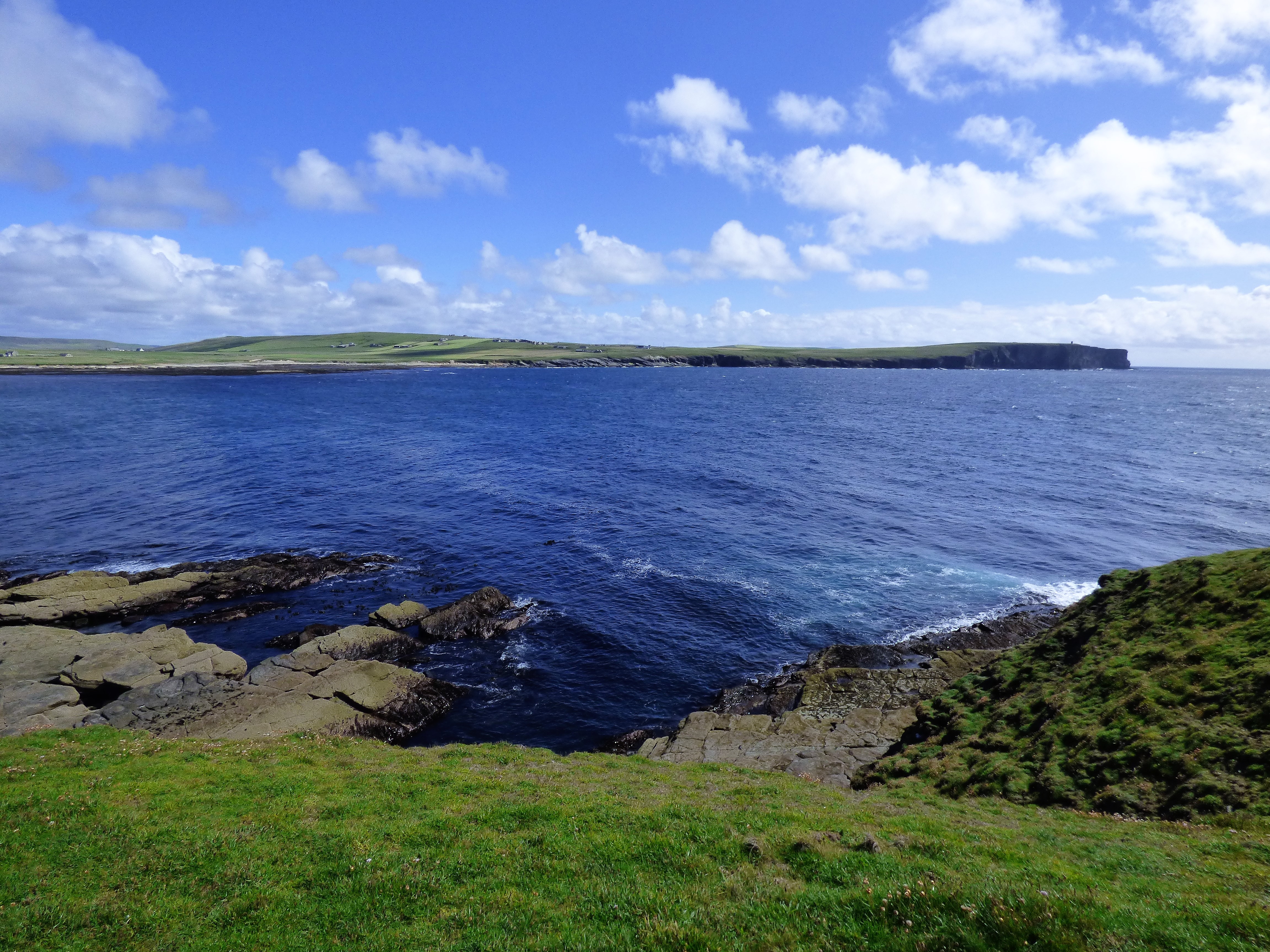

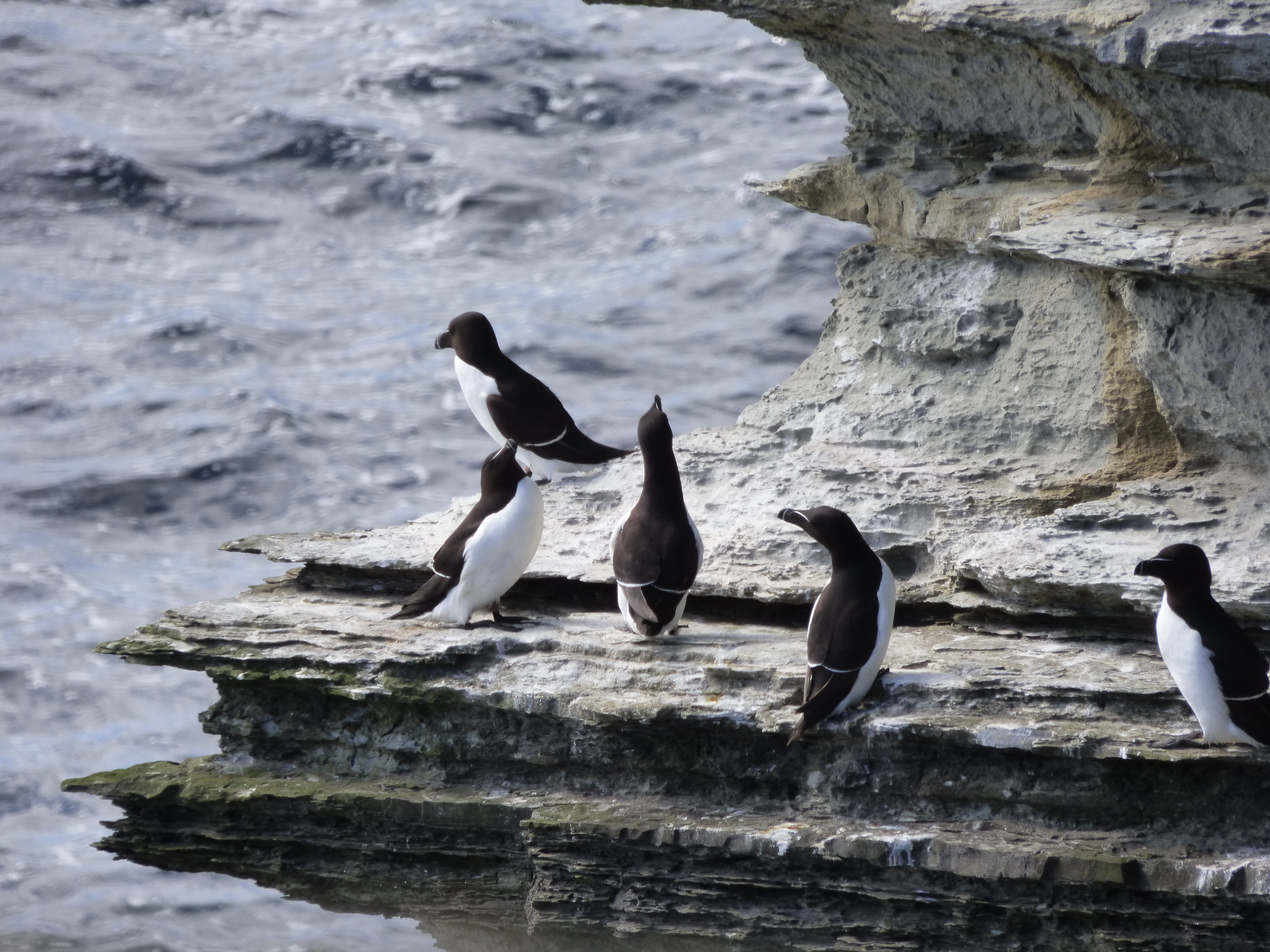
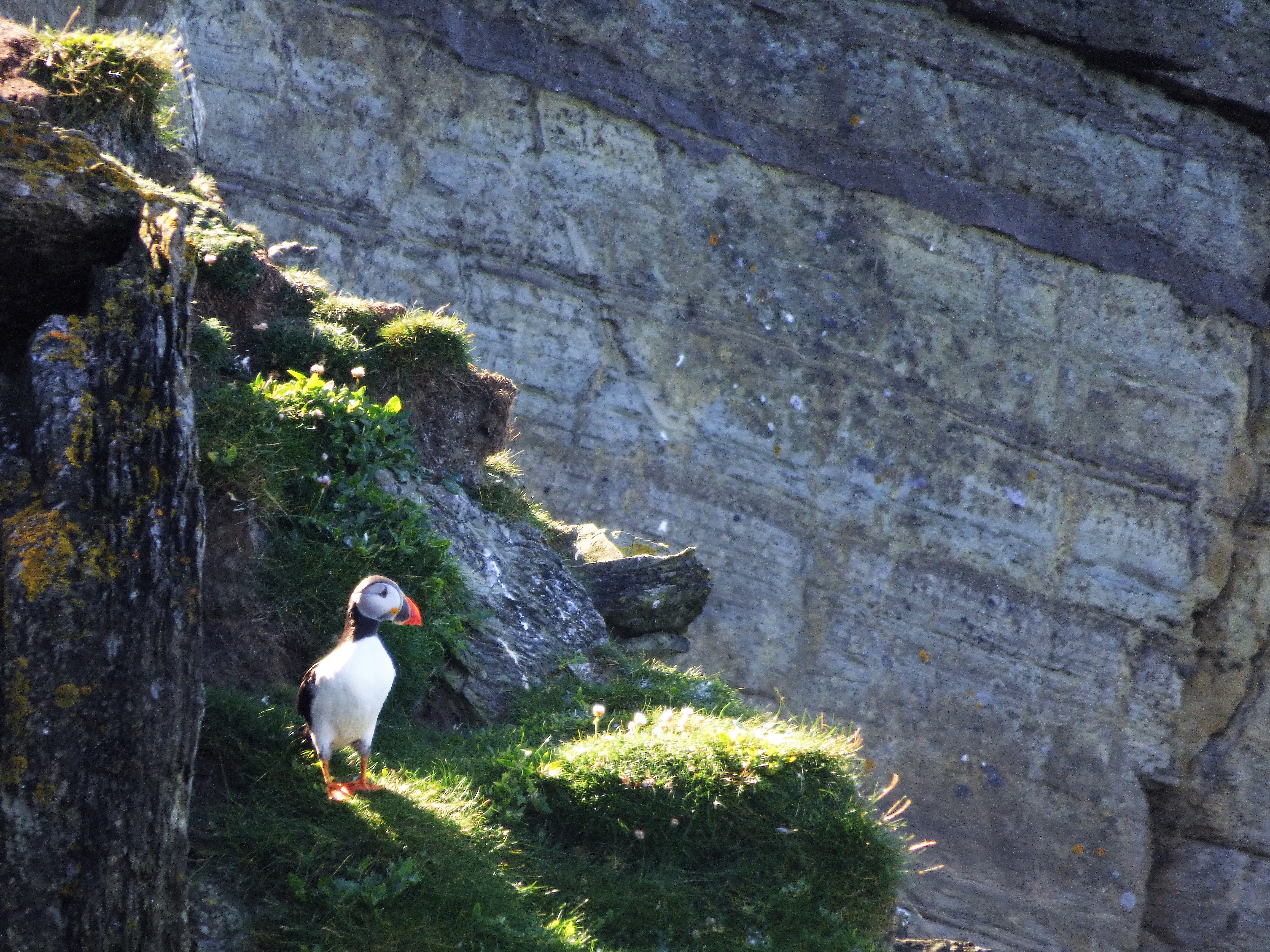
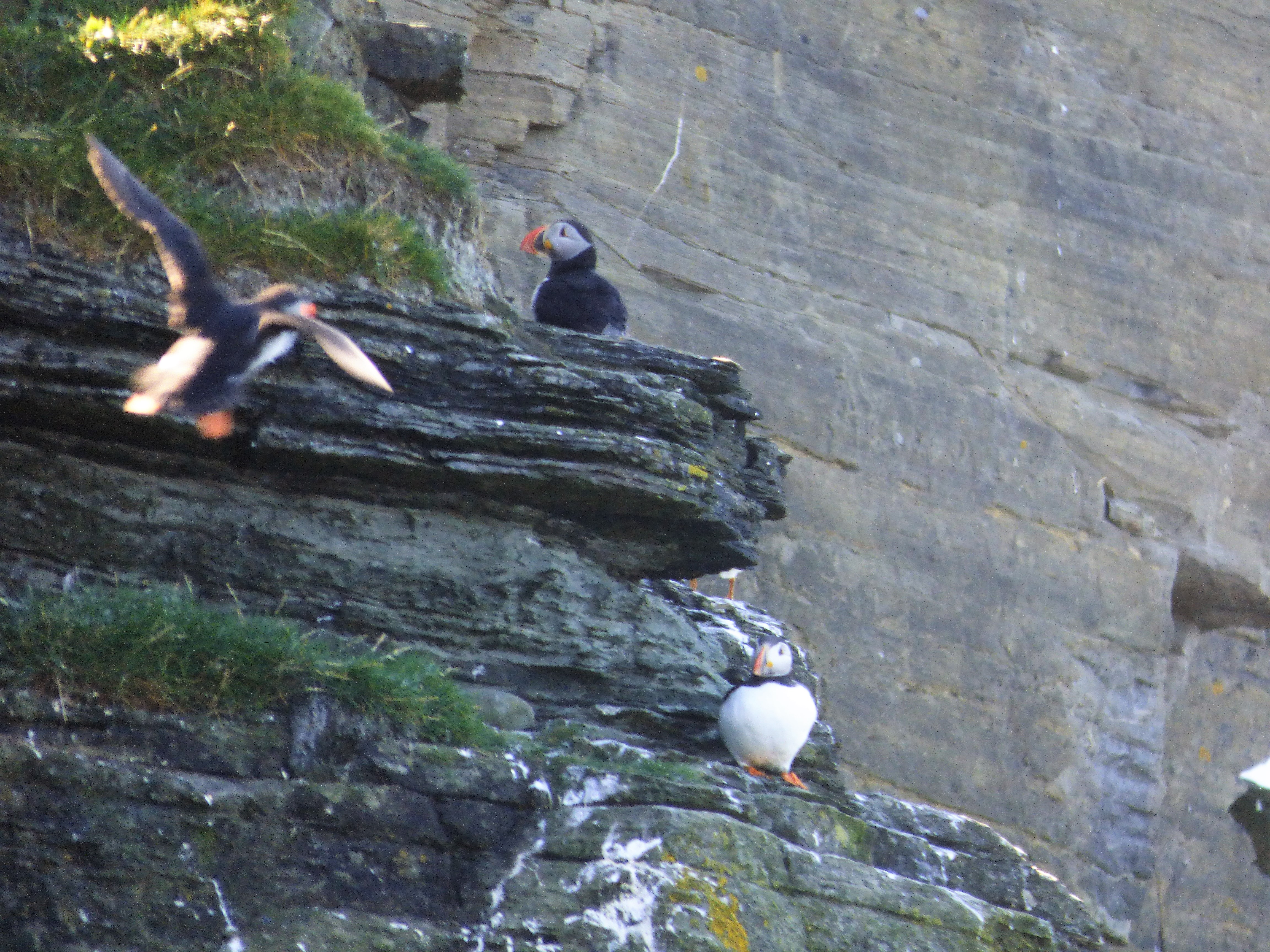
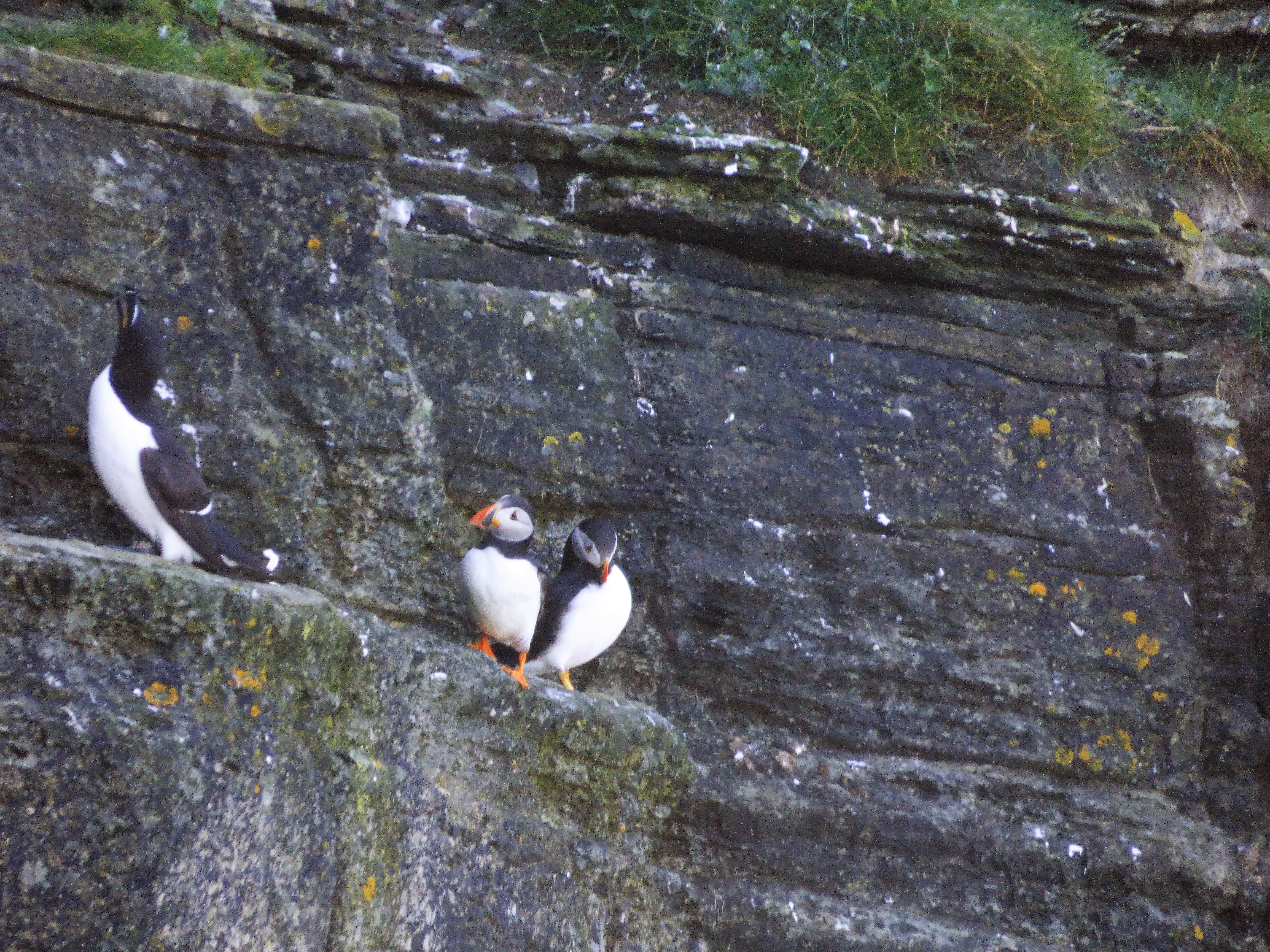
Our tour group had a long lunch at a local brewery before heading to another part of the Orkneys. We stopped briefly at the edge of the town of Twatt, then drove to Birsay. The Brough of Birsay is a small island just off Mainland. It’s accessible by foot when the tide is low, so we were able to walk across. It’s currently an uninhabited island, but there are both Pitctish and Viking ruins there. It was a gorgeous walk around the island, with incredible views in every direction. We also saw some puffins! Back on Mainland, we stopped briefly in the town of Birsay, including a quick visit to the Church of St. Magnus.
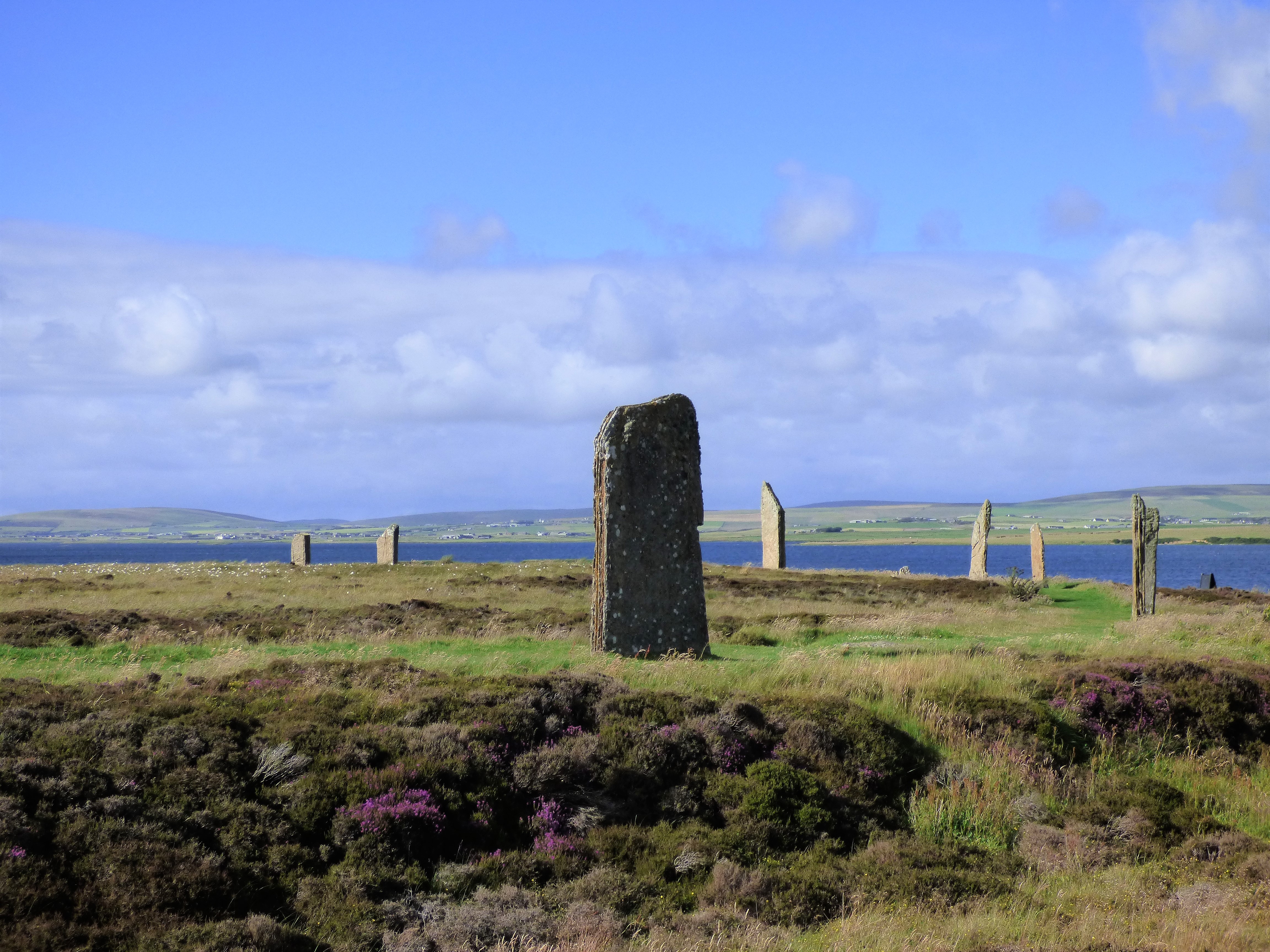
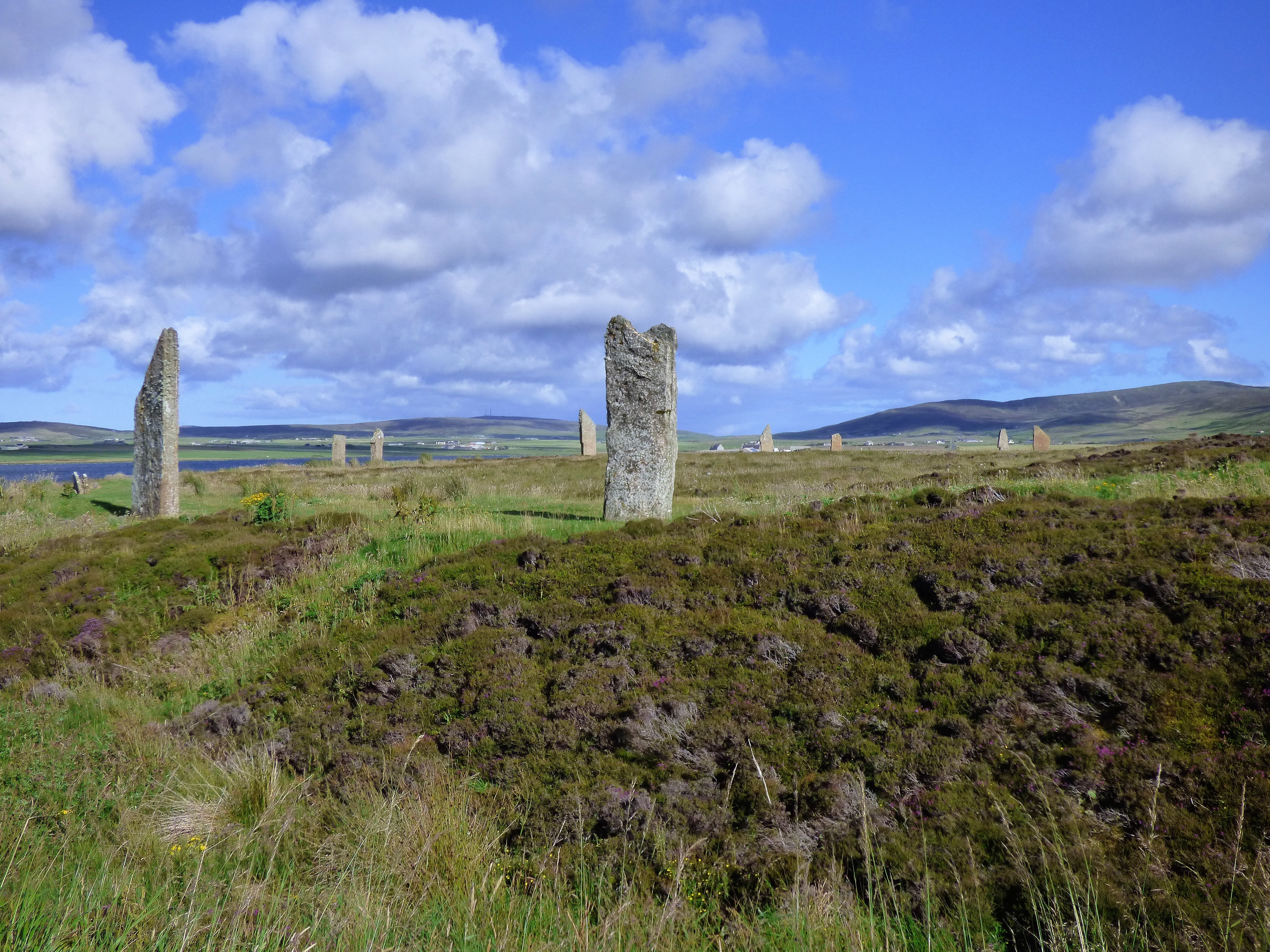
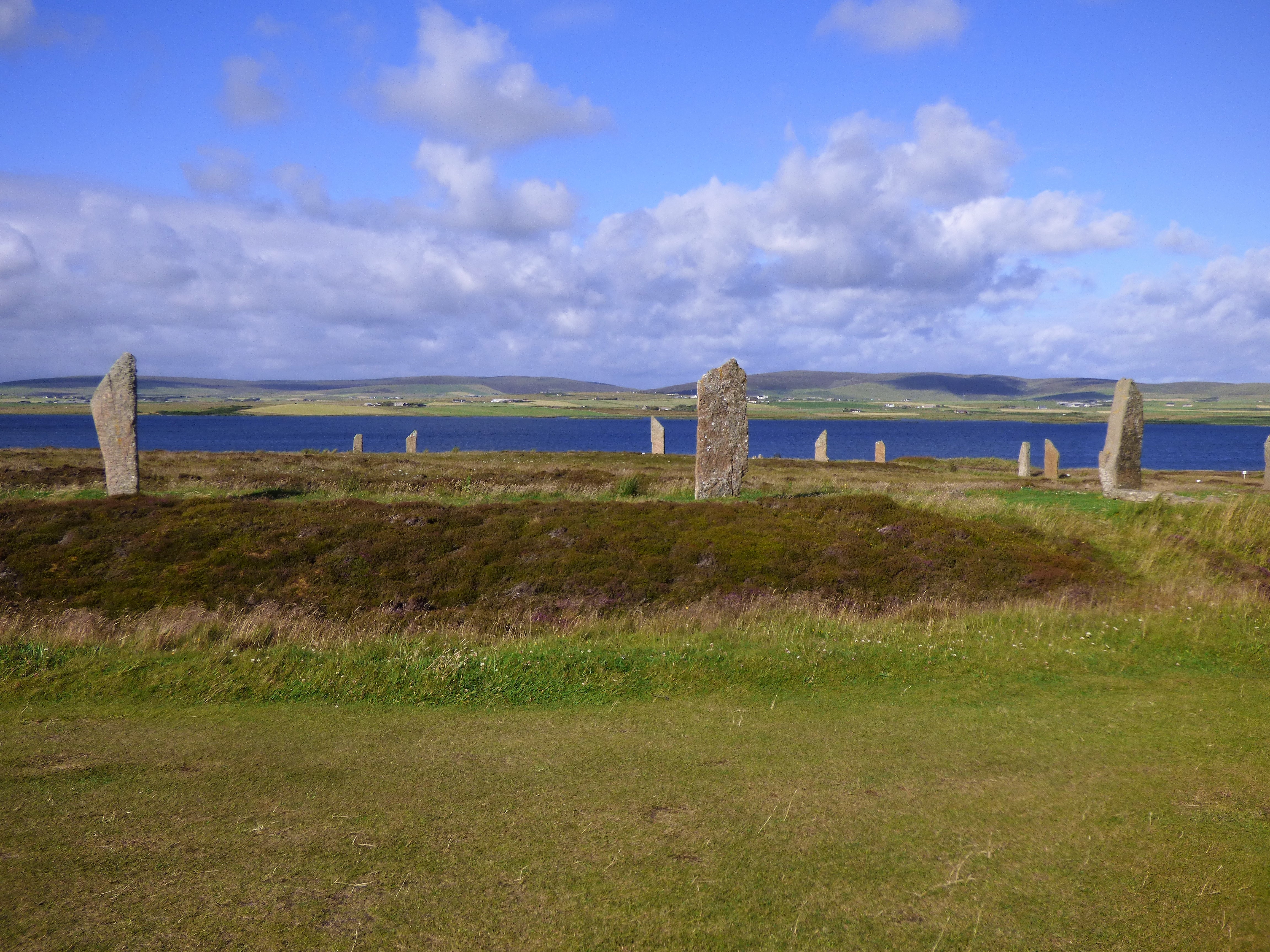
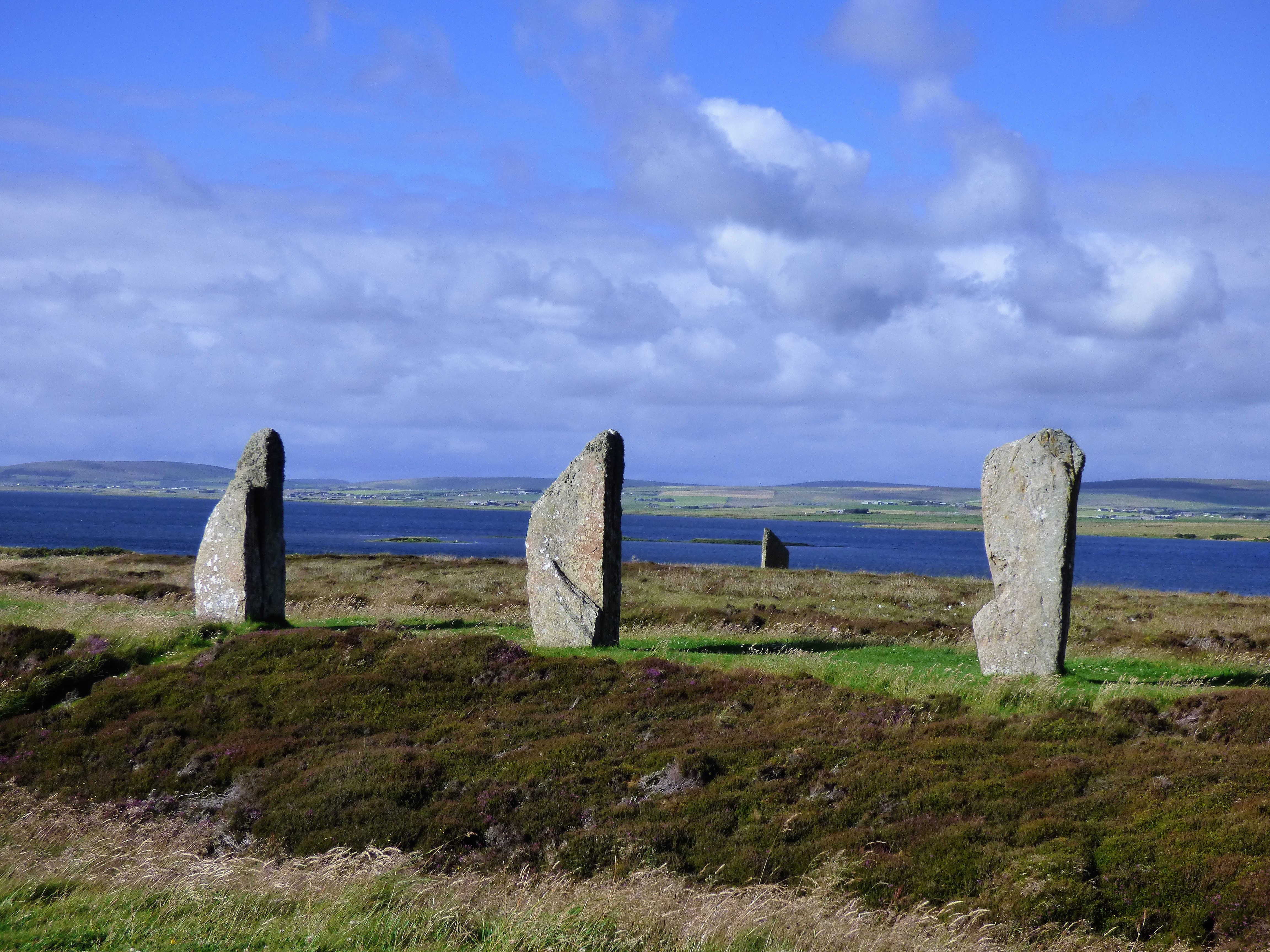
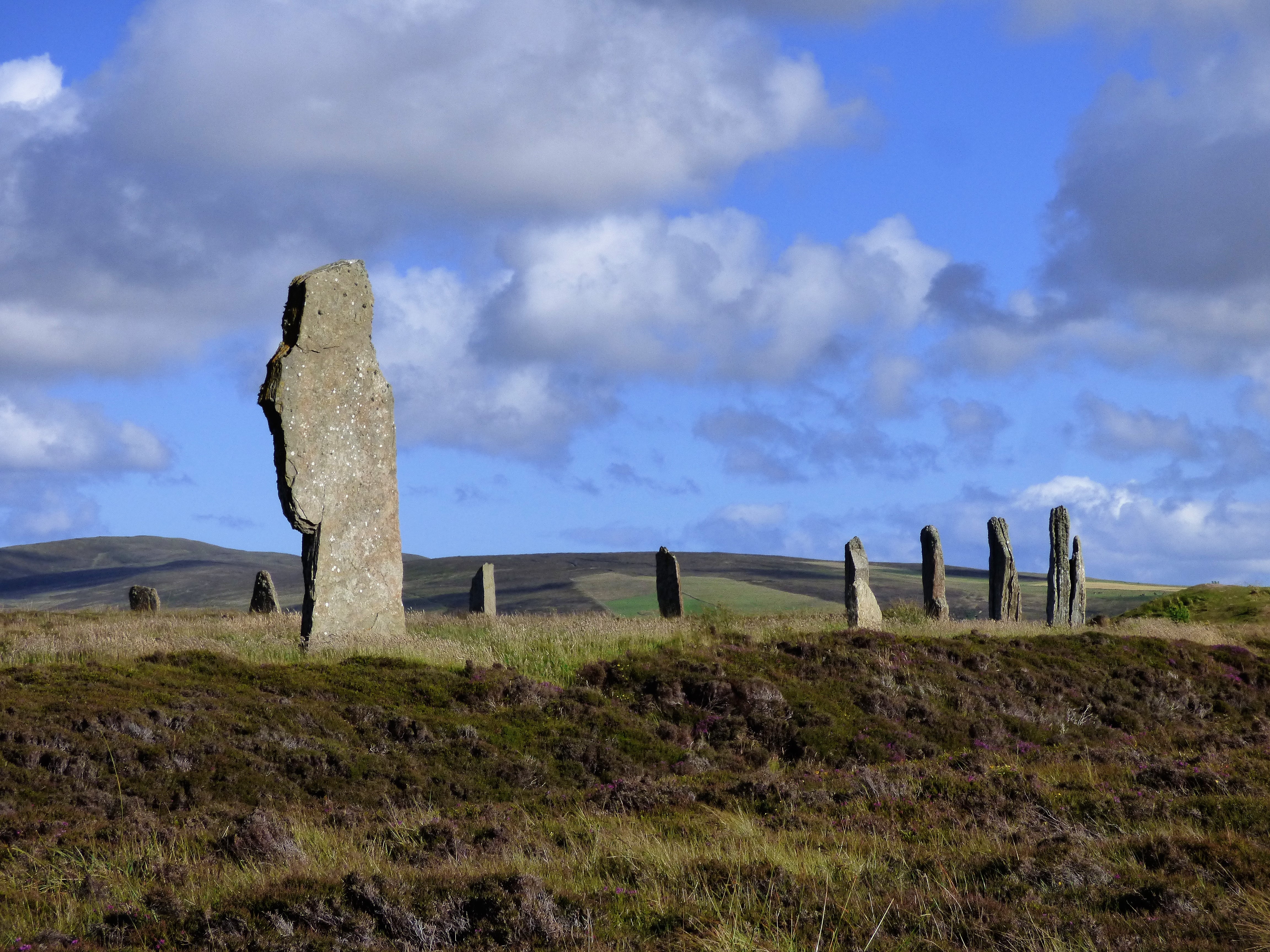
Our final stop of the day was at the Ring of Brodgar, another stone circle and henge that is about 5,000 years old. It is a massive ceremonial site that was originally made up of 60 stones (36 of which are still standing). It’s exact purpose is unknown. This is another free site to visit. Generally, you can walk up to the stones, but when we visited, they were limiting walking near the stones due to erosion of the soil. We had the site almost to ourselves.
day 8: North Coast 500 to Ullapool (Betty Hill, Smoo Cave, Sango Sands, Ardvreck Castle), Ullapool
This was one of the longest days of travel. In the morning, we stopped at Tesco, where we were told to get food for the entire day, then left the Orkneys via ferry out of Stromness. We then drove along the North Coast 500, which is a 500-mile long road across the top of Scotland. We drove about 250 of the miles, with only a few stops. It was a long drive, but the views were STUNNING. Every single time we rounded a turn, there was another stunning scene. We drove through some very remote areas, past sandy beaches and rugged mountains.
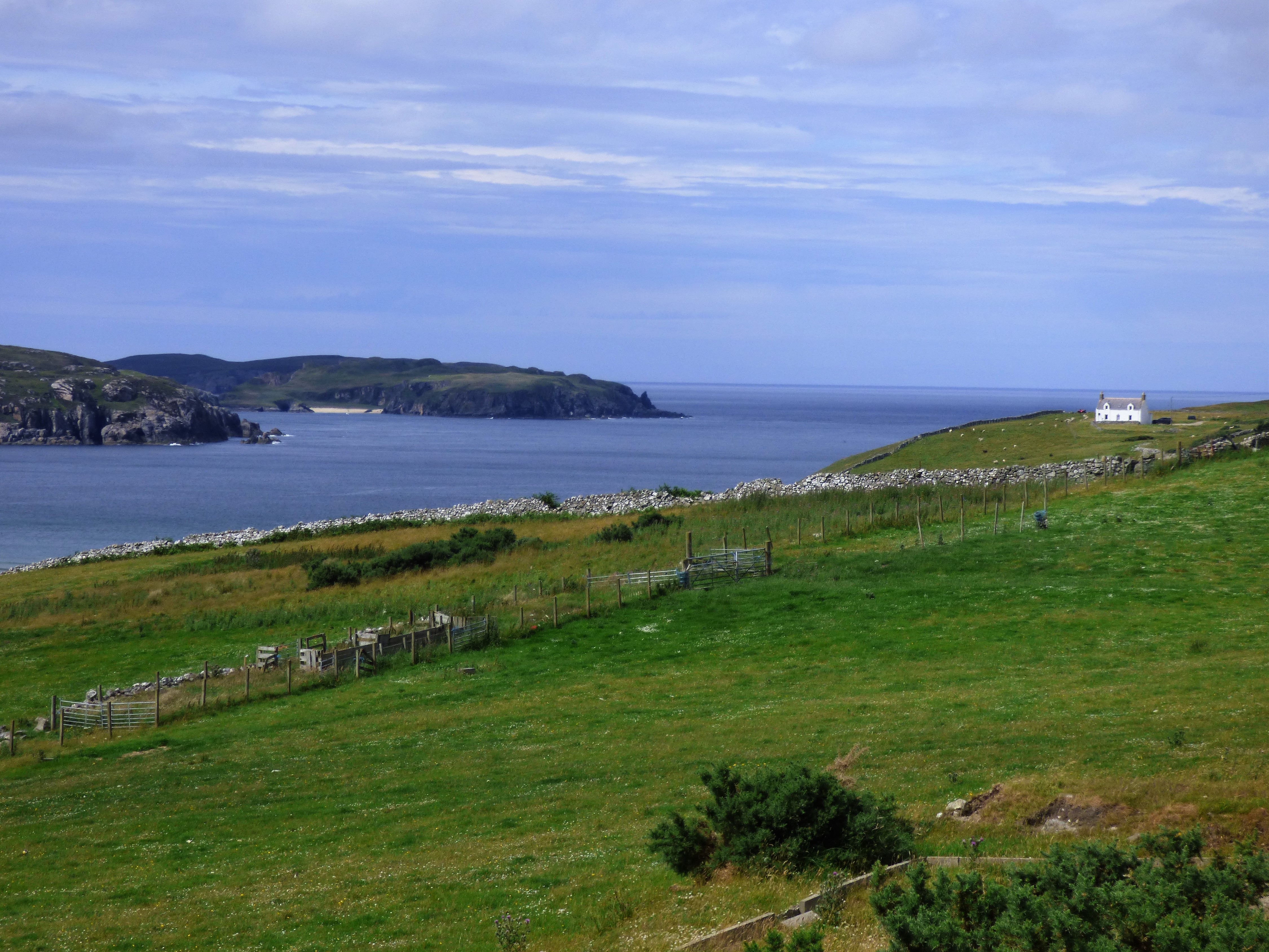

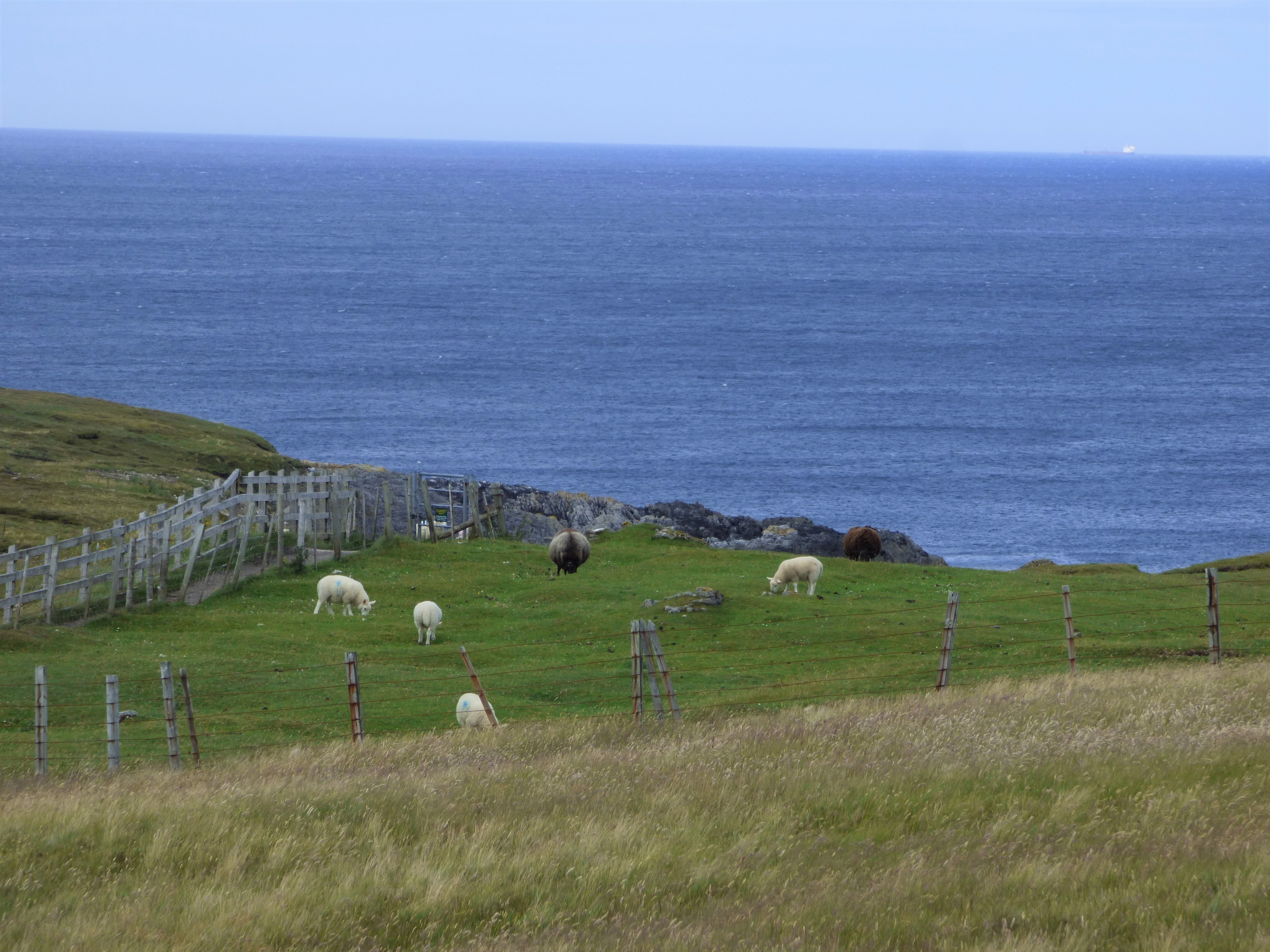
We made only a few stops. The first stop was at Bettyhill, which has a beautiful sandy beach.
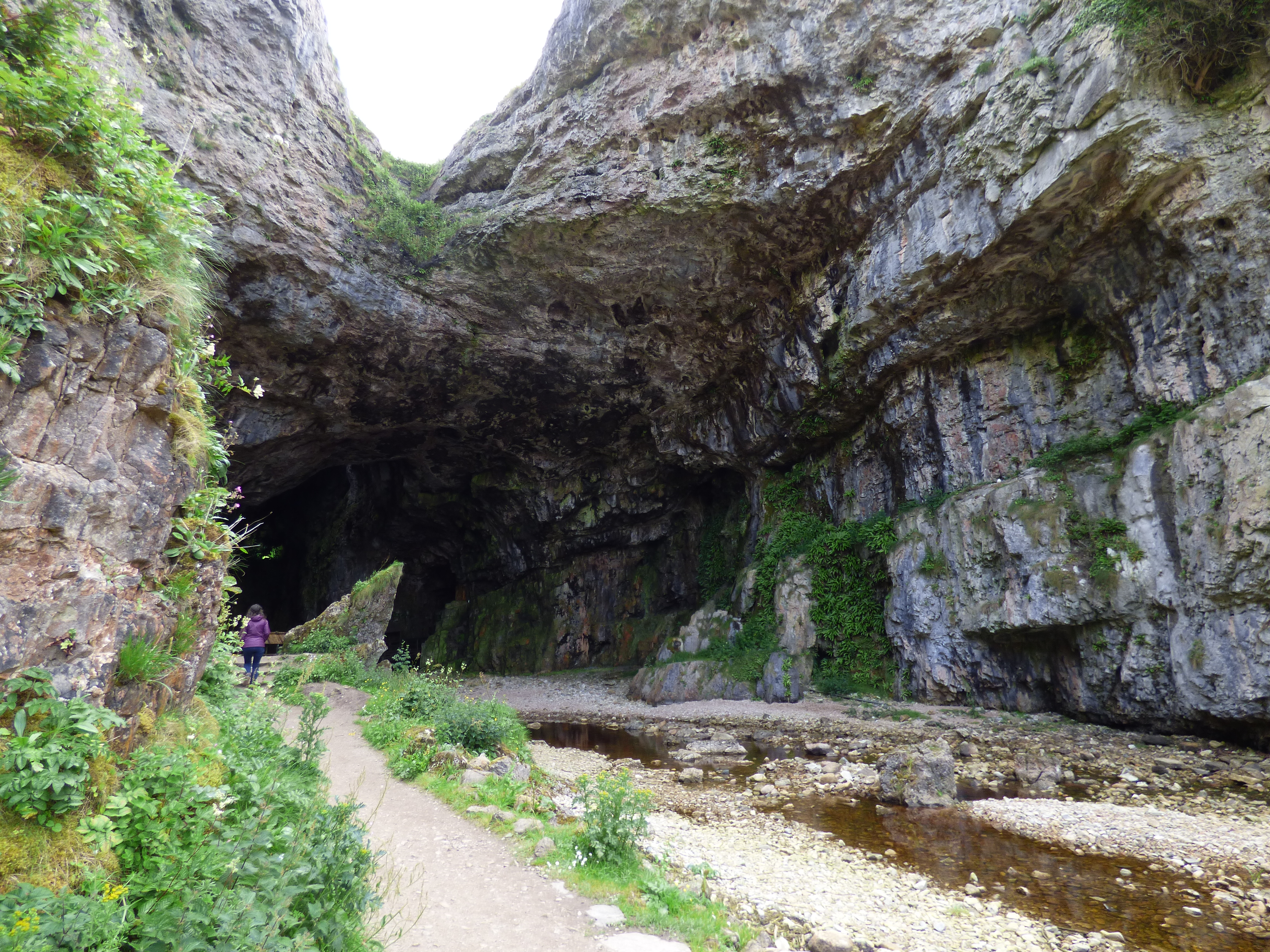
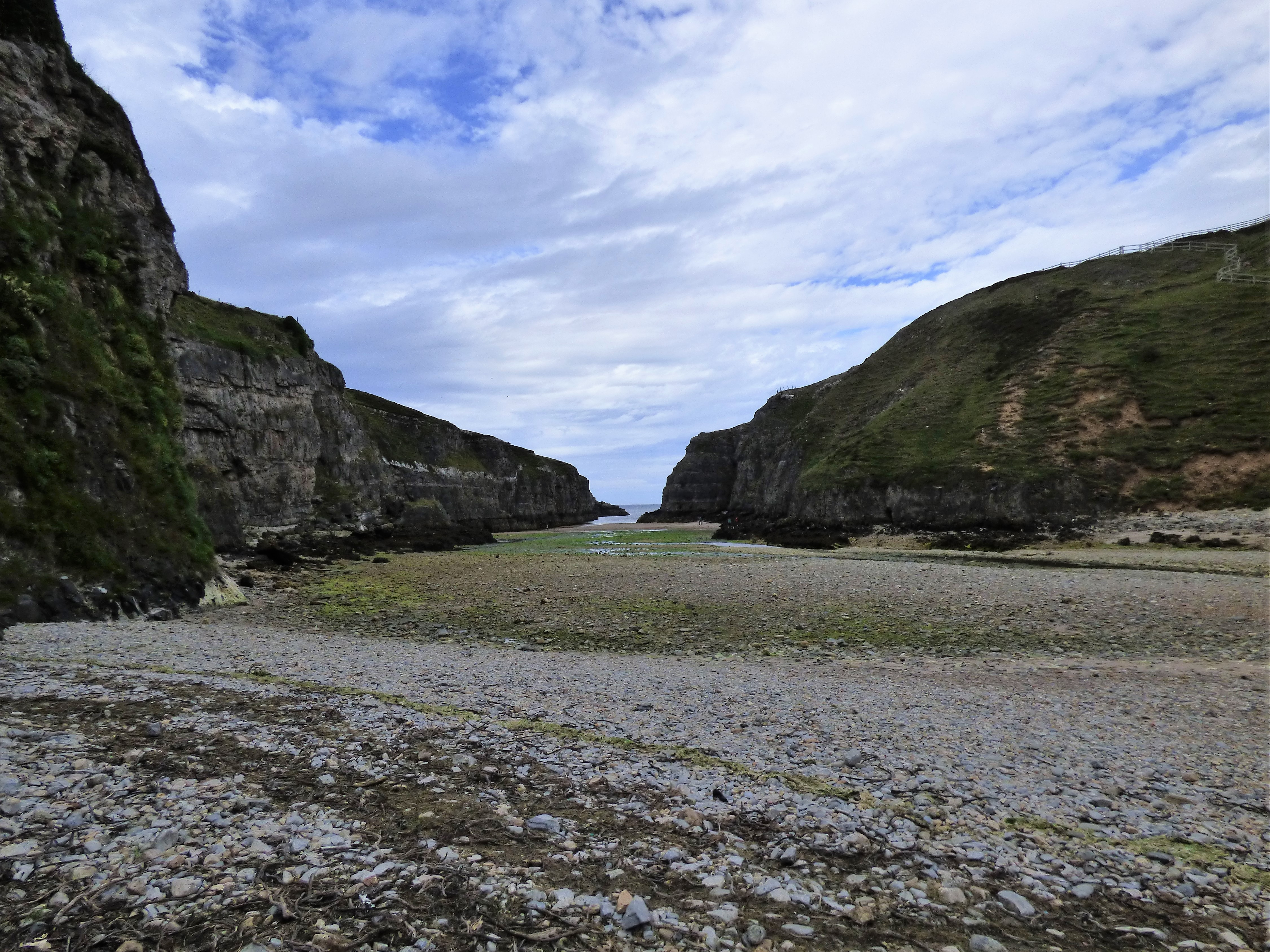

Then we stopped at Smoo Cave, a large sea cave believed to have been used by smugglers throughout the years. It normally has a really cool cave waterfall, but there hadn’t been enough rain.
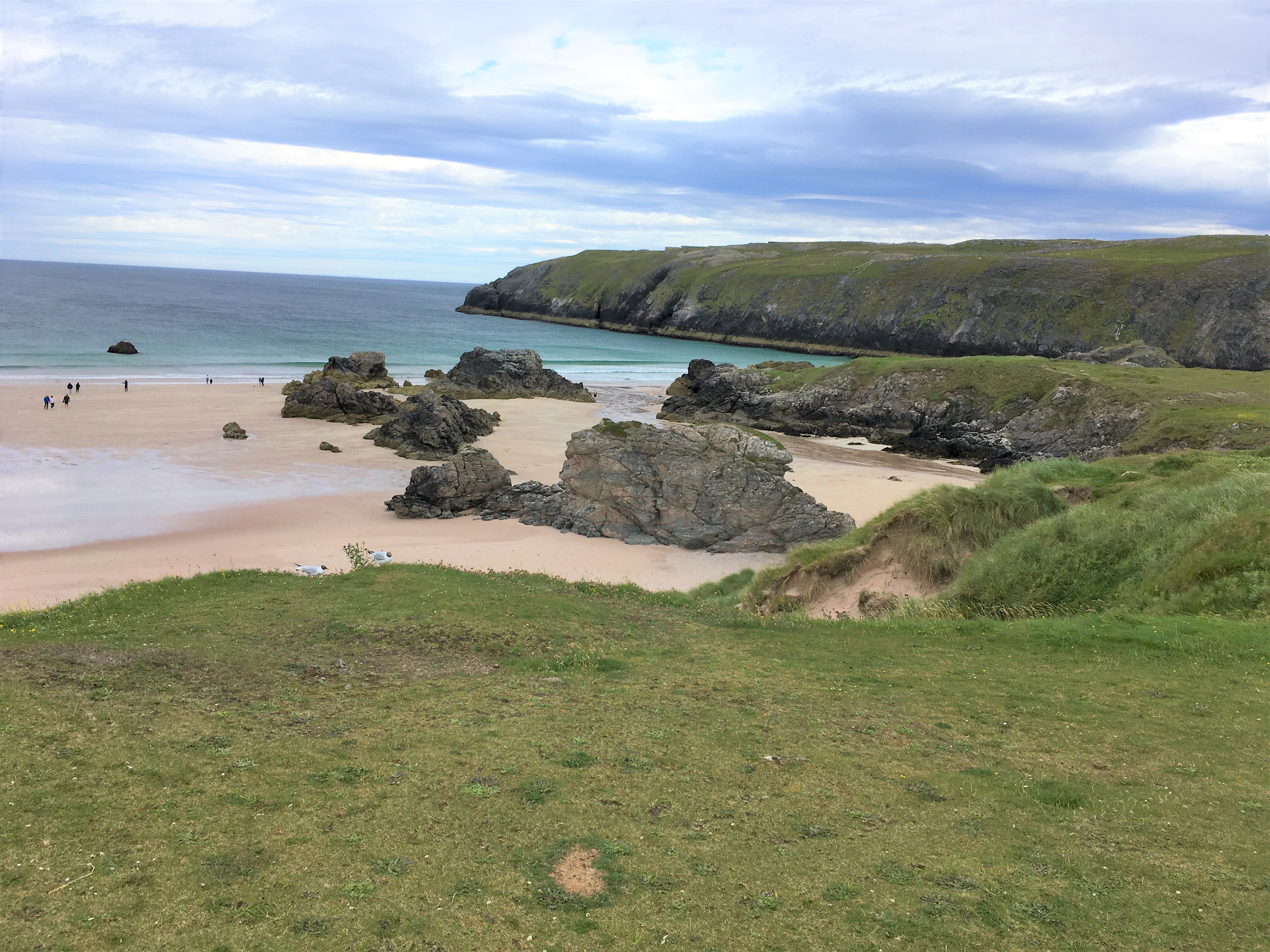
We made a very brief stop above Sango Sands, another beautiful beach, where there was also a little store- I got ice cream and hot chocolate.

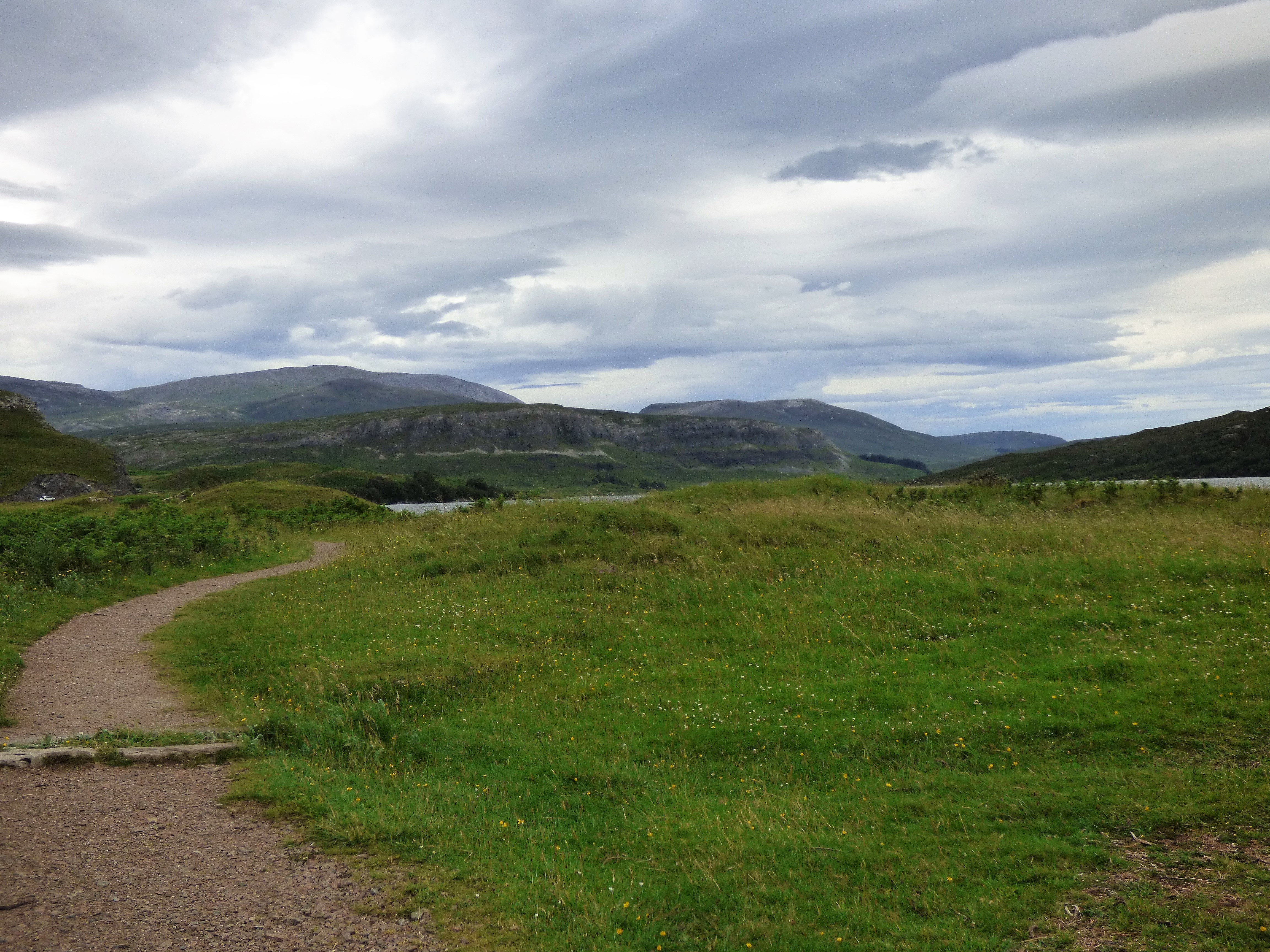
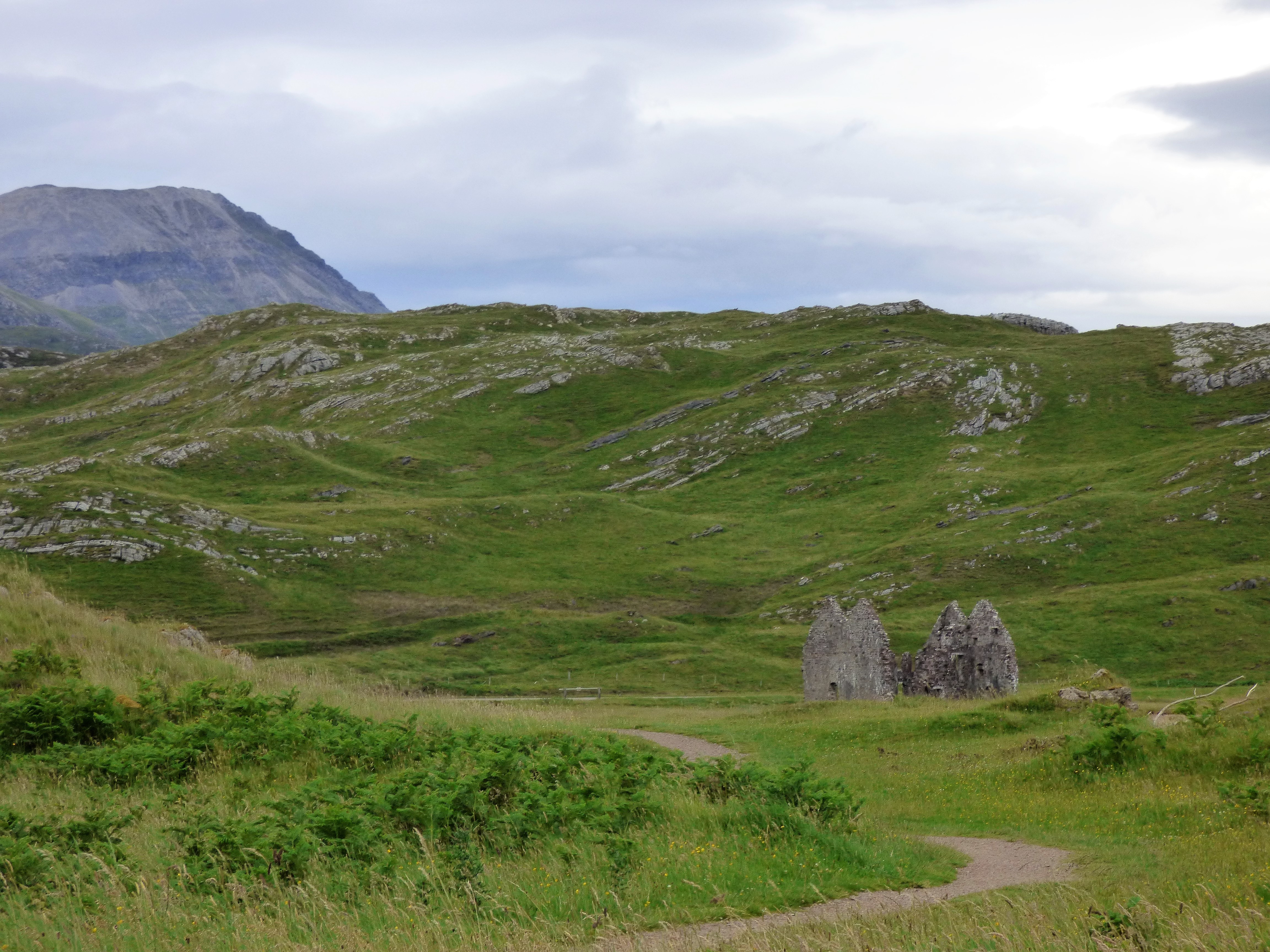
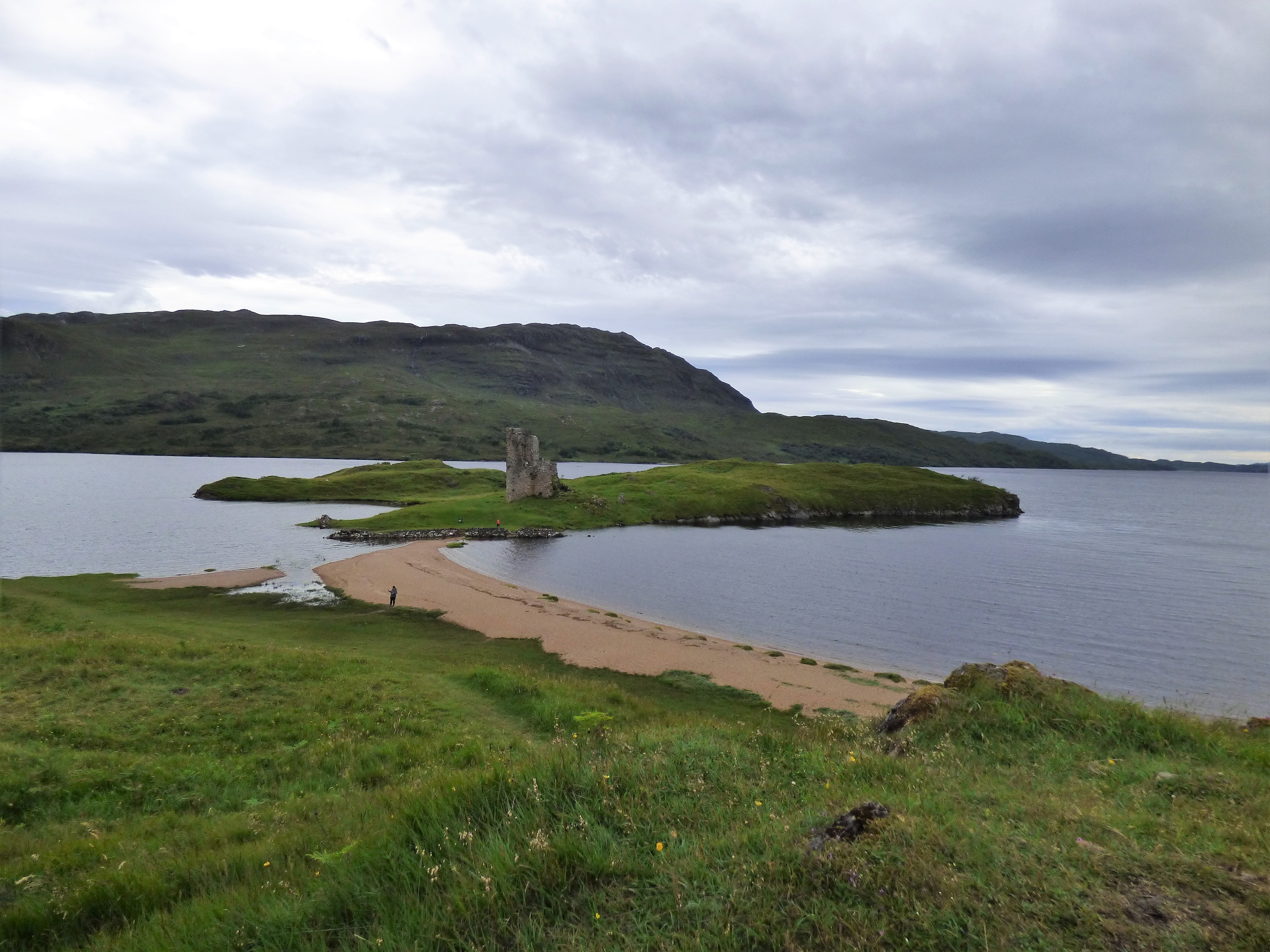
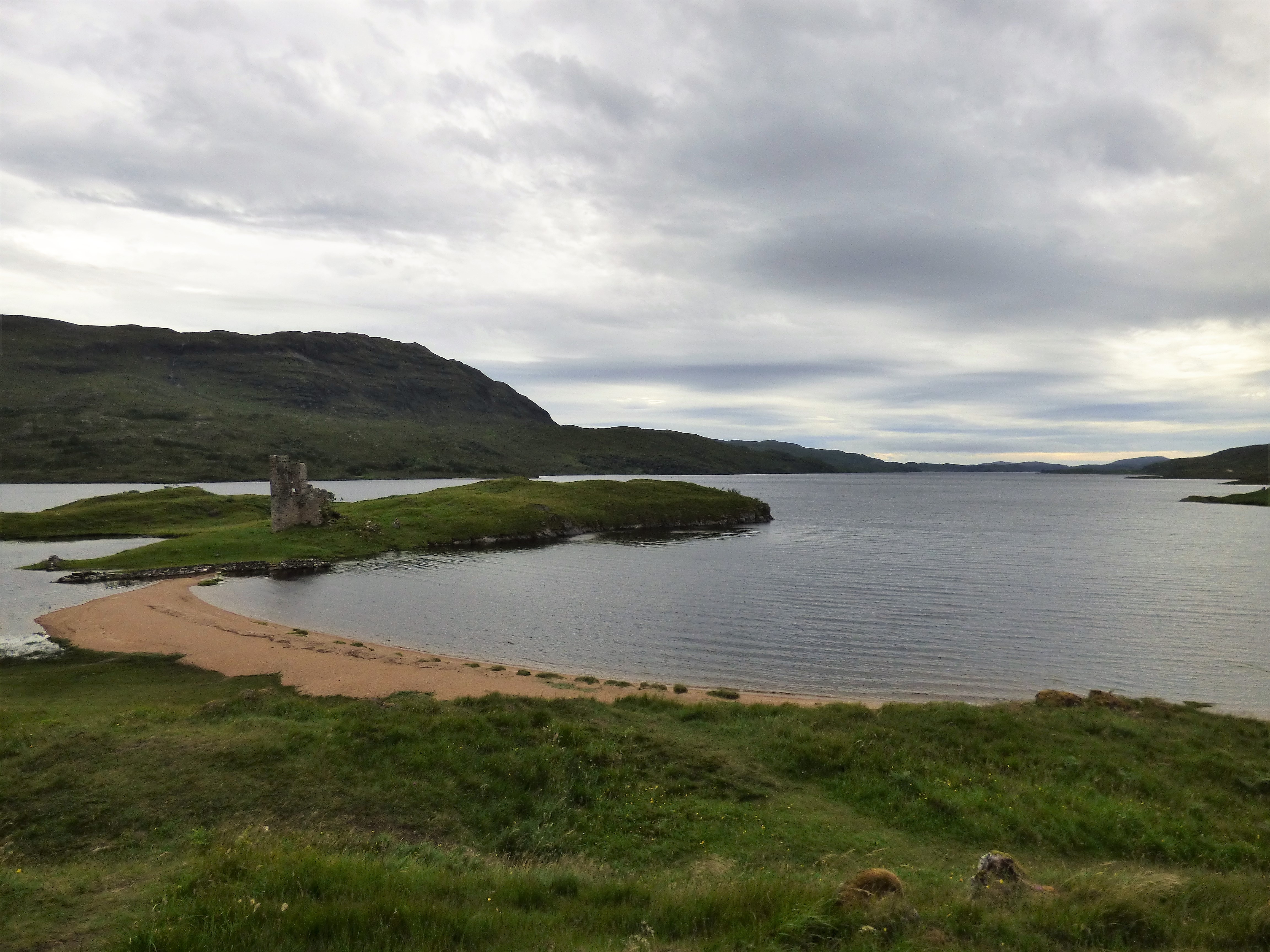
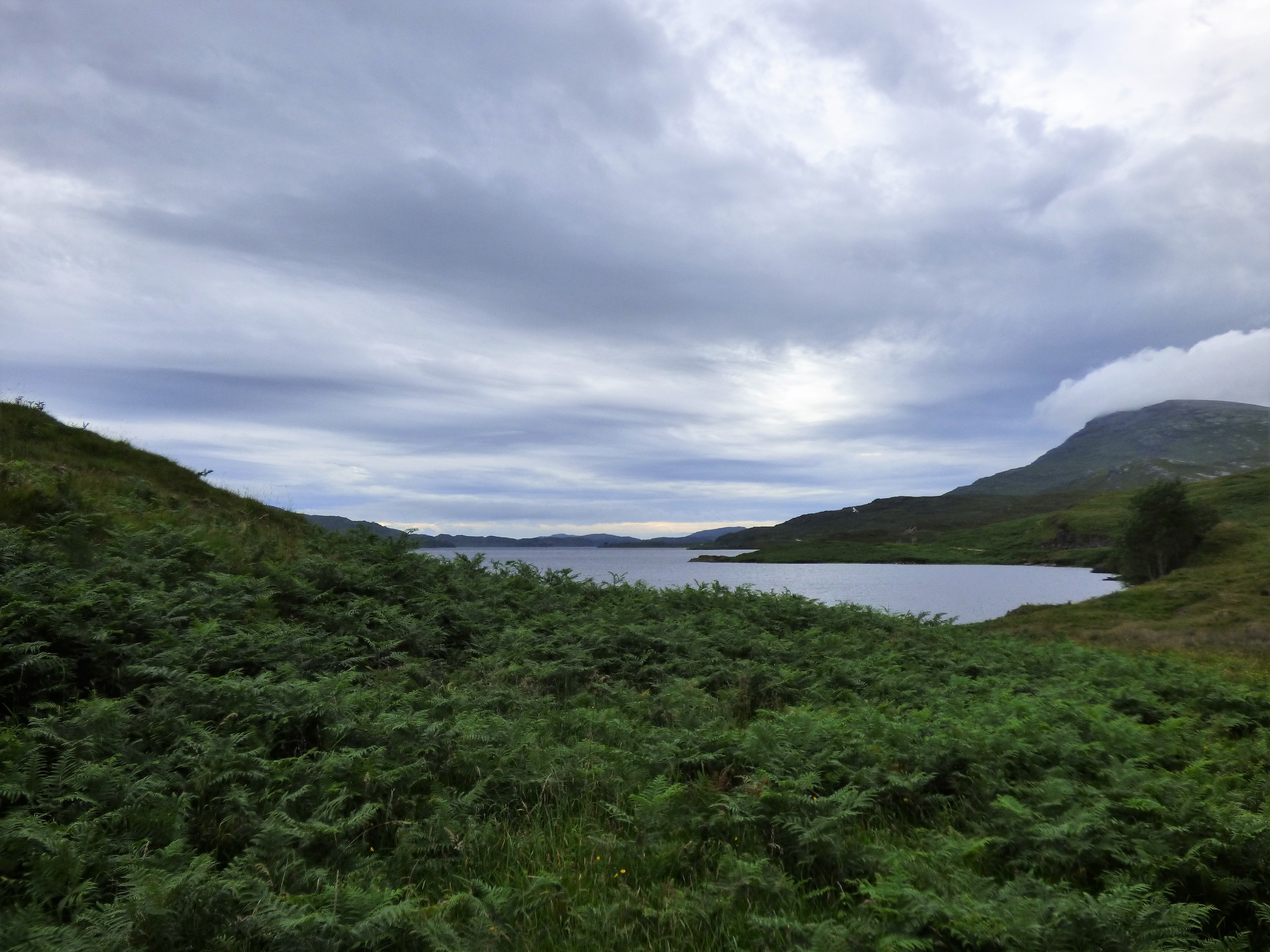
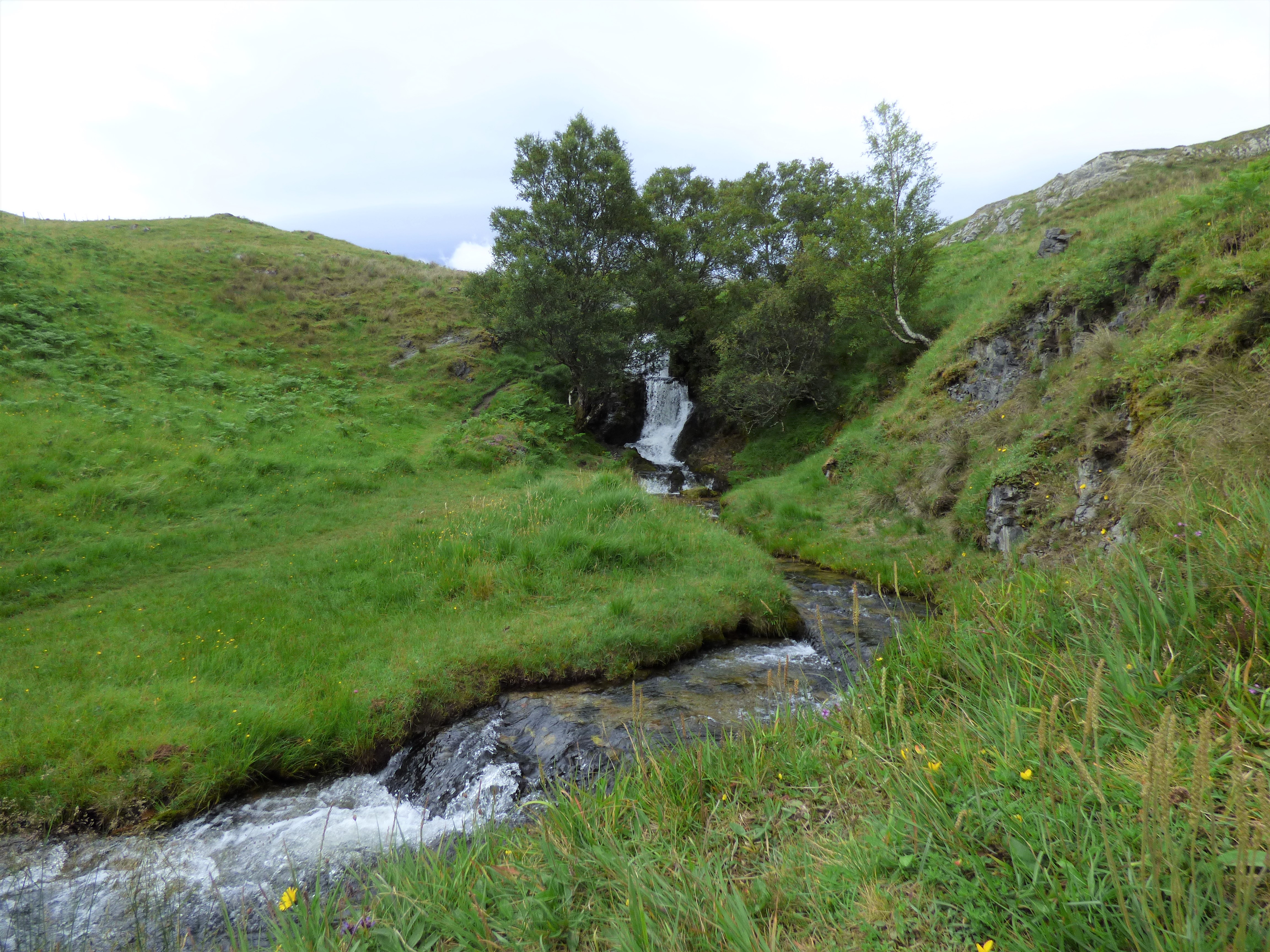
Finally, we stopped briefly at Ardvreck Castle before arriving in Ullapool, where the three of us doing the 10-day trip would spend two nights.
day 9: free day in ullapool
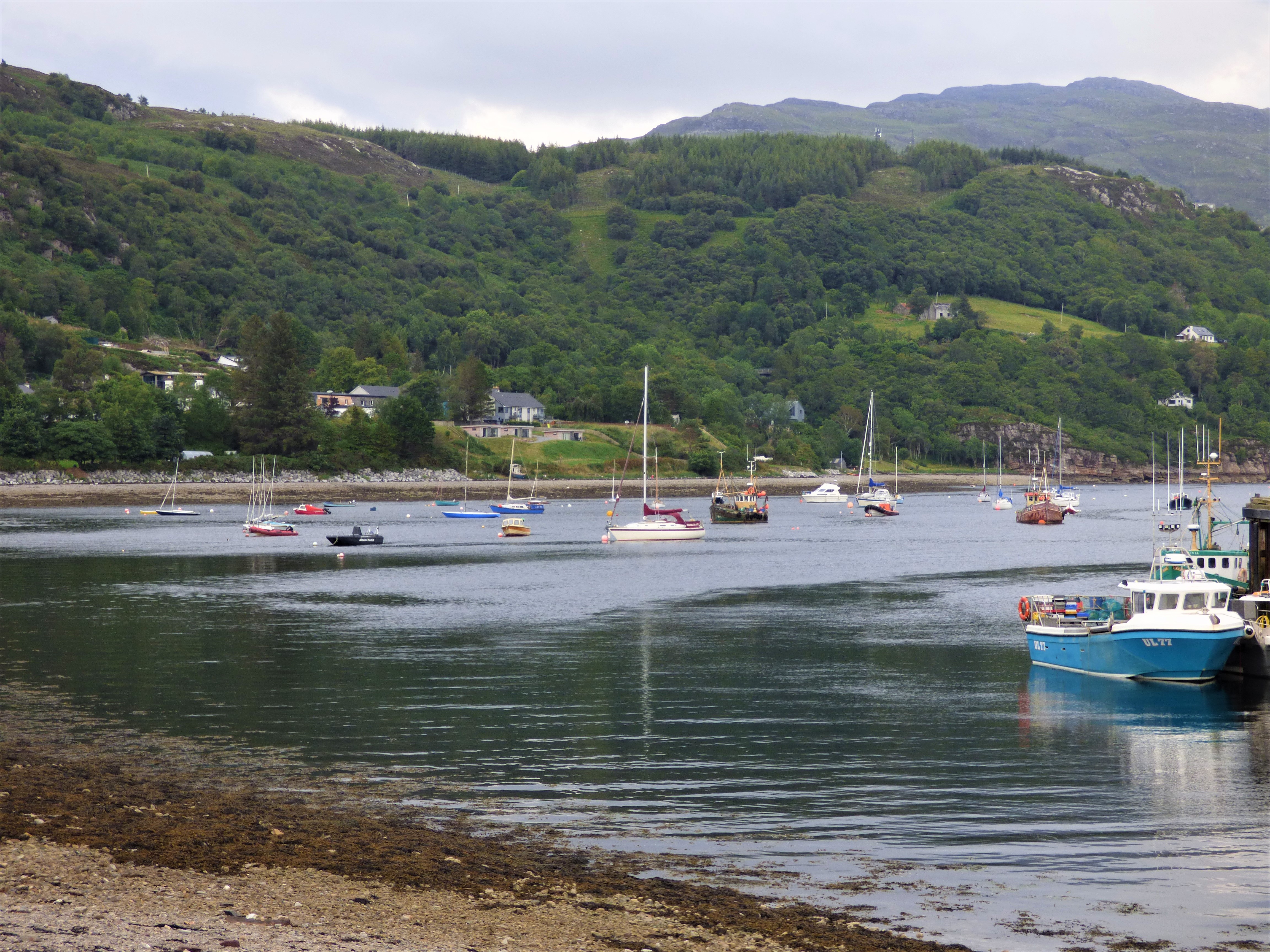
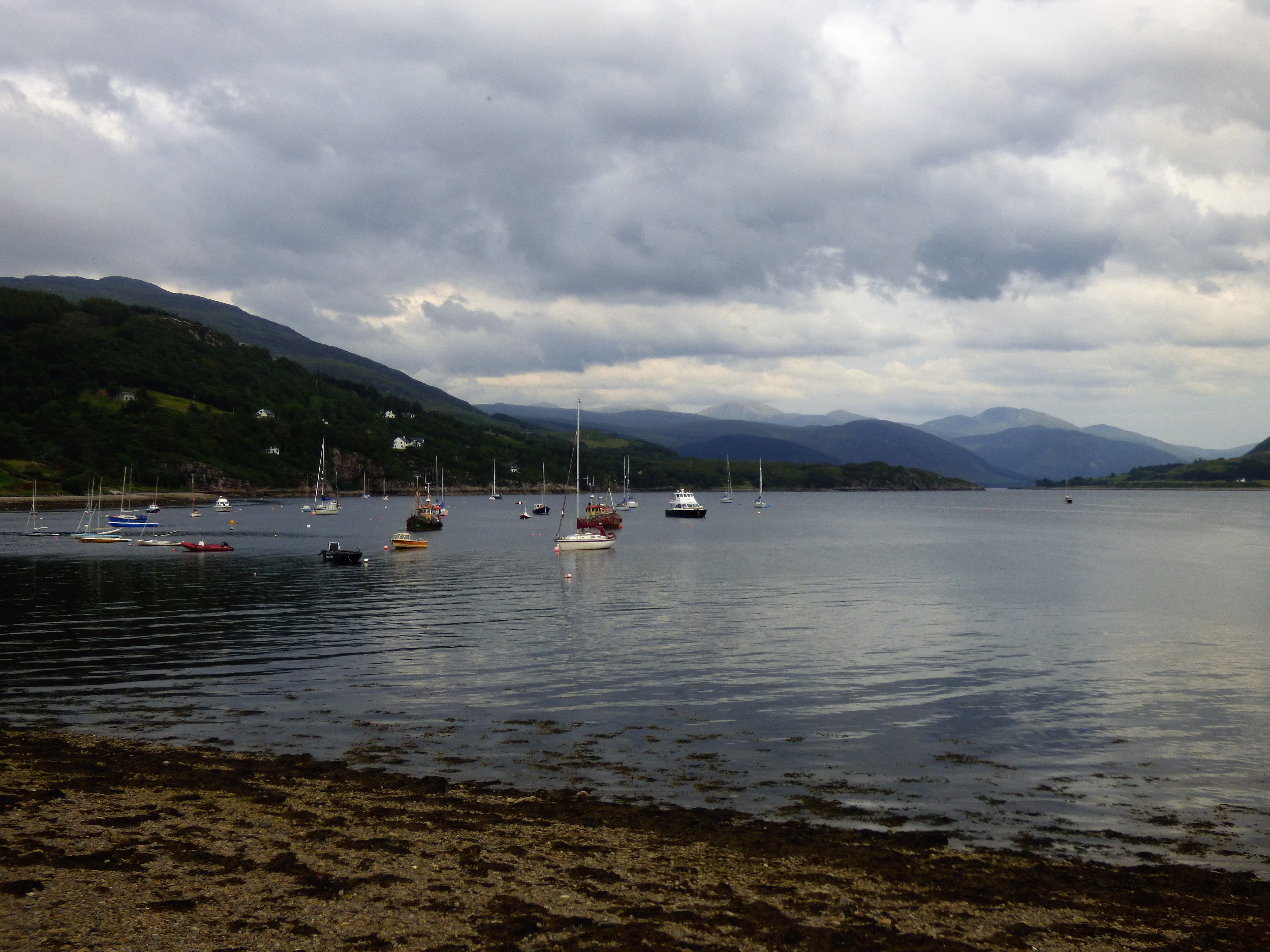
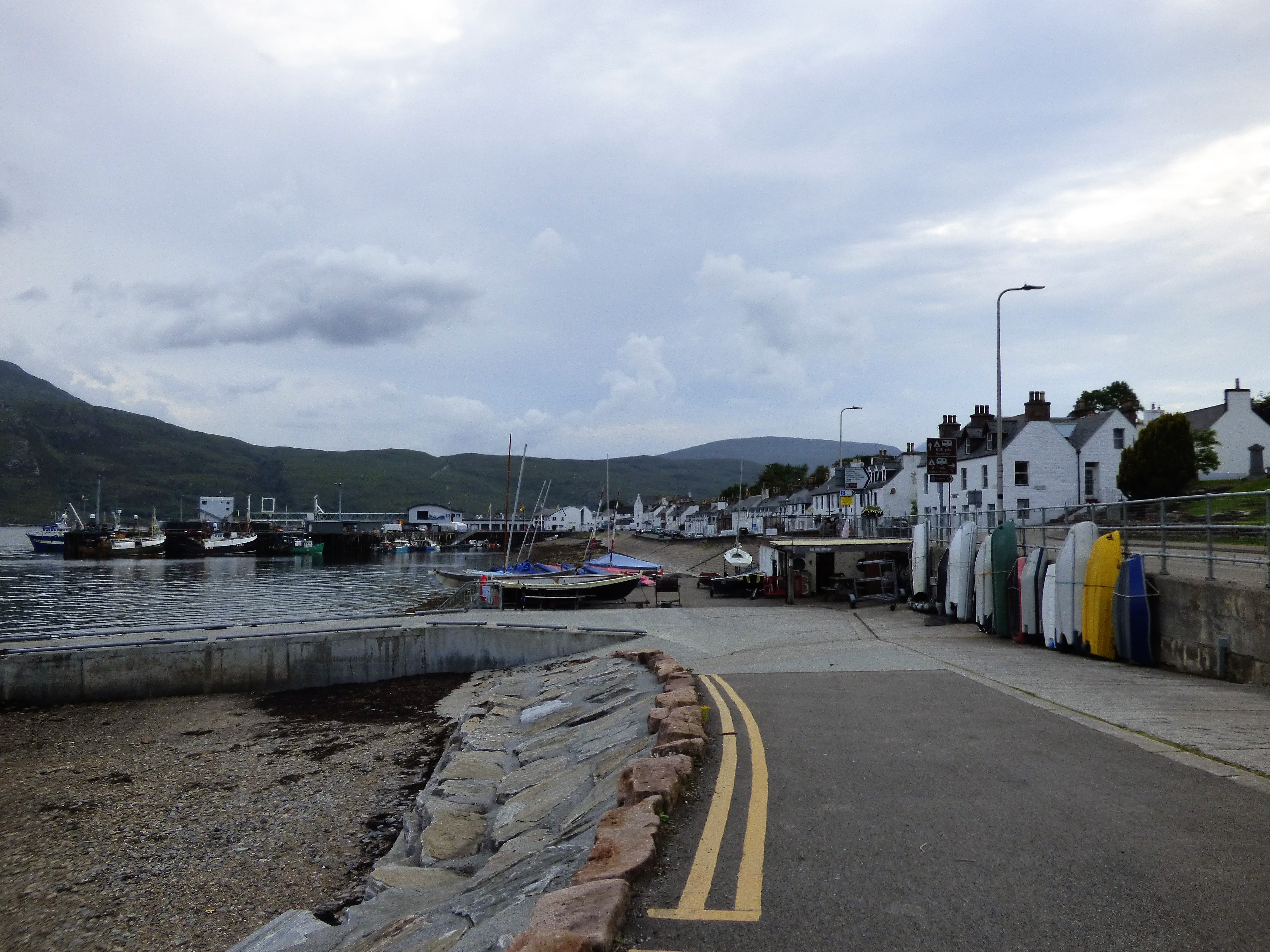
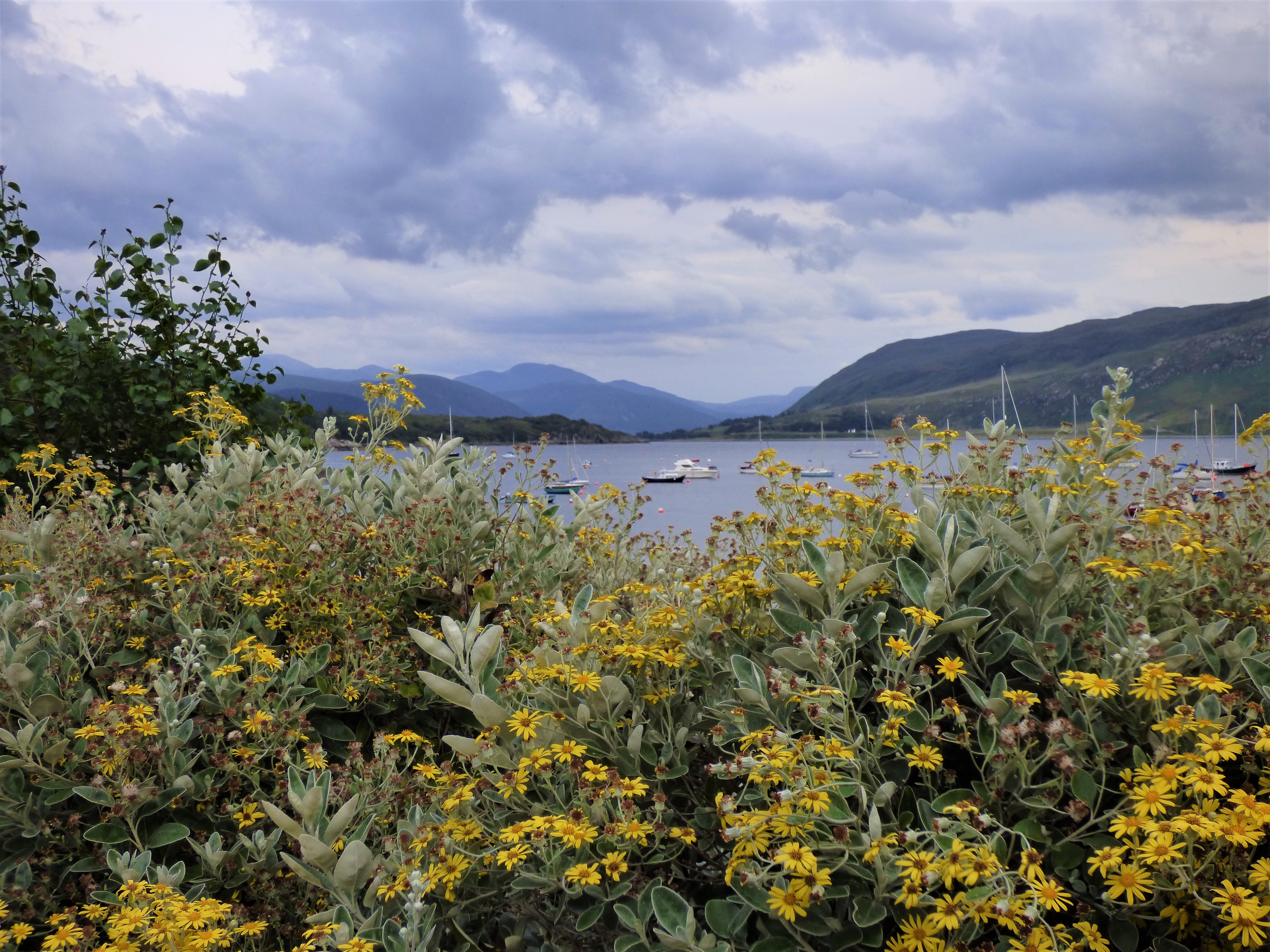
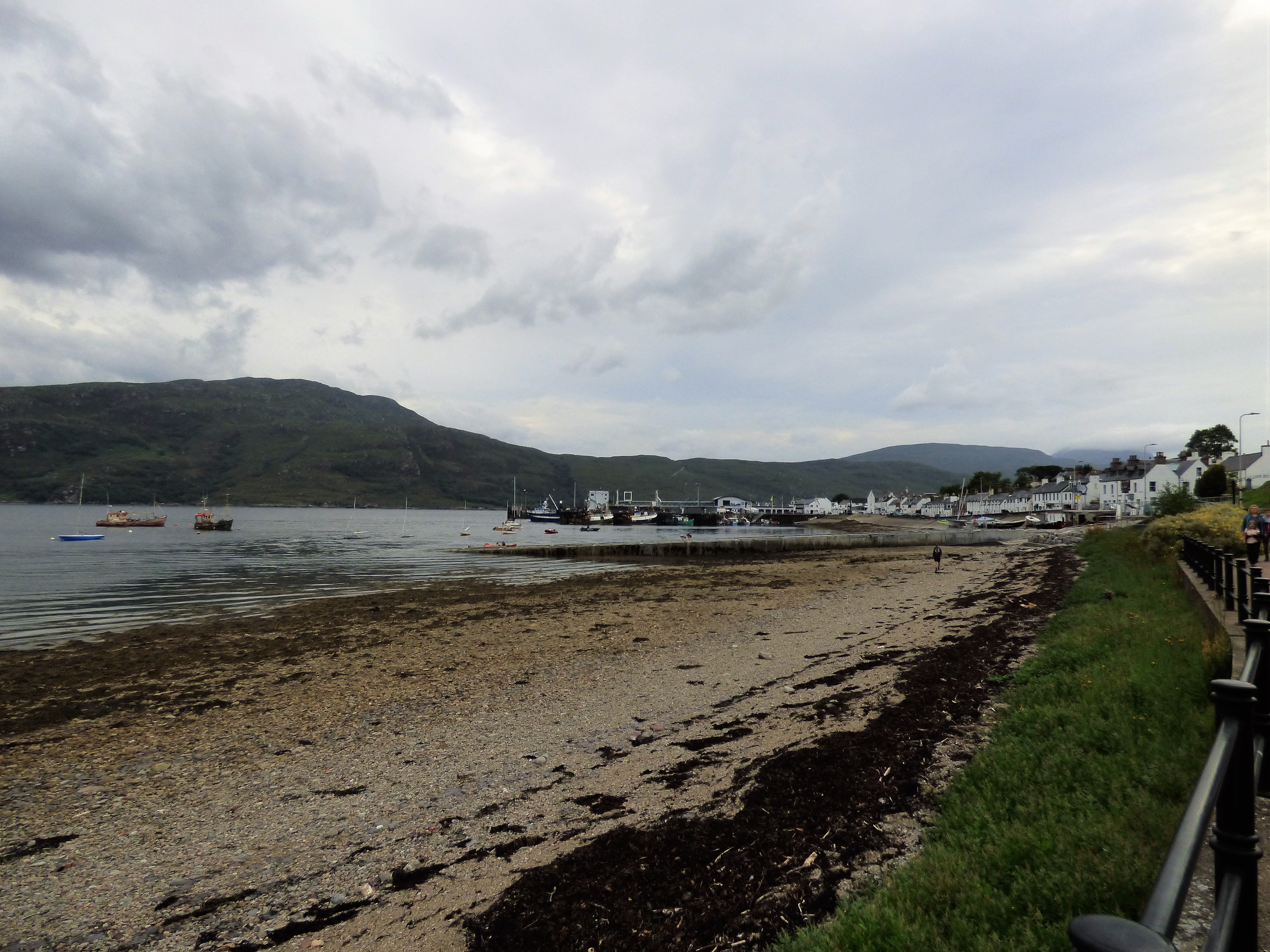
Ullapool is a small town on Loch Broom. Although a small town, it has a lot of restaurants and little shops because it is a popular stopping point along the North Coast 500. While three of the travelers in our tour group headed back to Edinburgh with our driver-guide, Jim, the other three of us (me, plus two sisters that I became friends with) stayed in Ullapool for a free day before joining our next tour group the following day. The previous four days had been very busy days and we had covered a lot of miles, so it was nice to have a day off to do some laundry, sleep in a bit, and just relax. I walked around the town for a while with my new friends. In the afternoon, I napped before taking another walk along the port.
